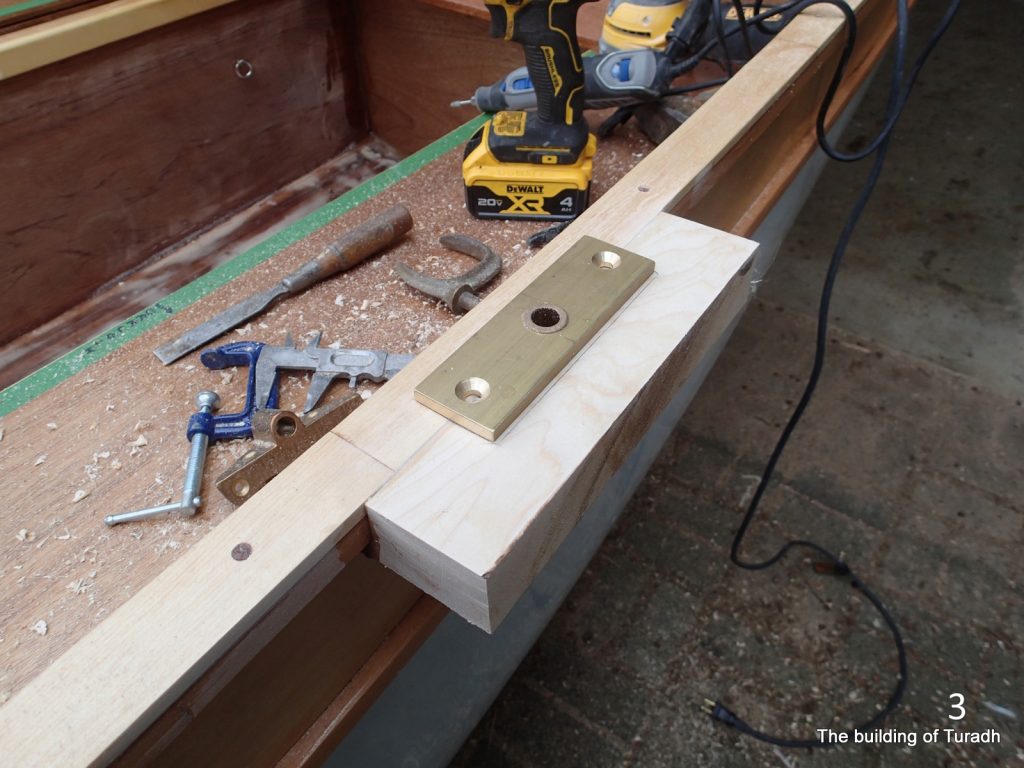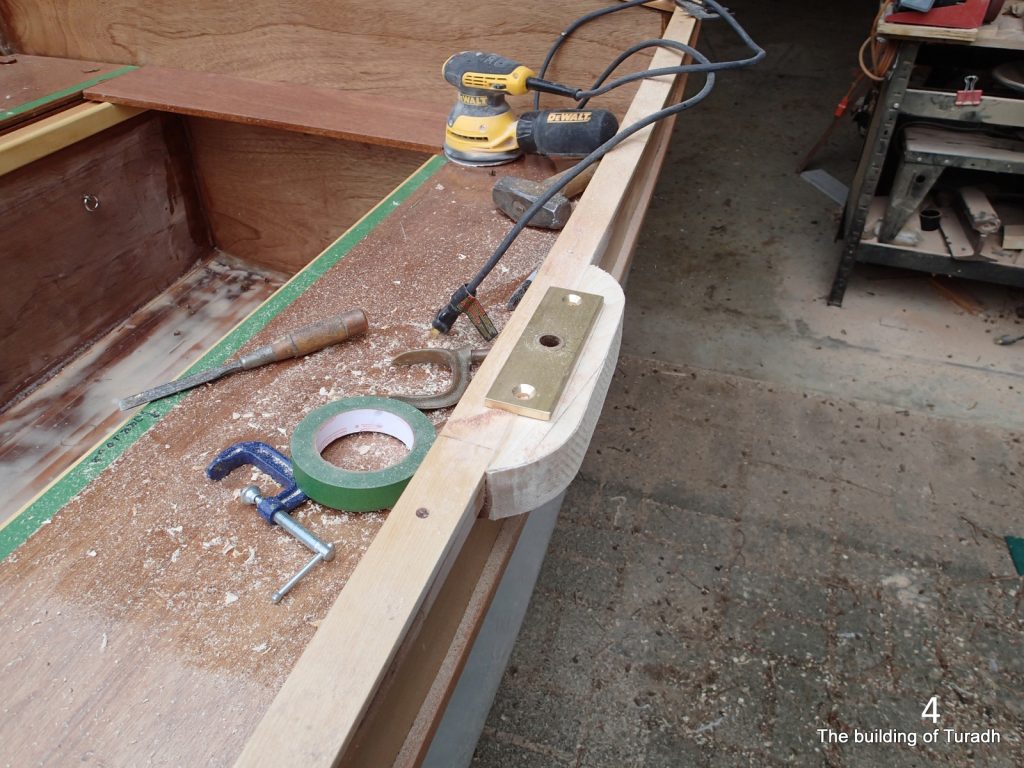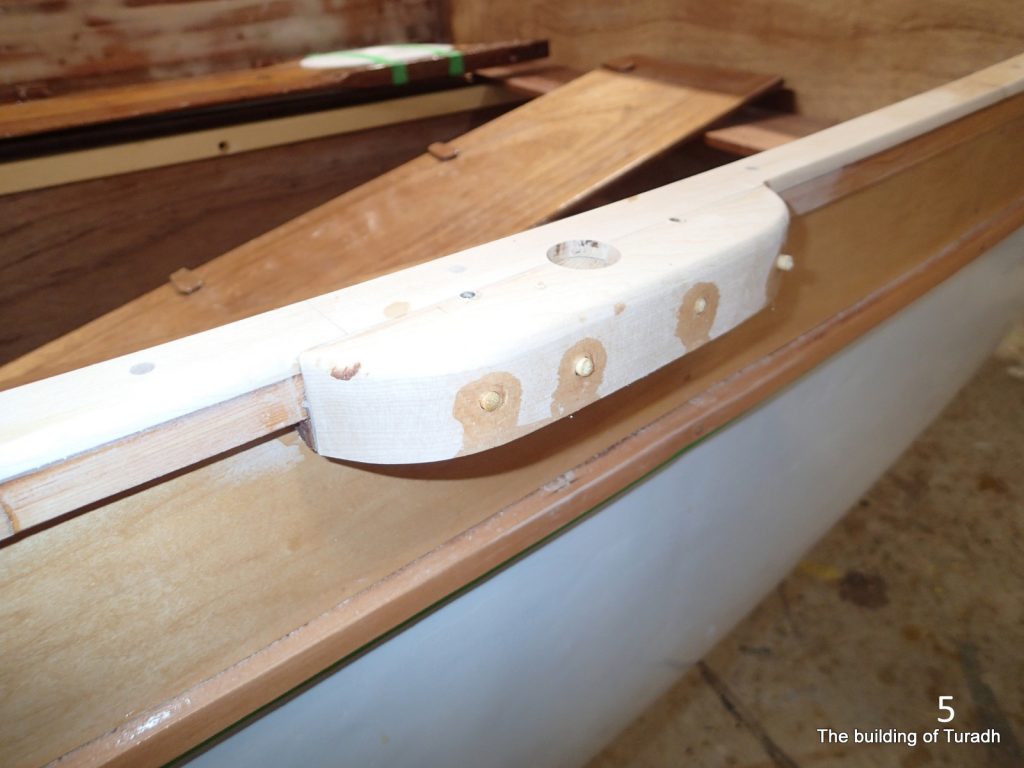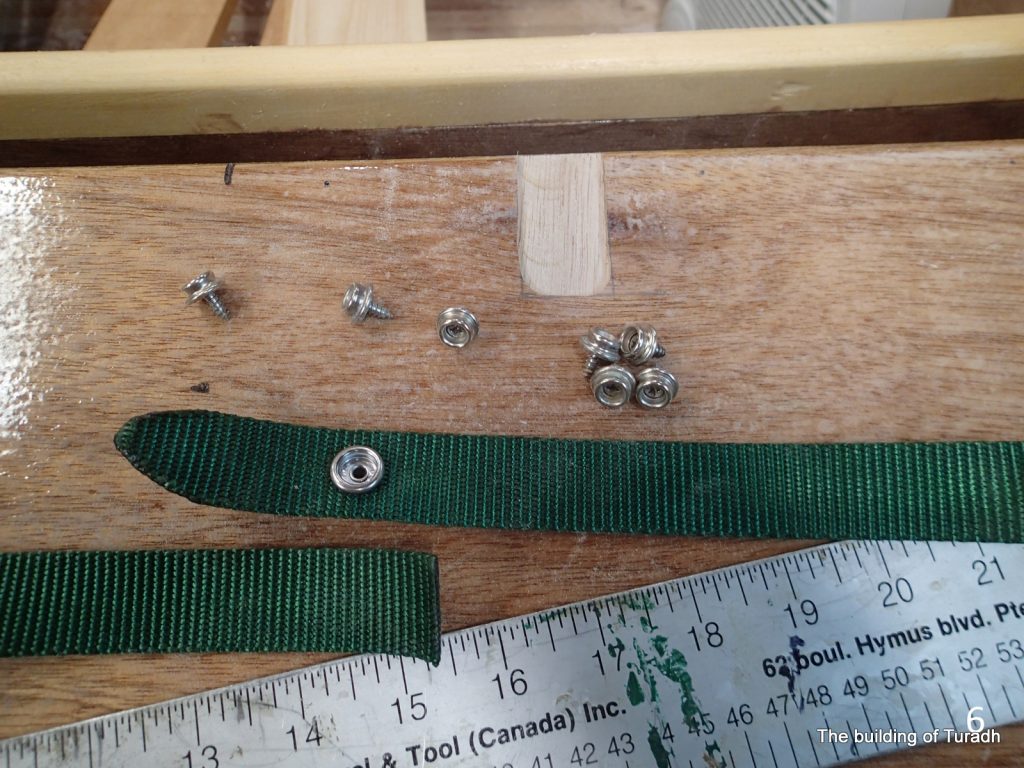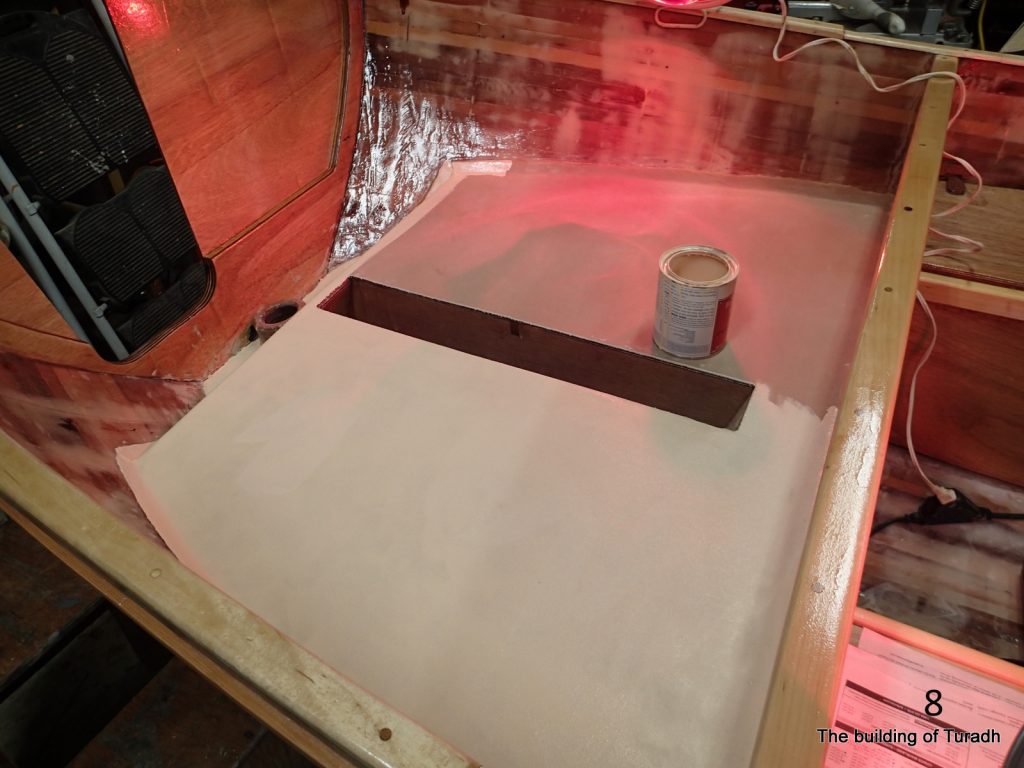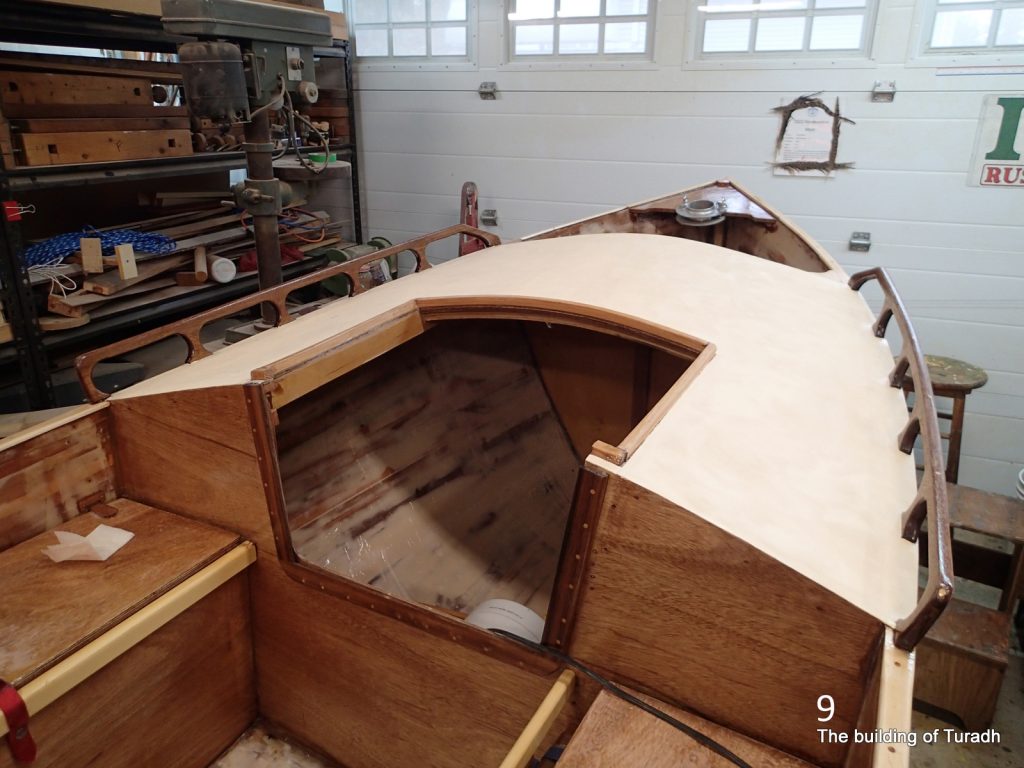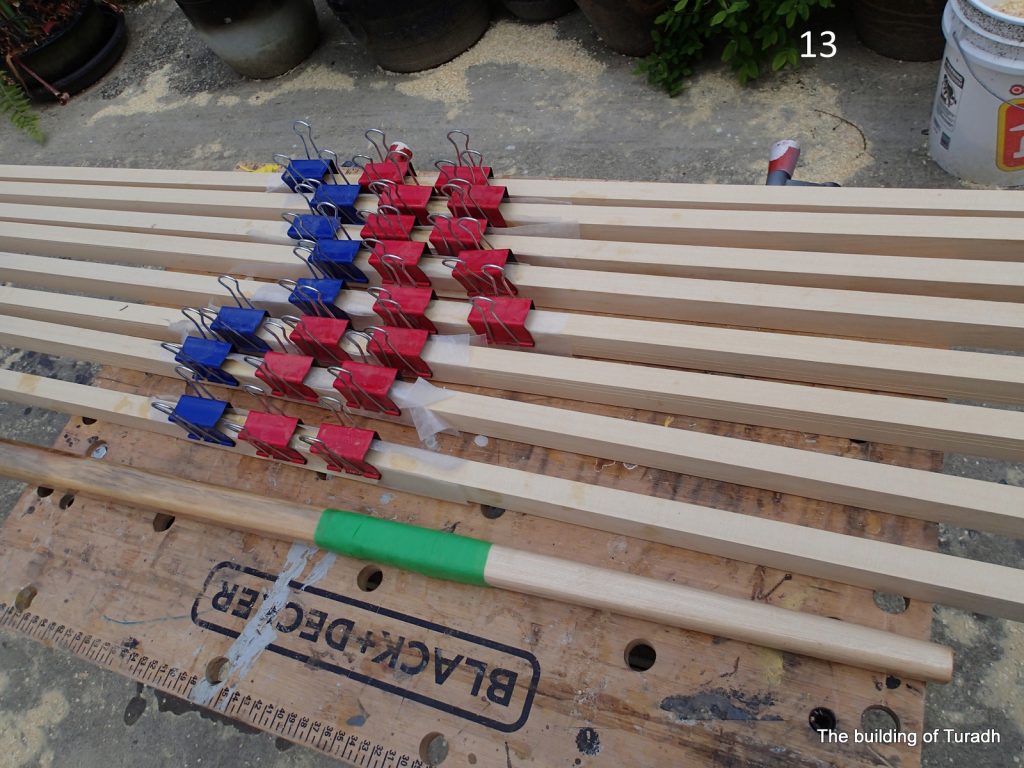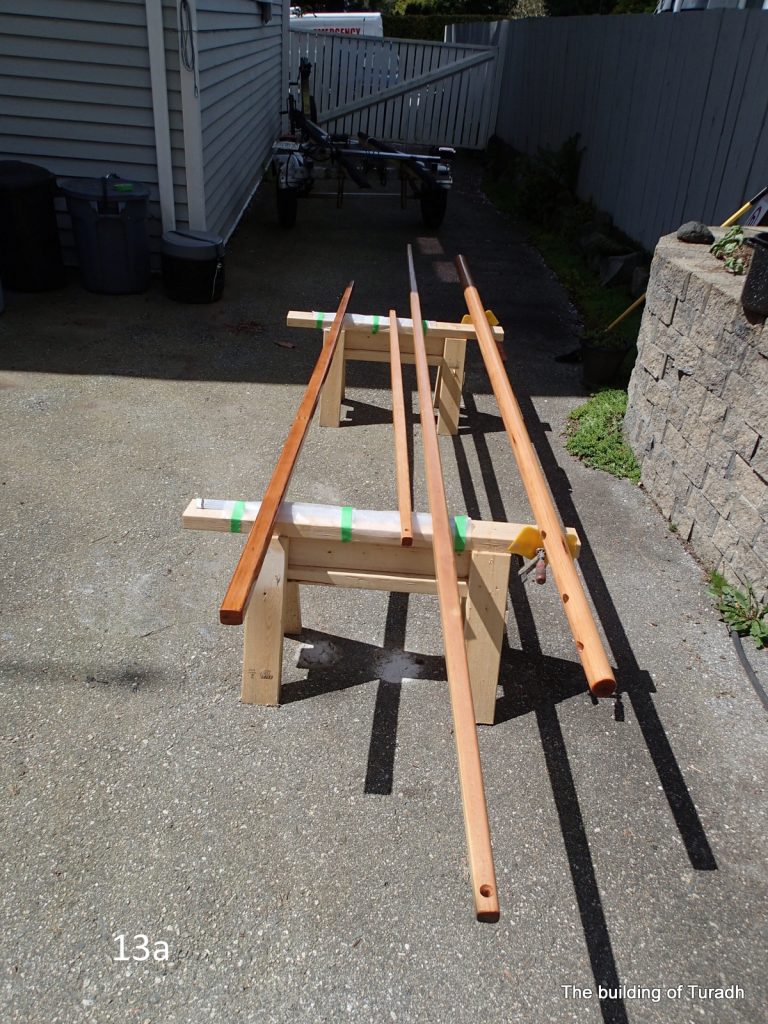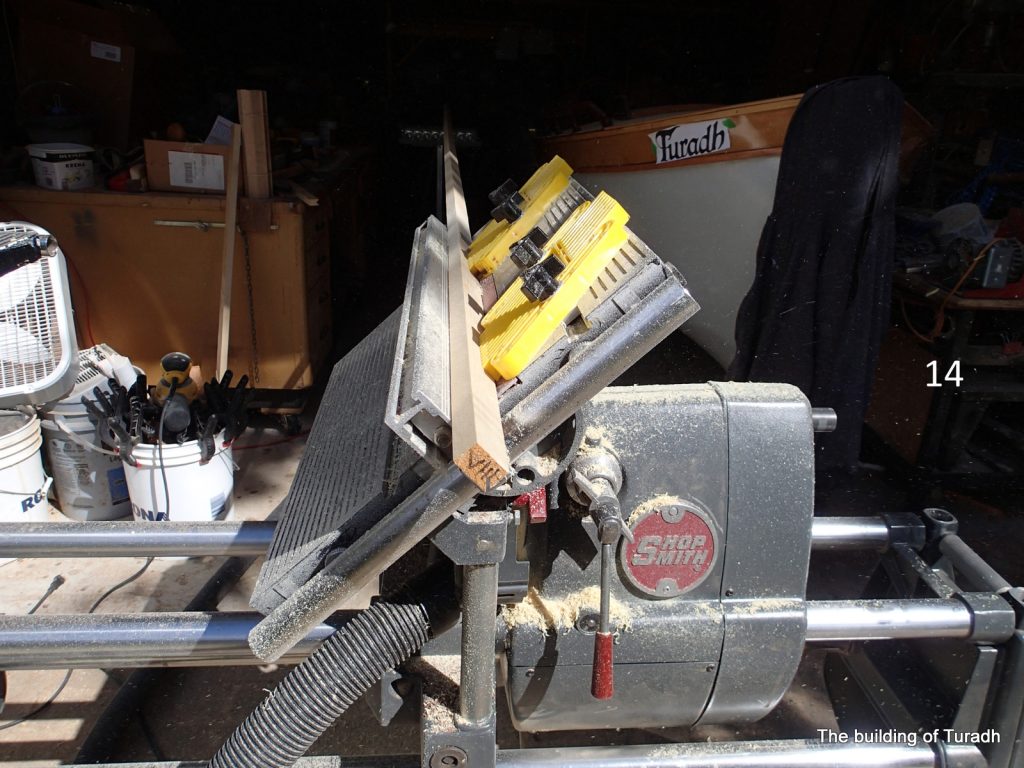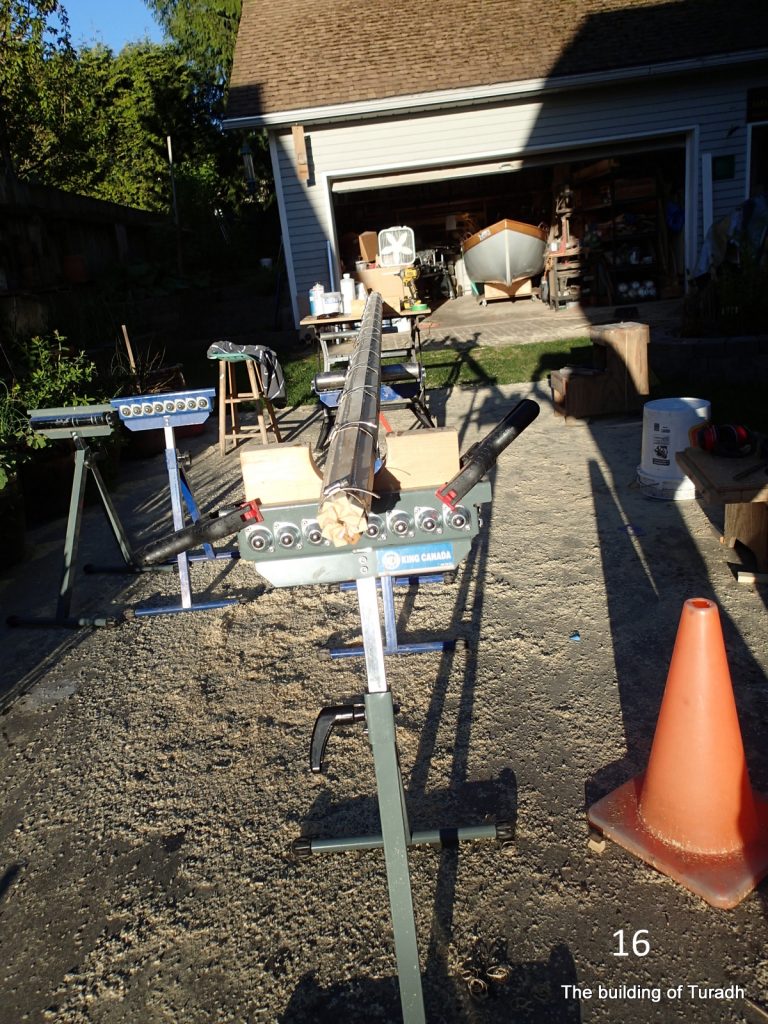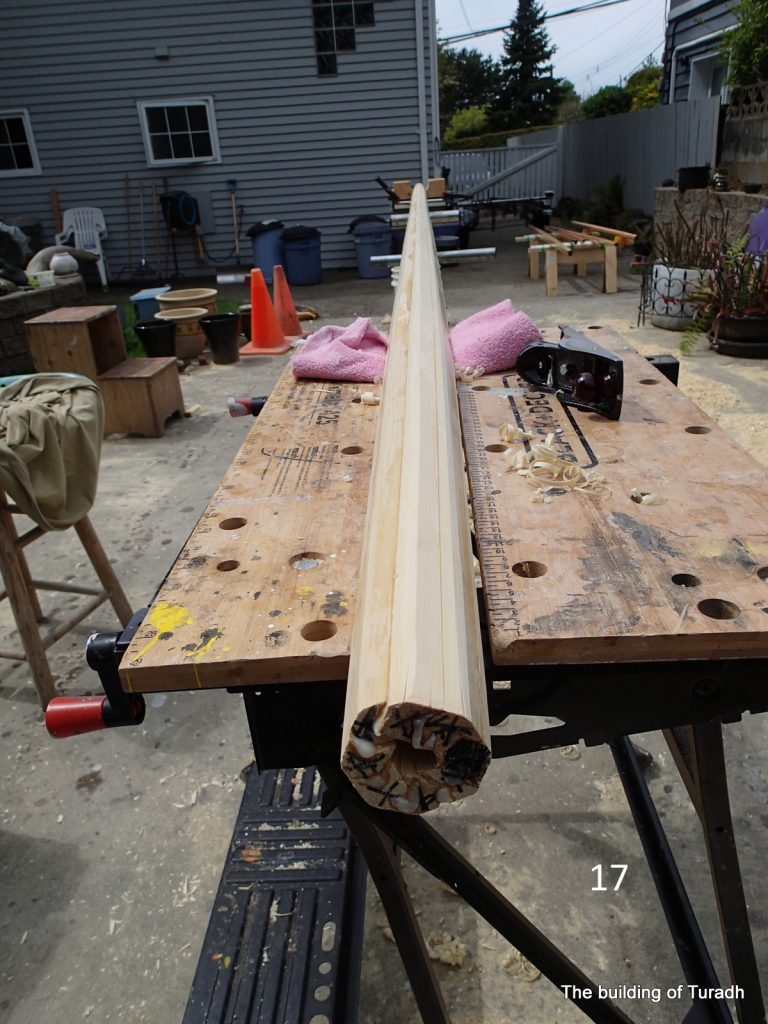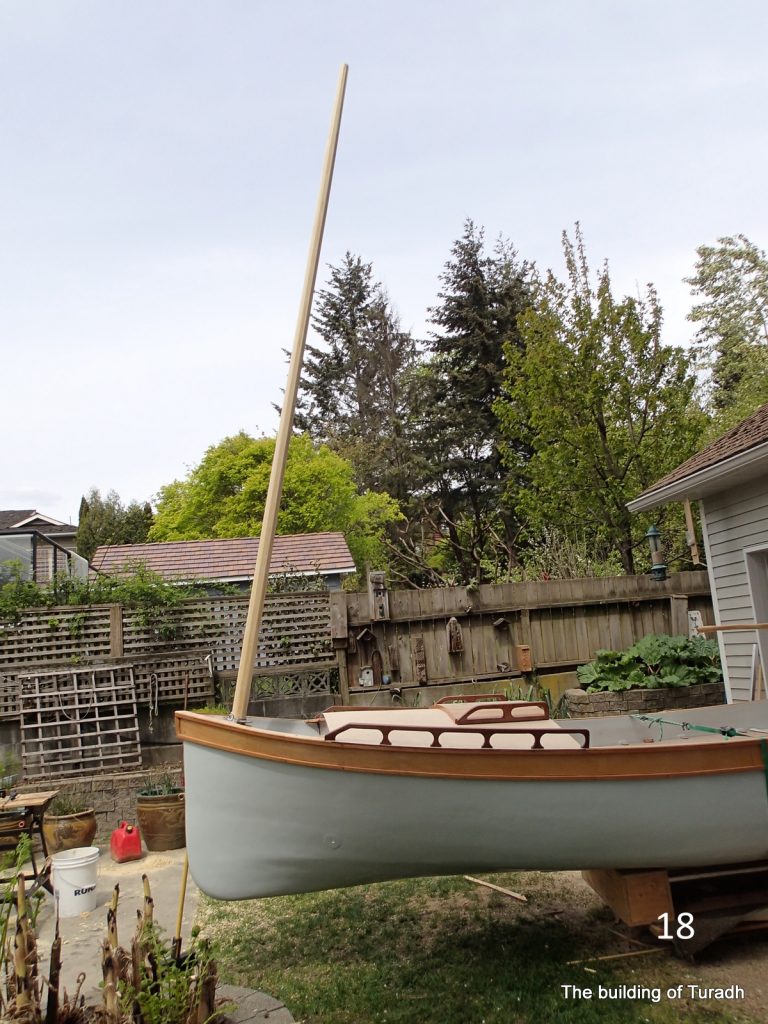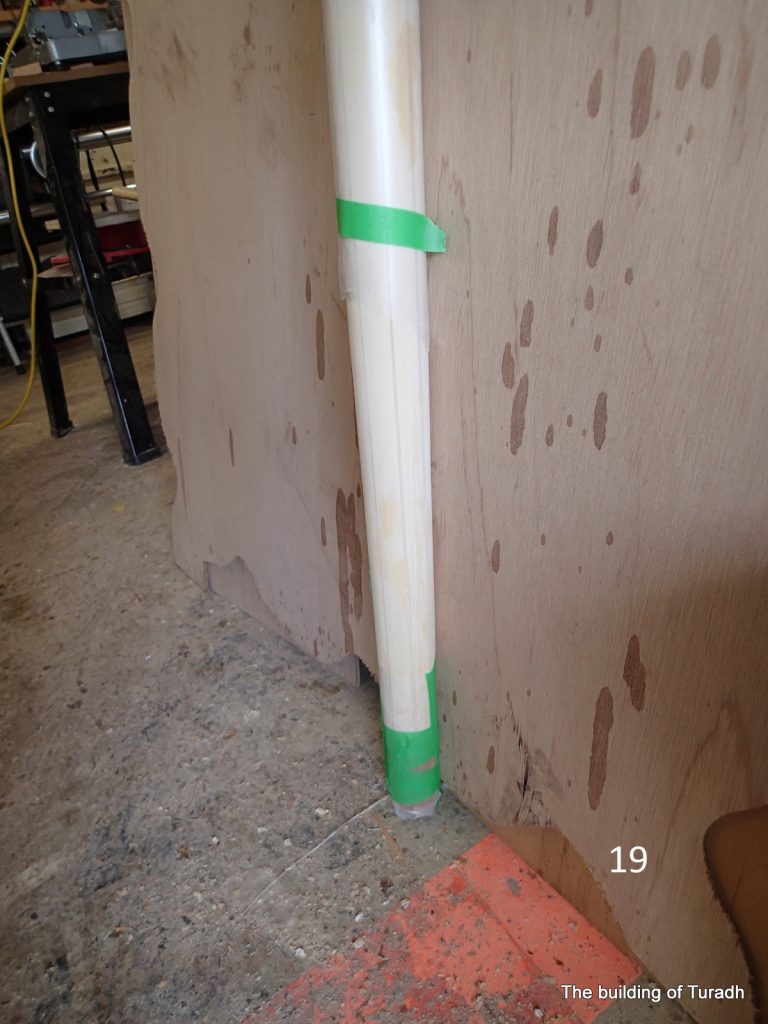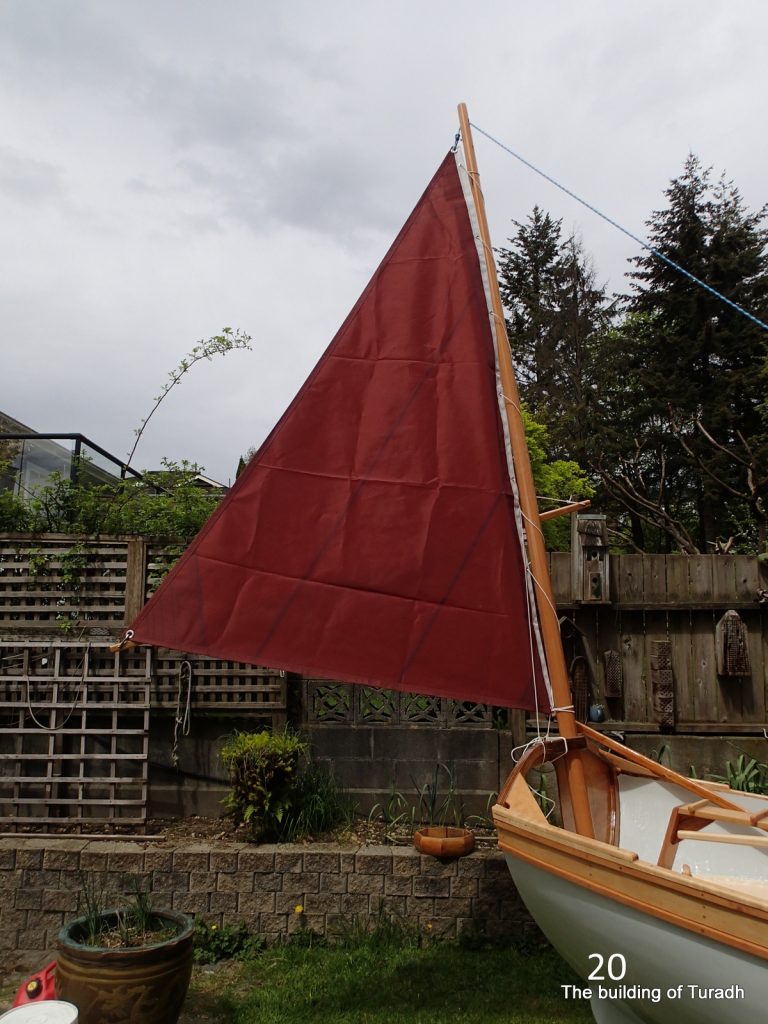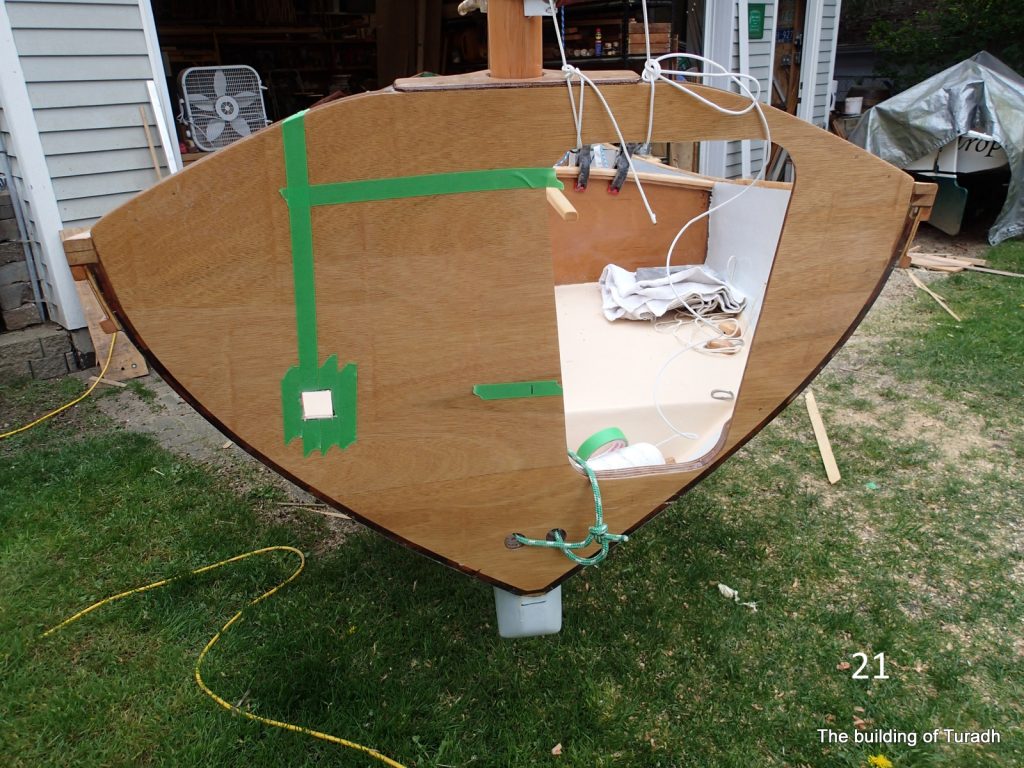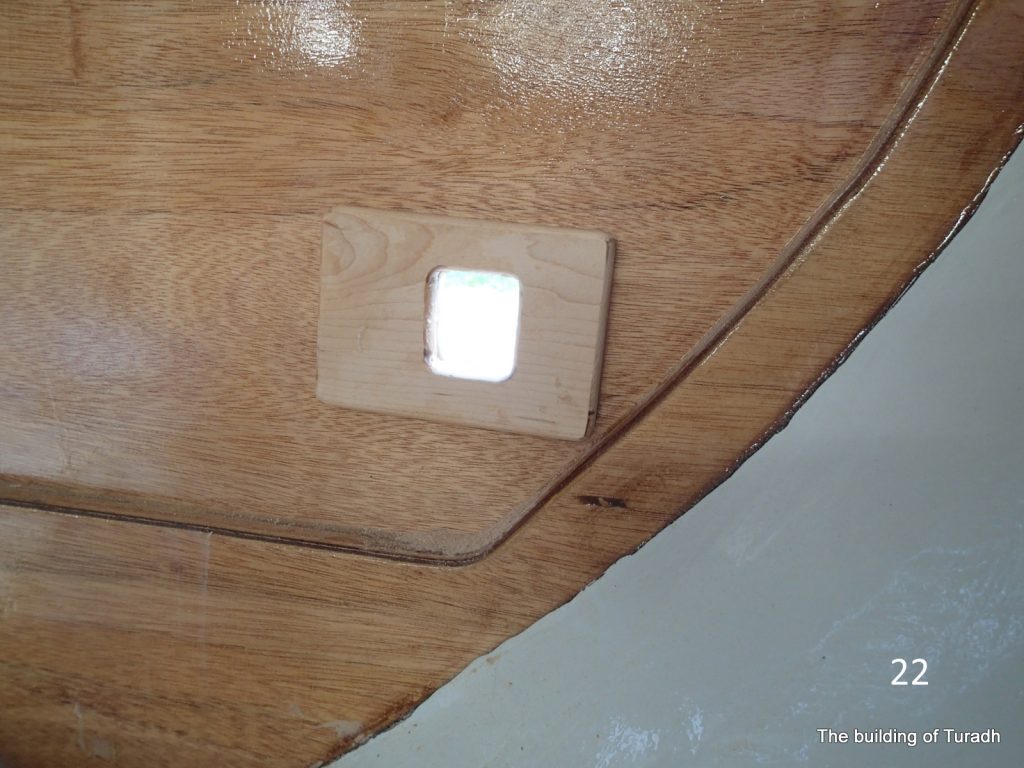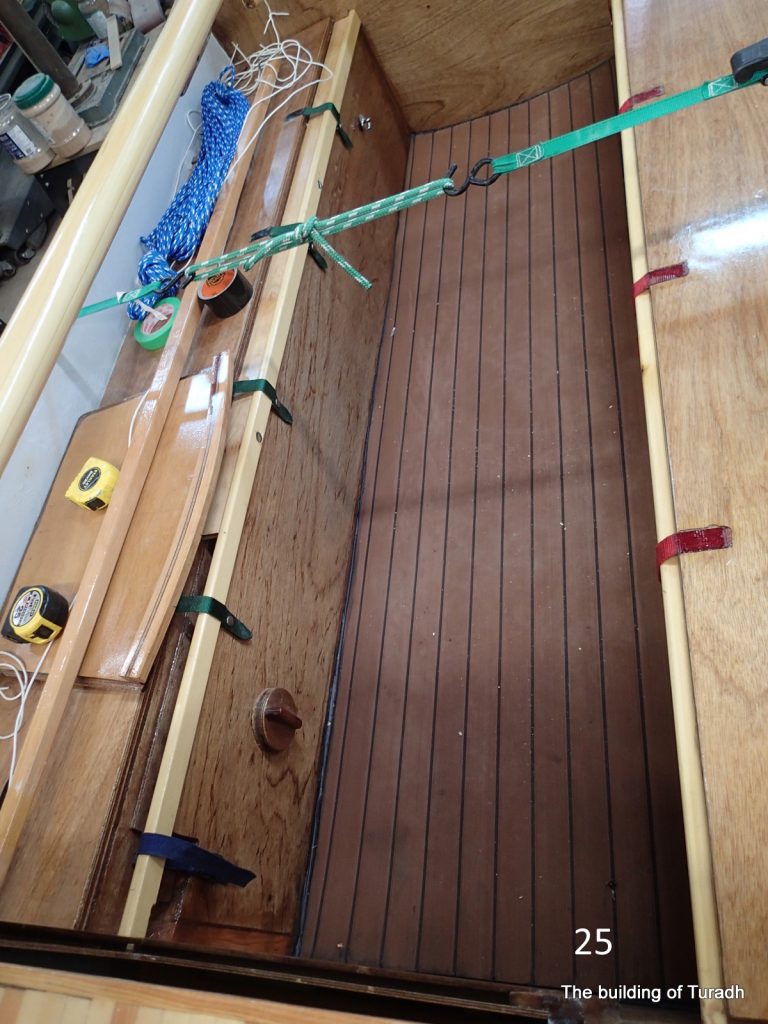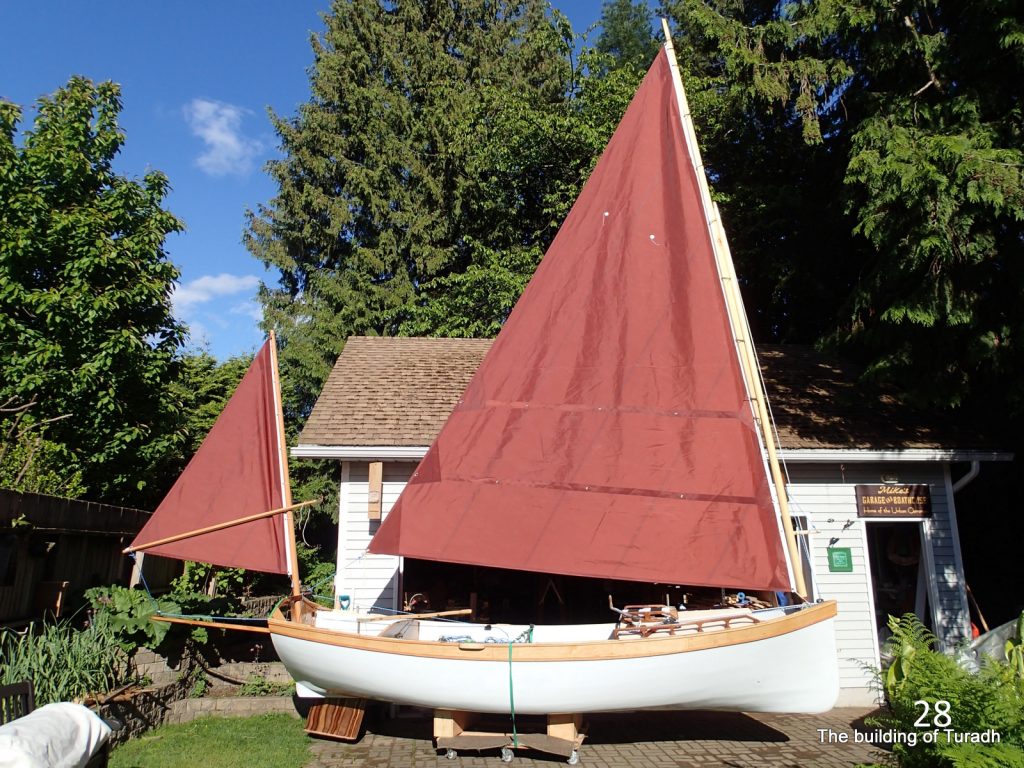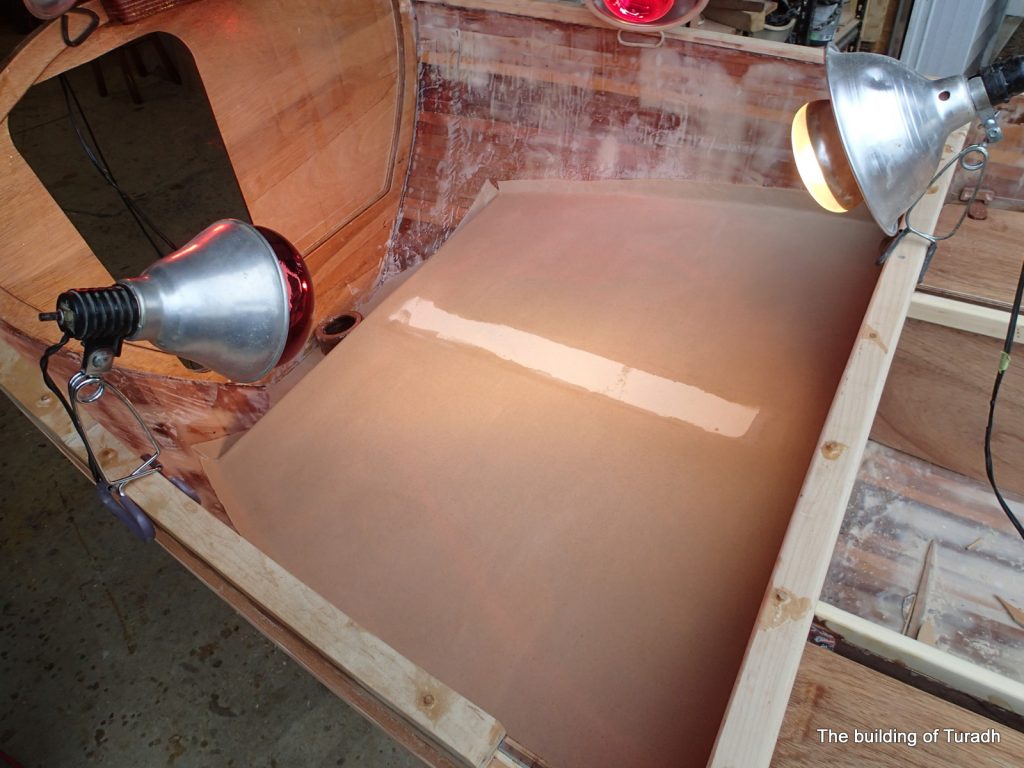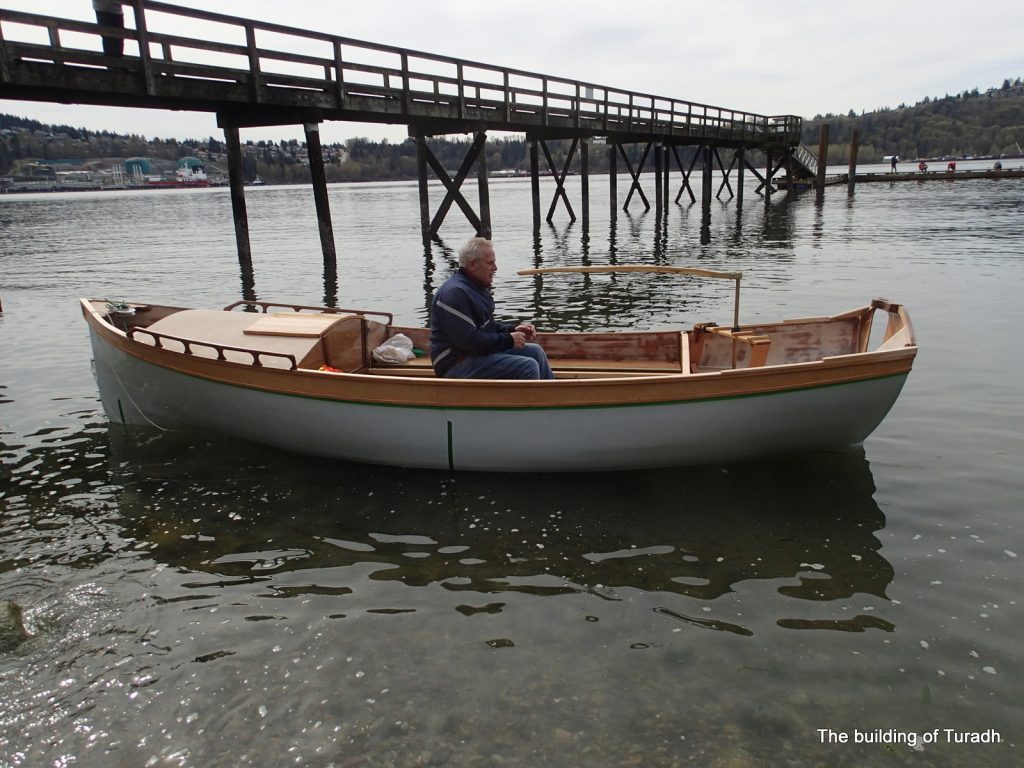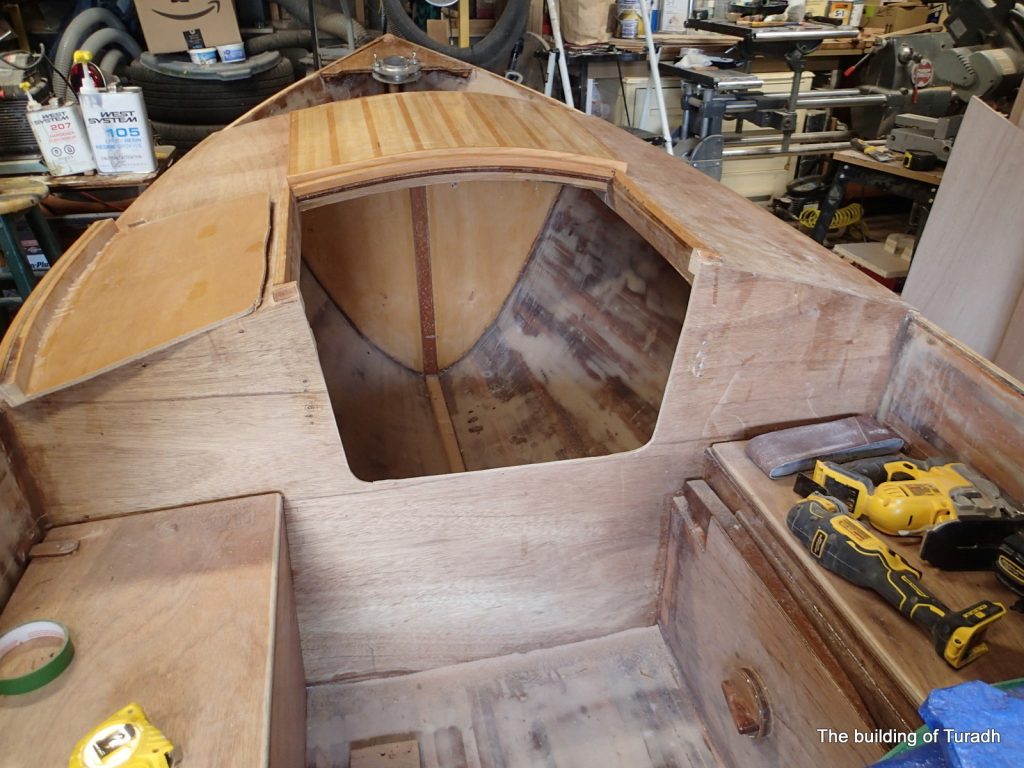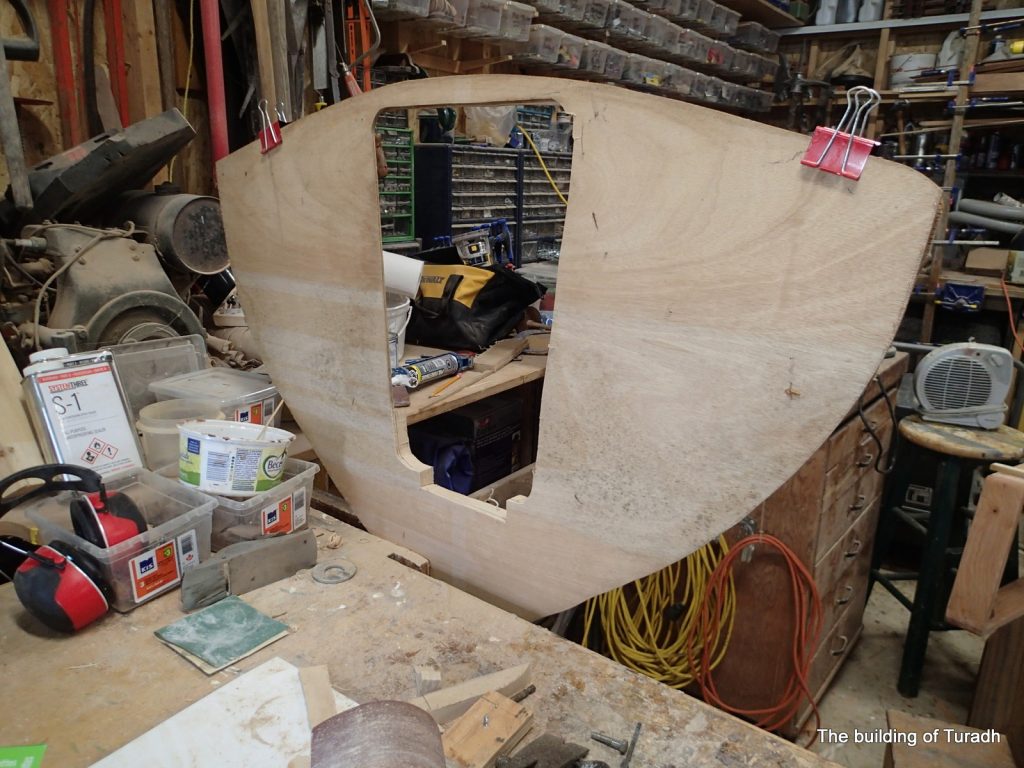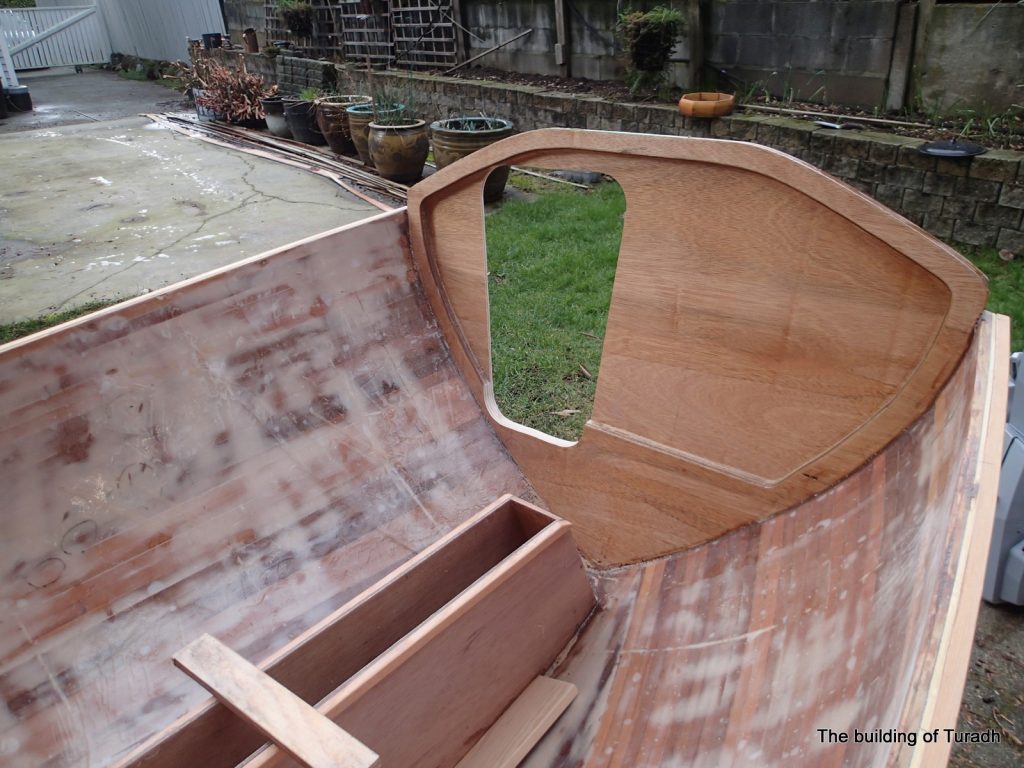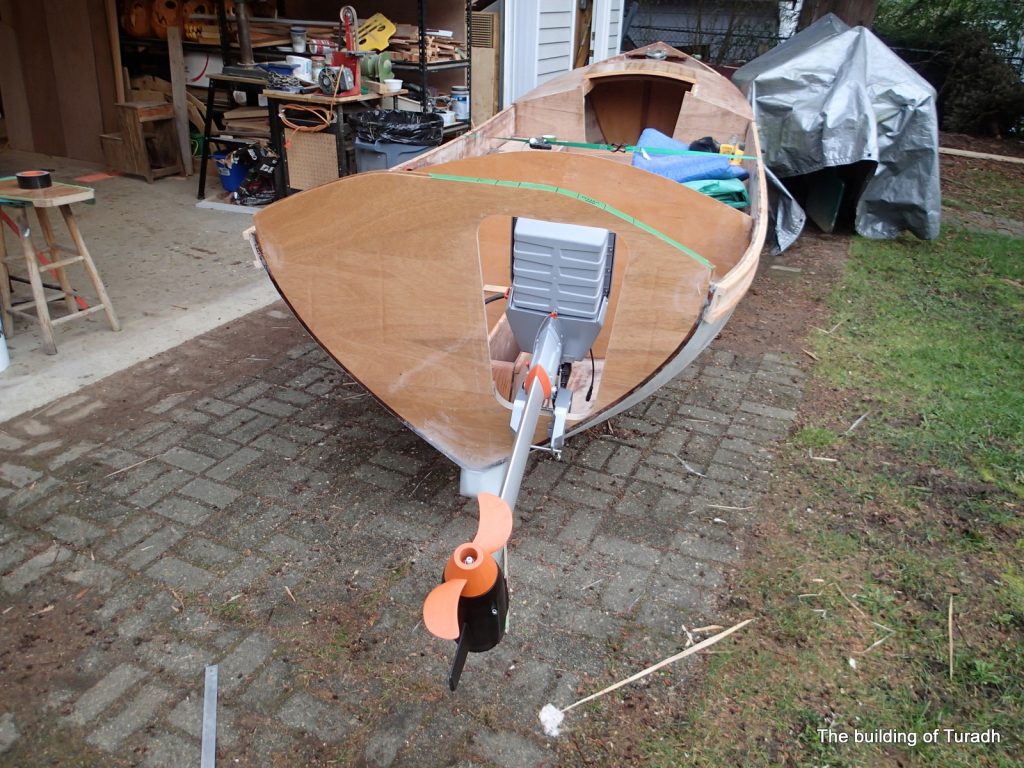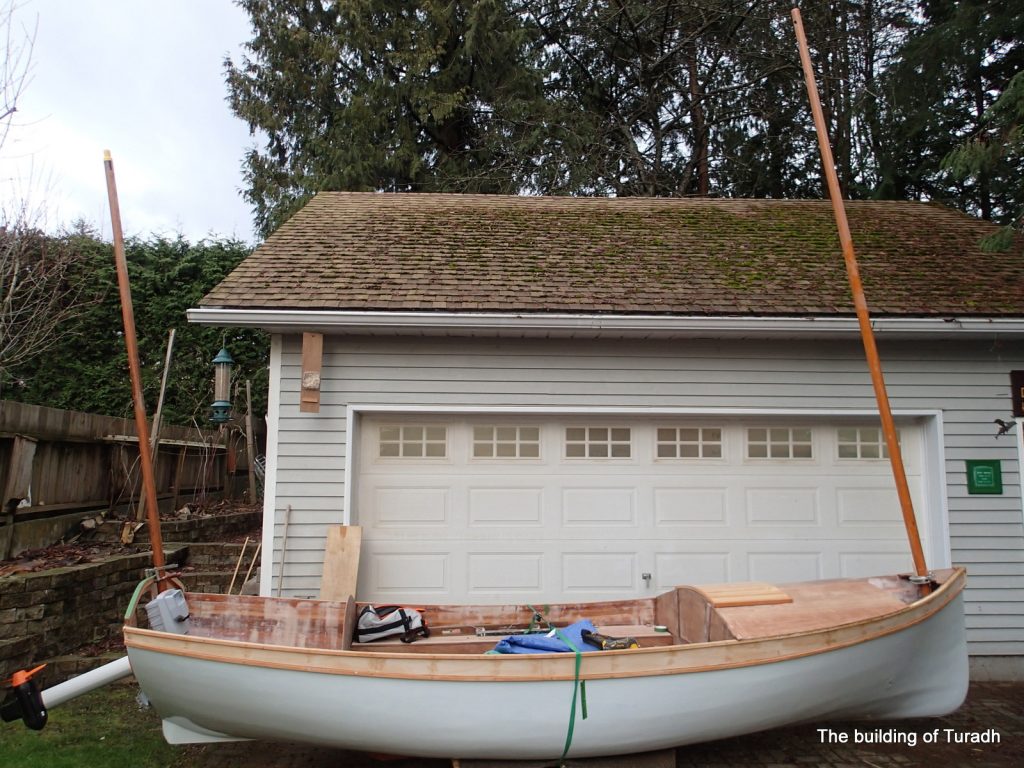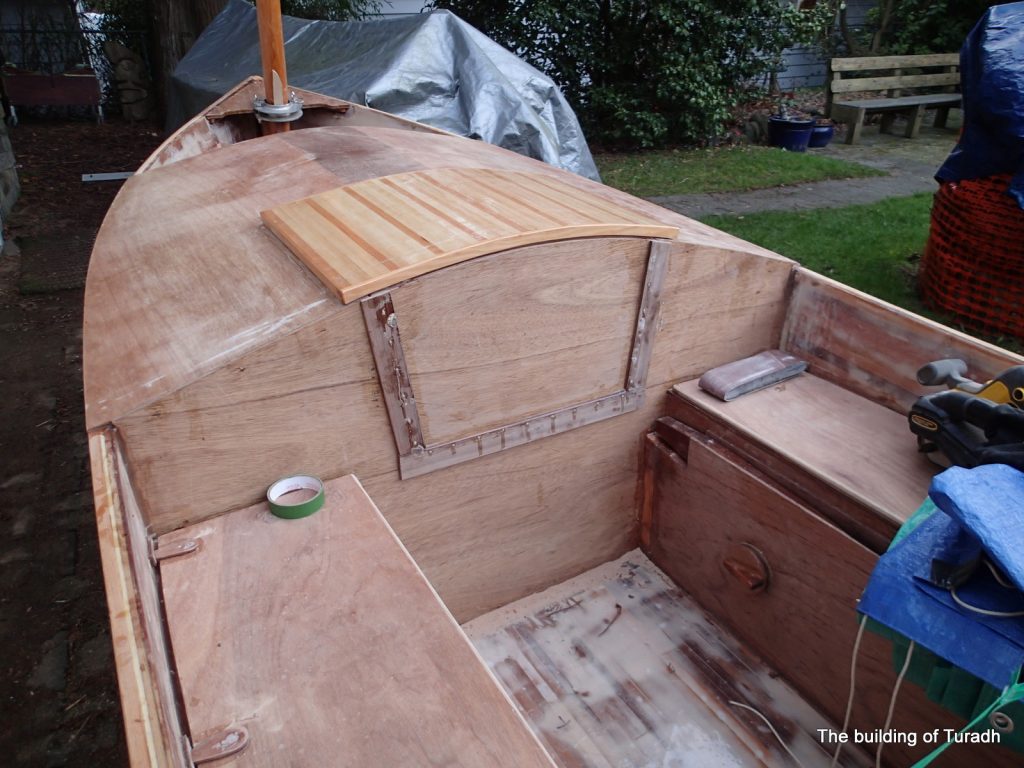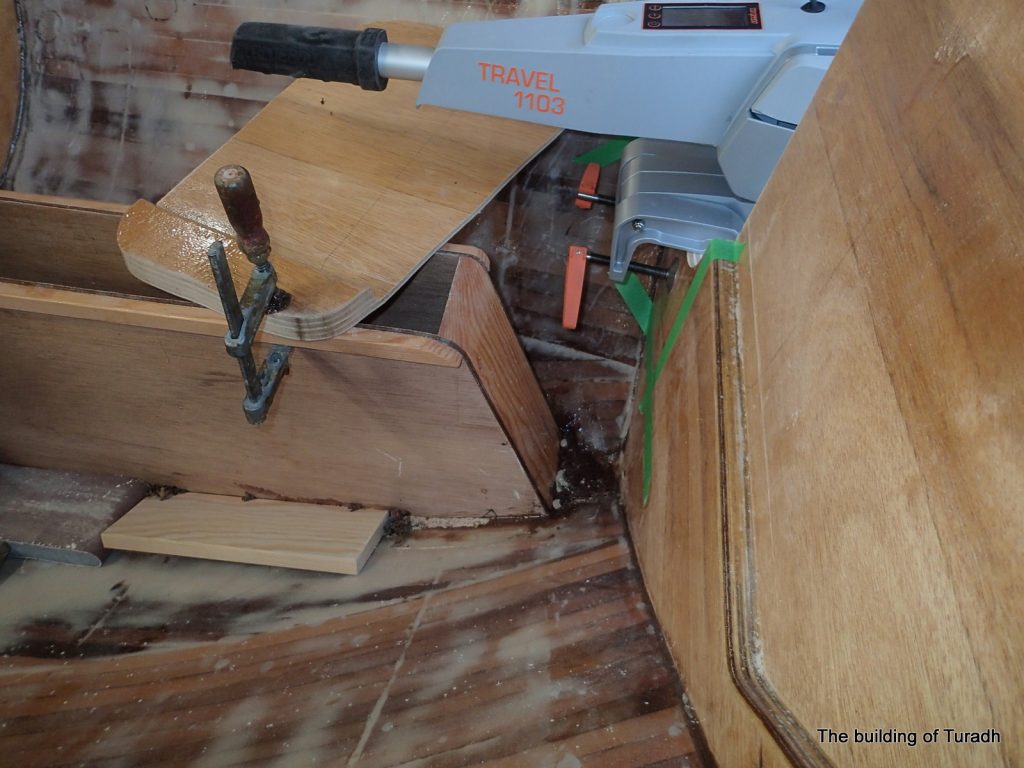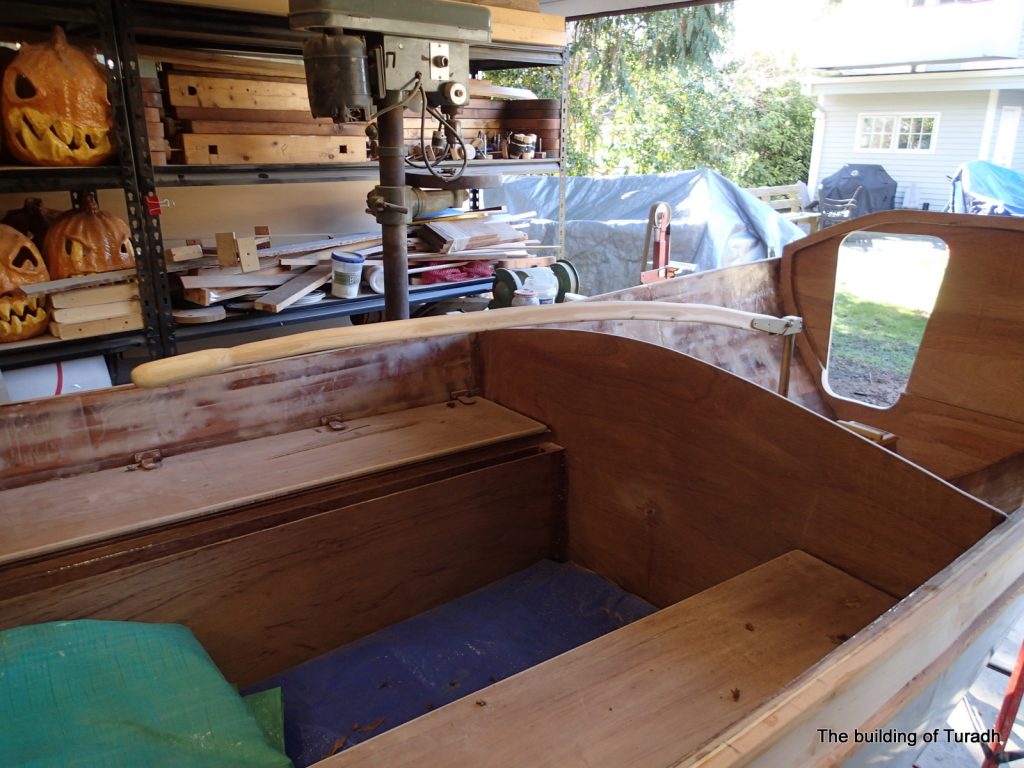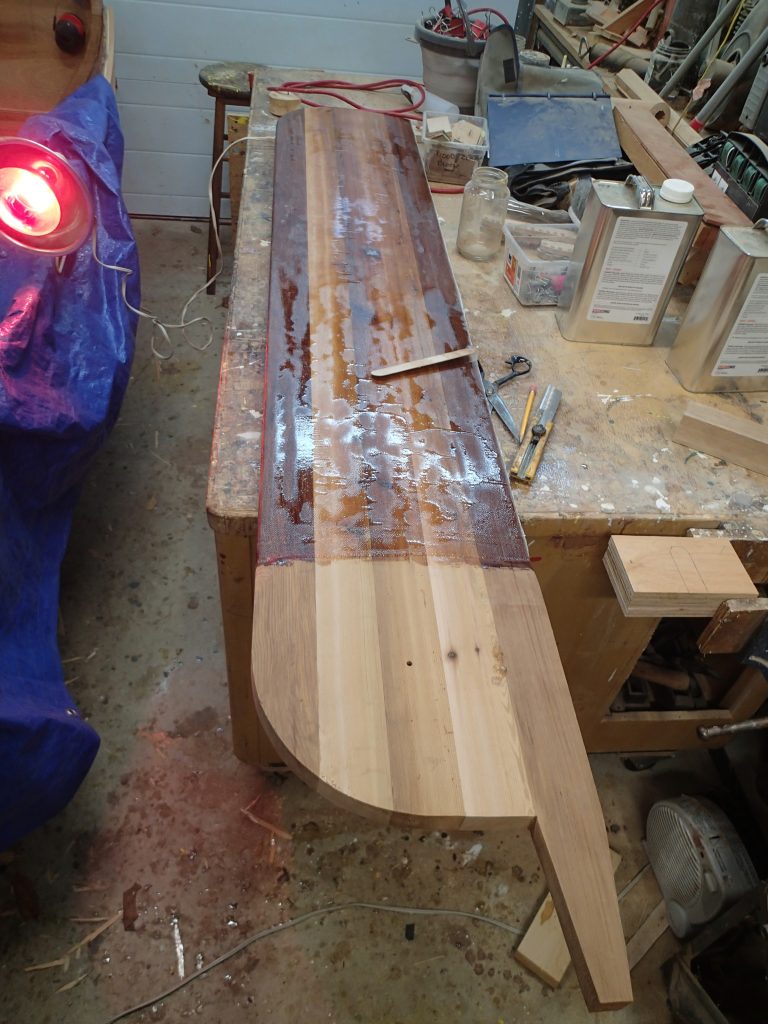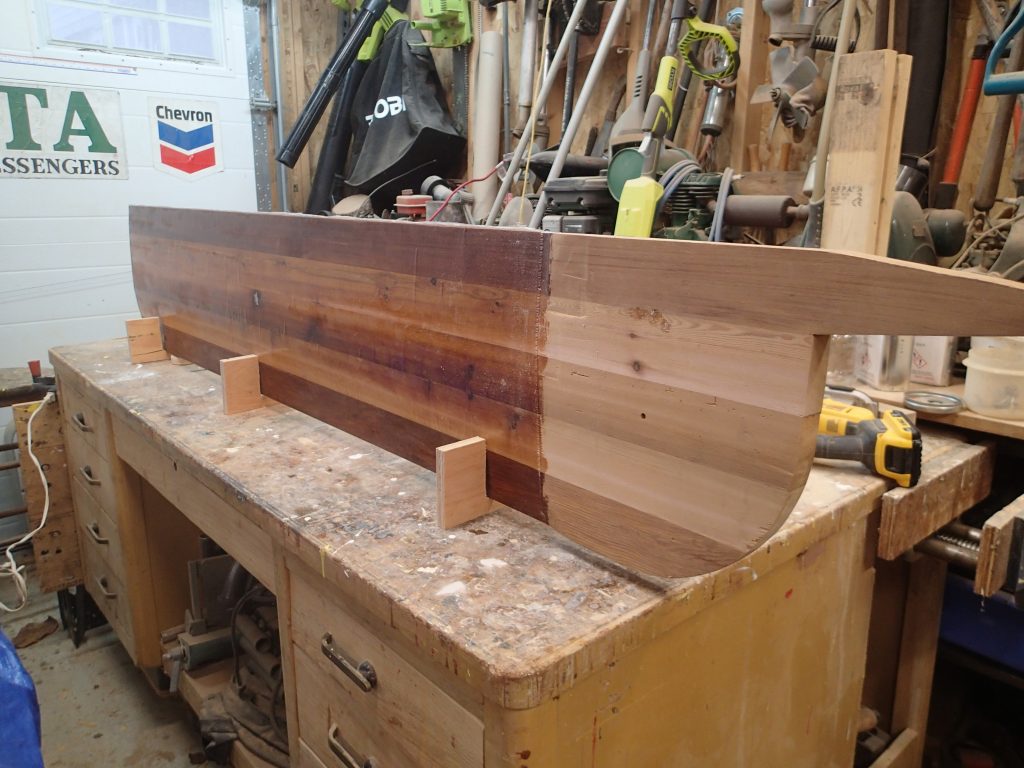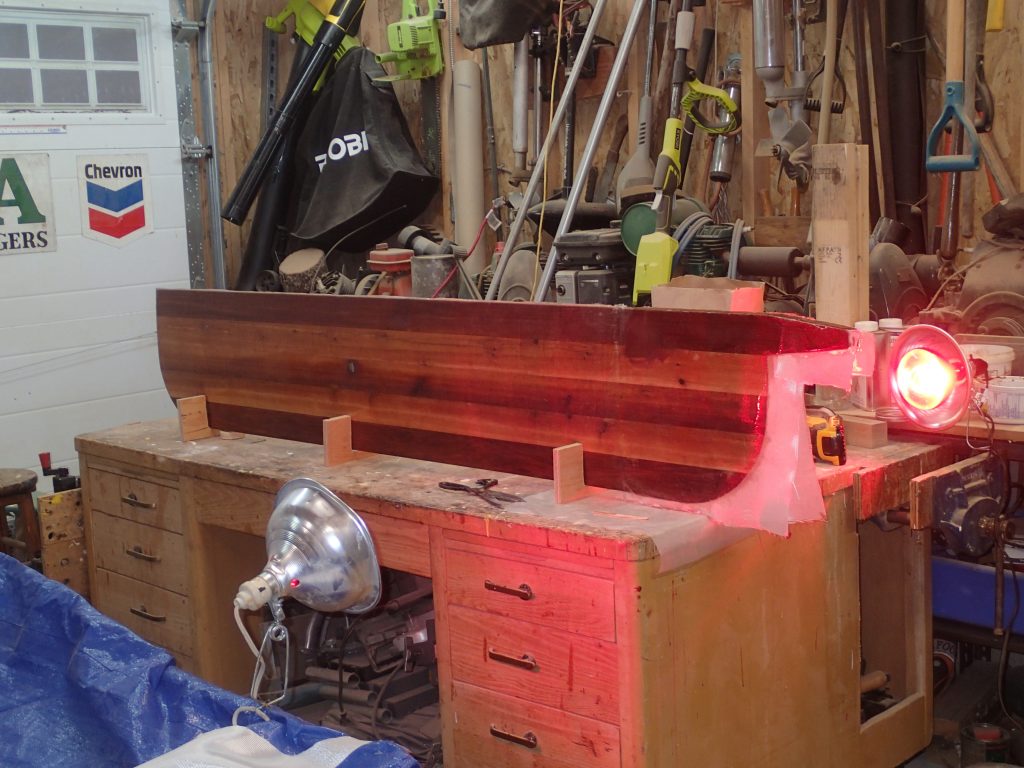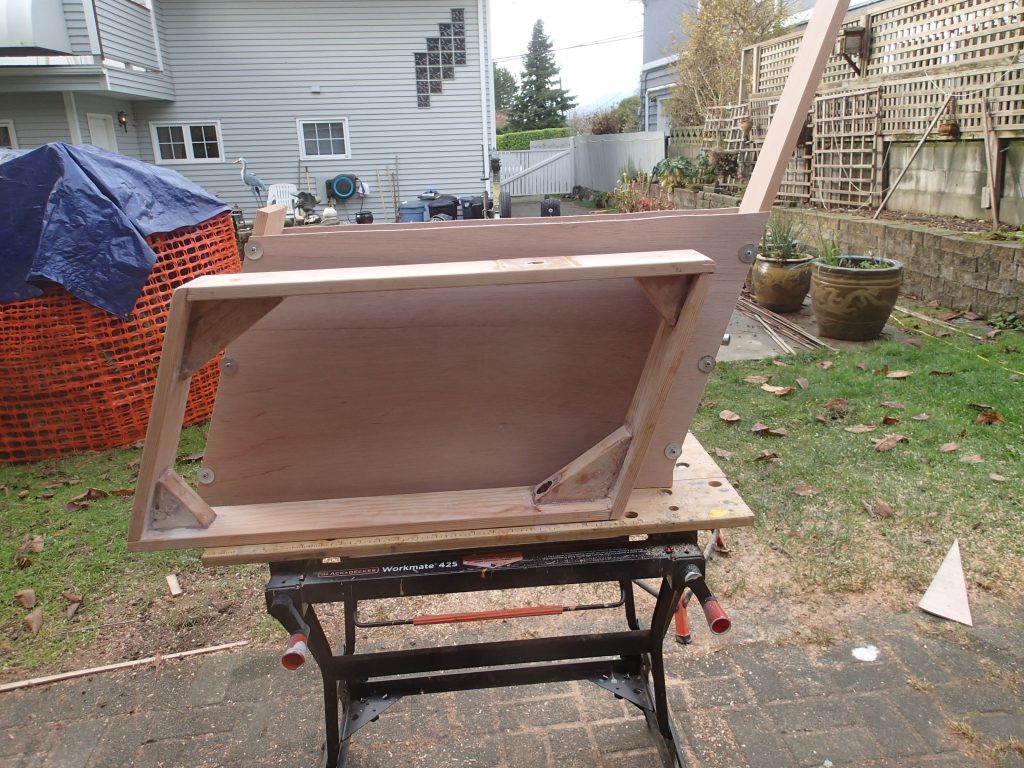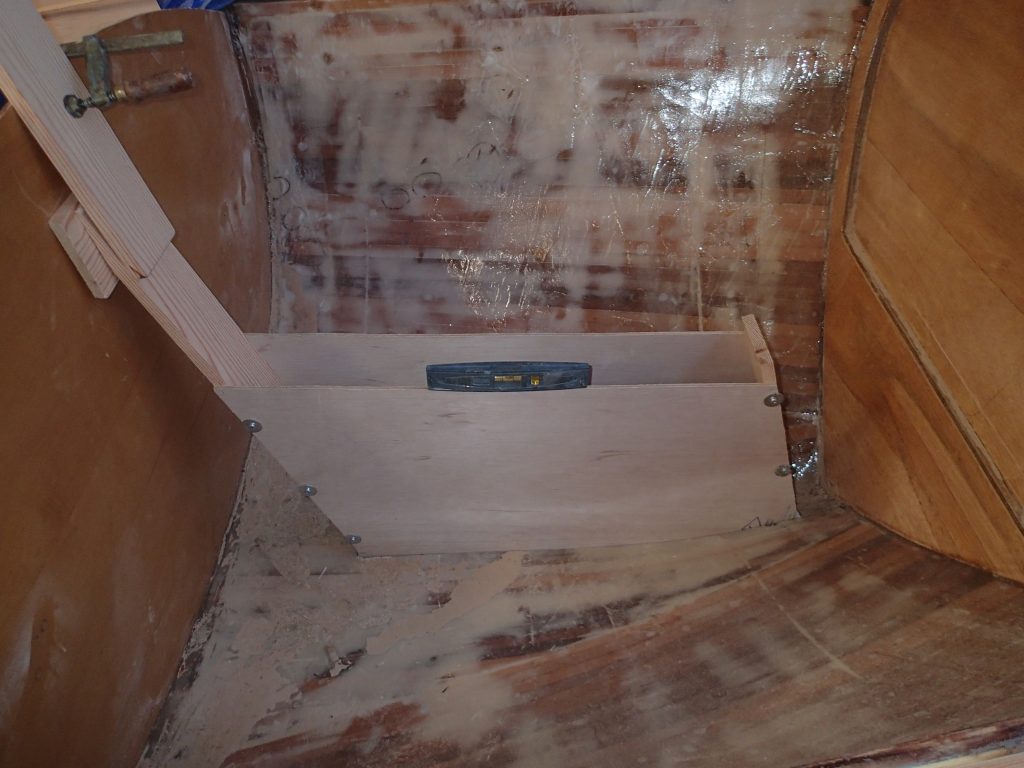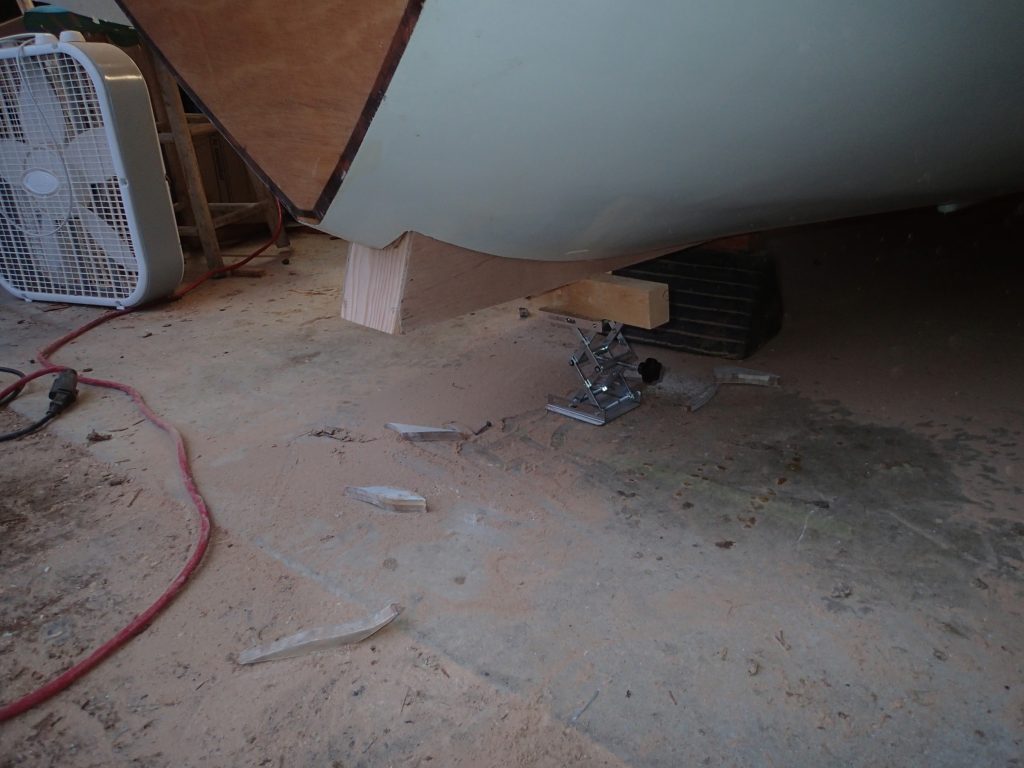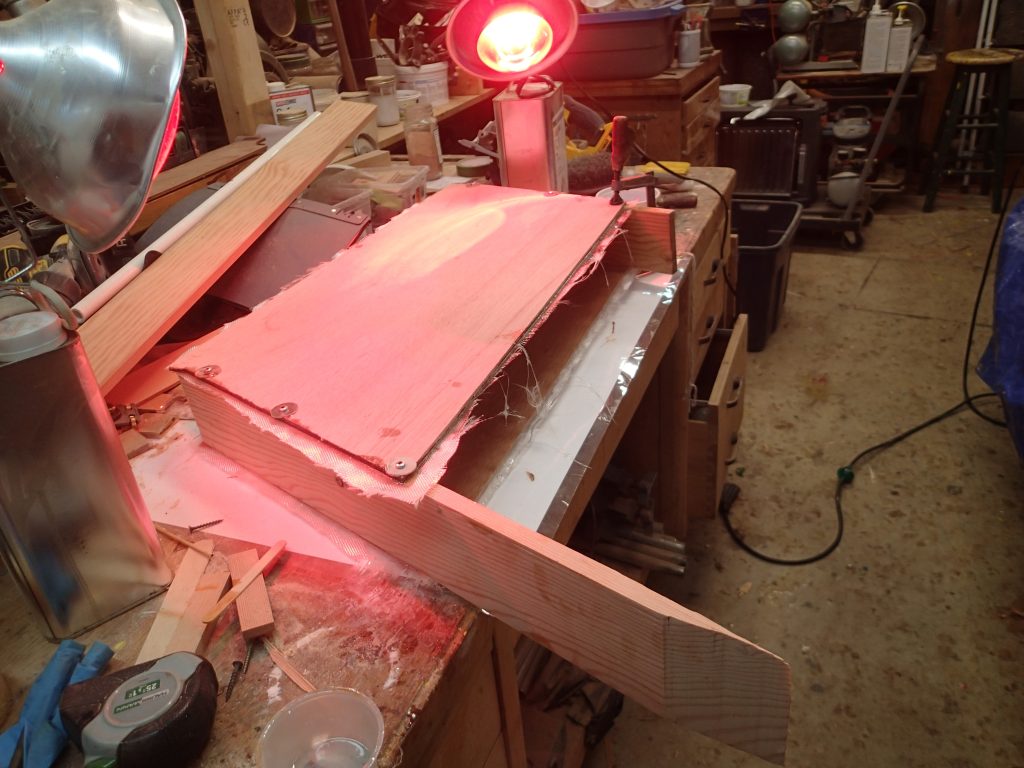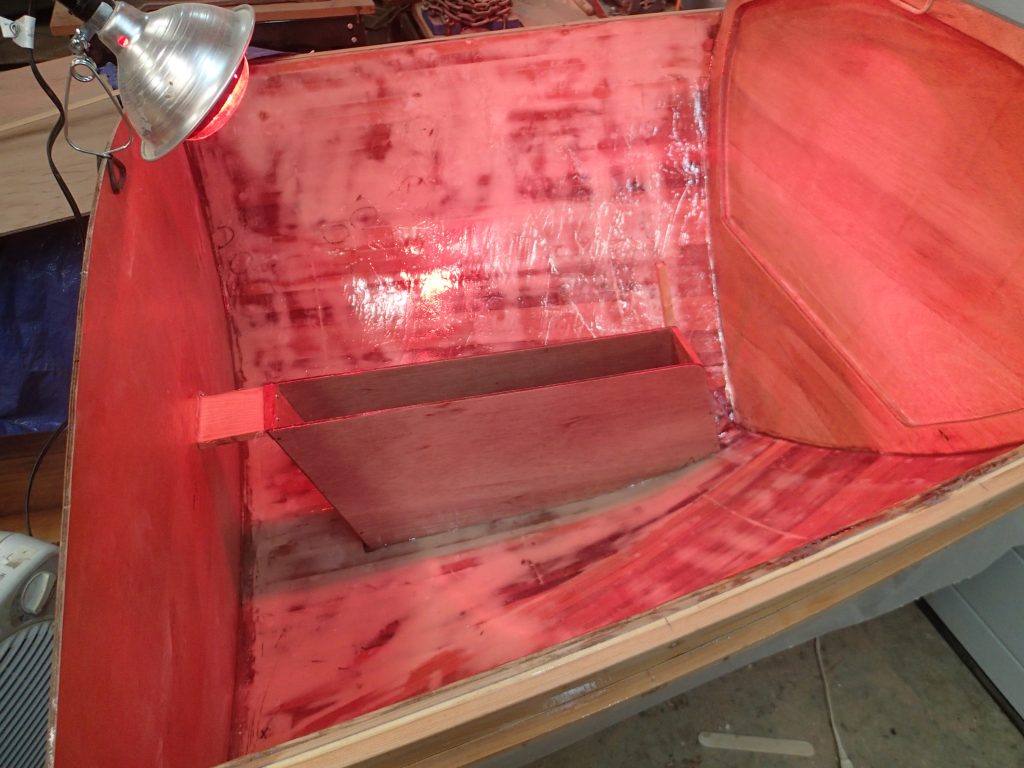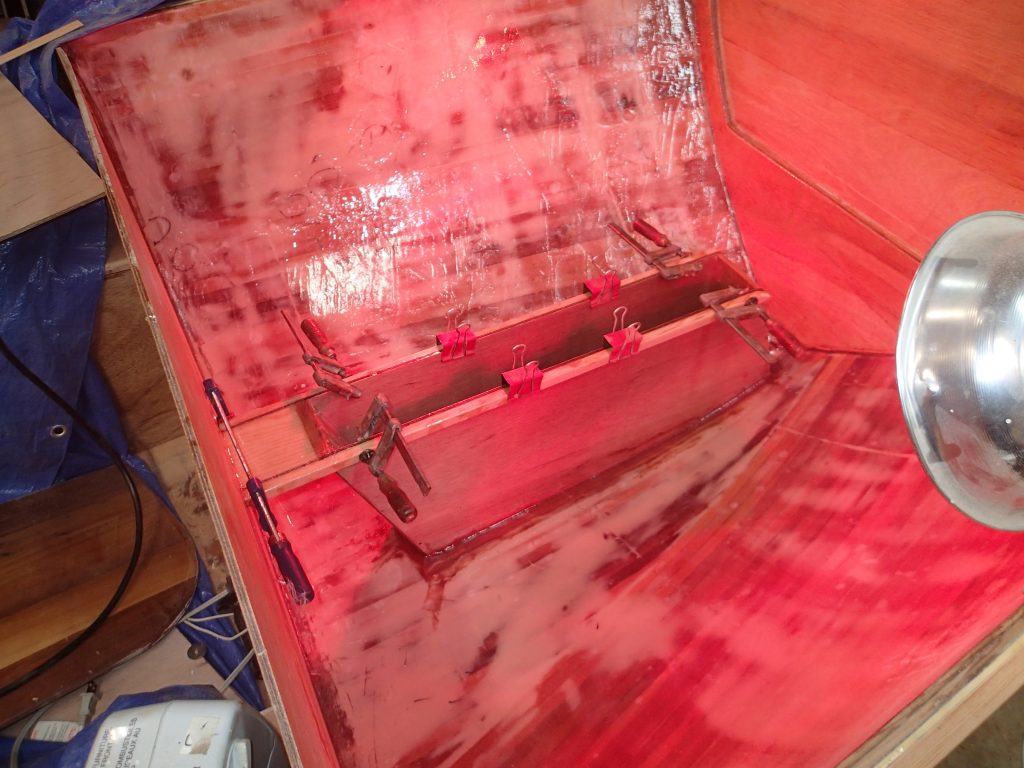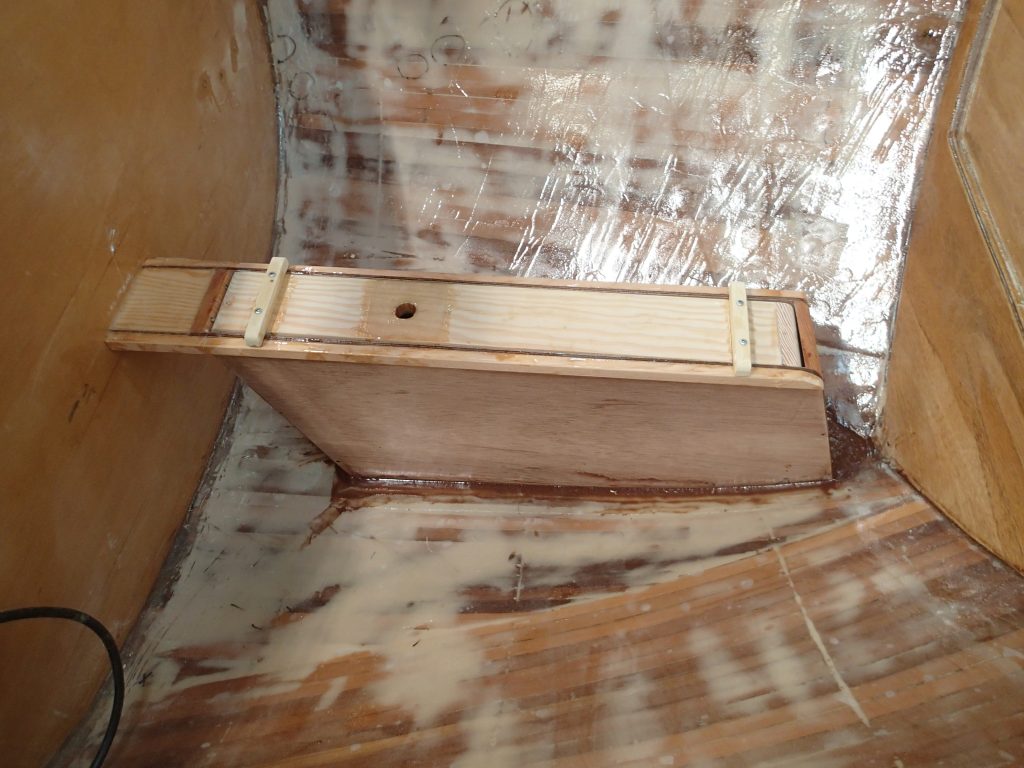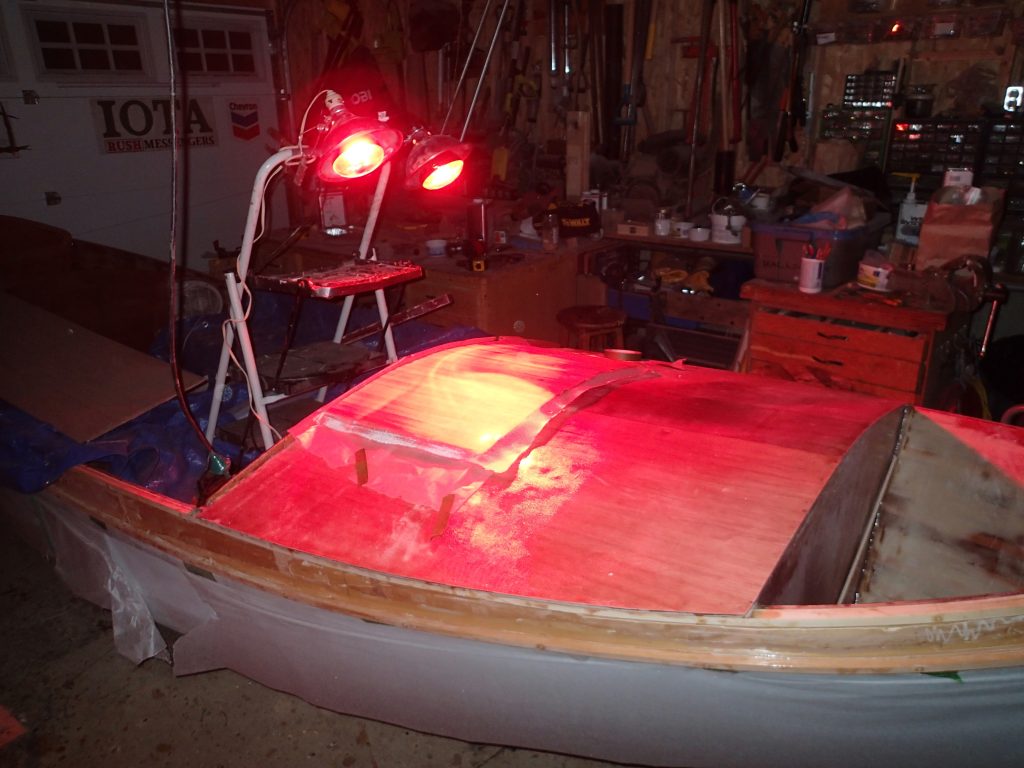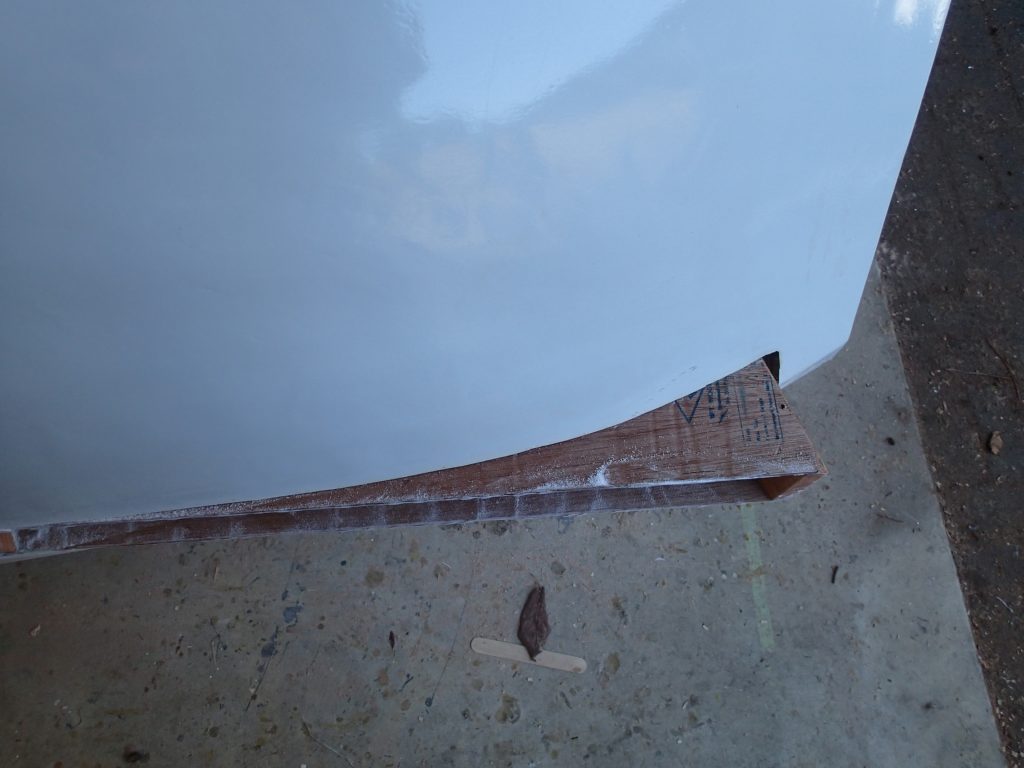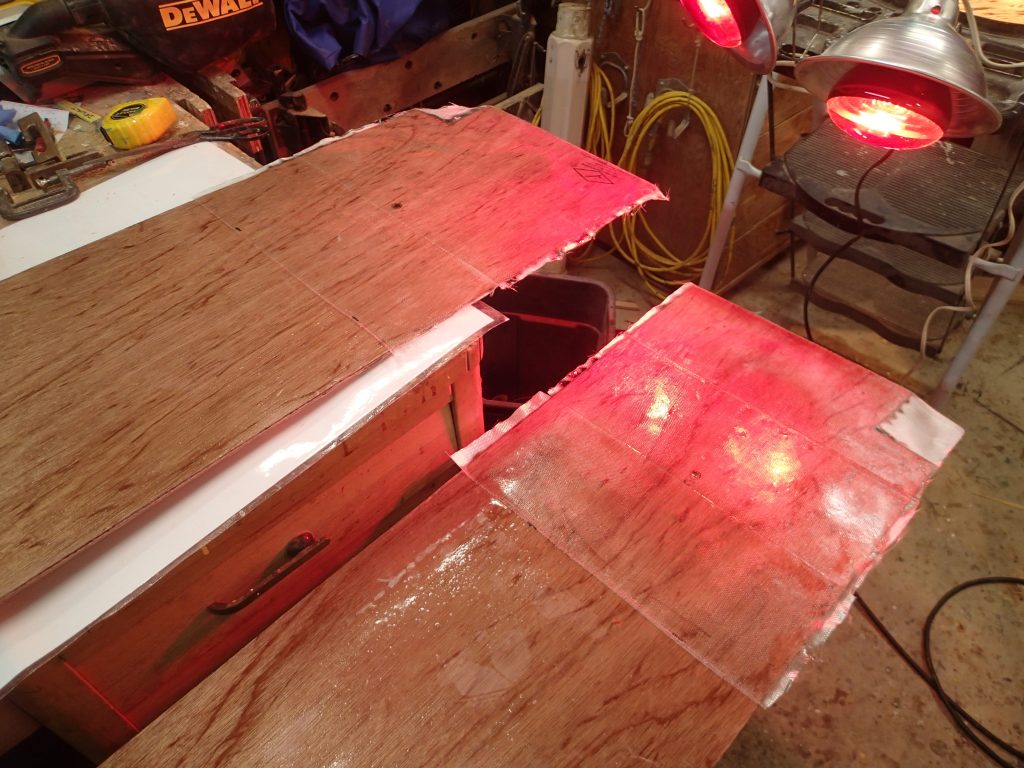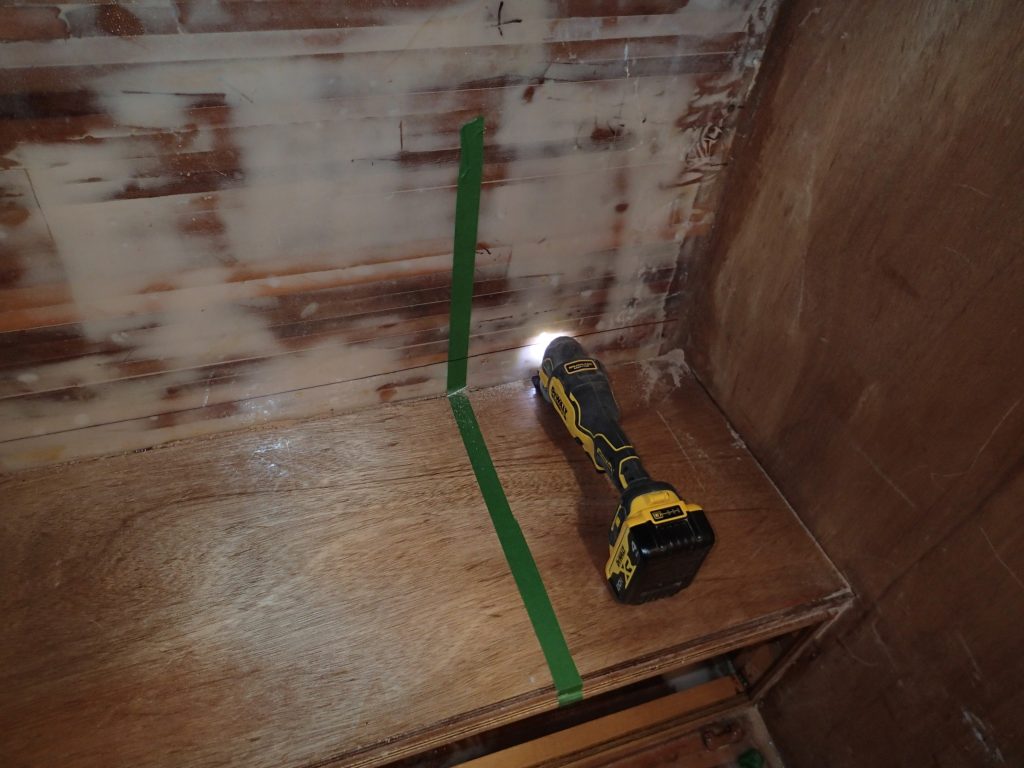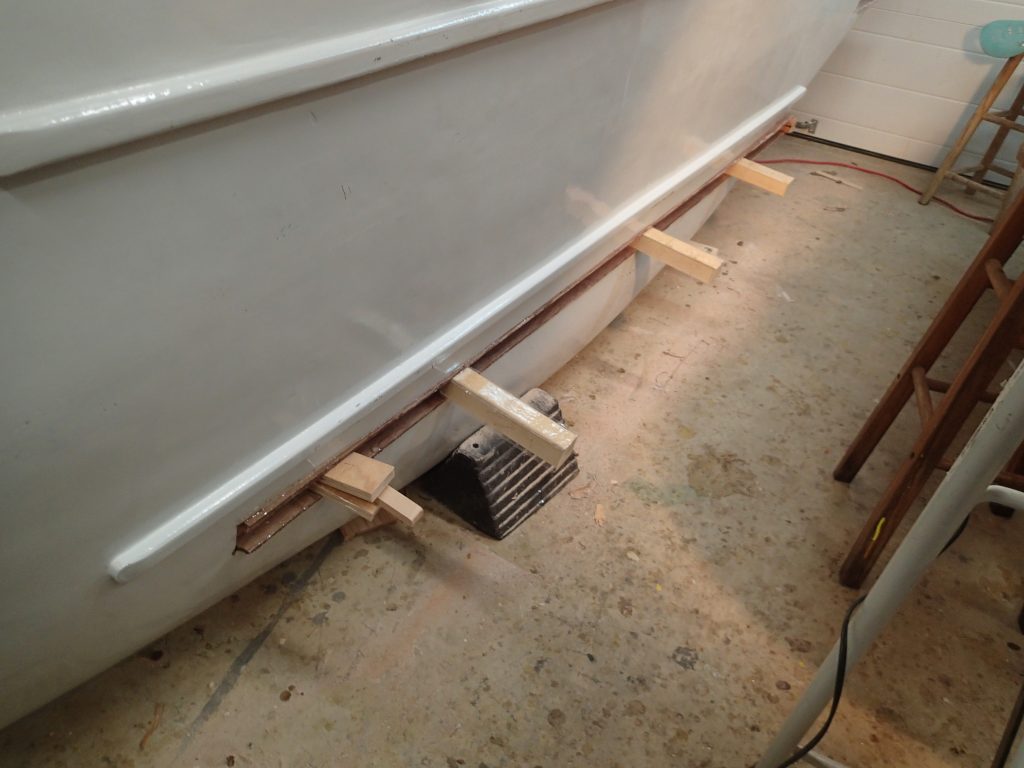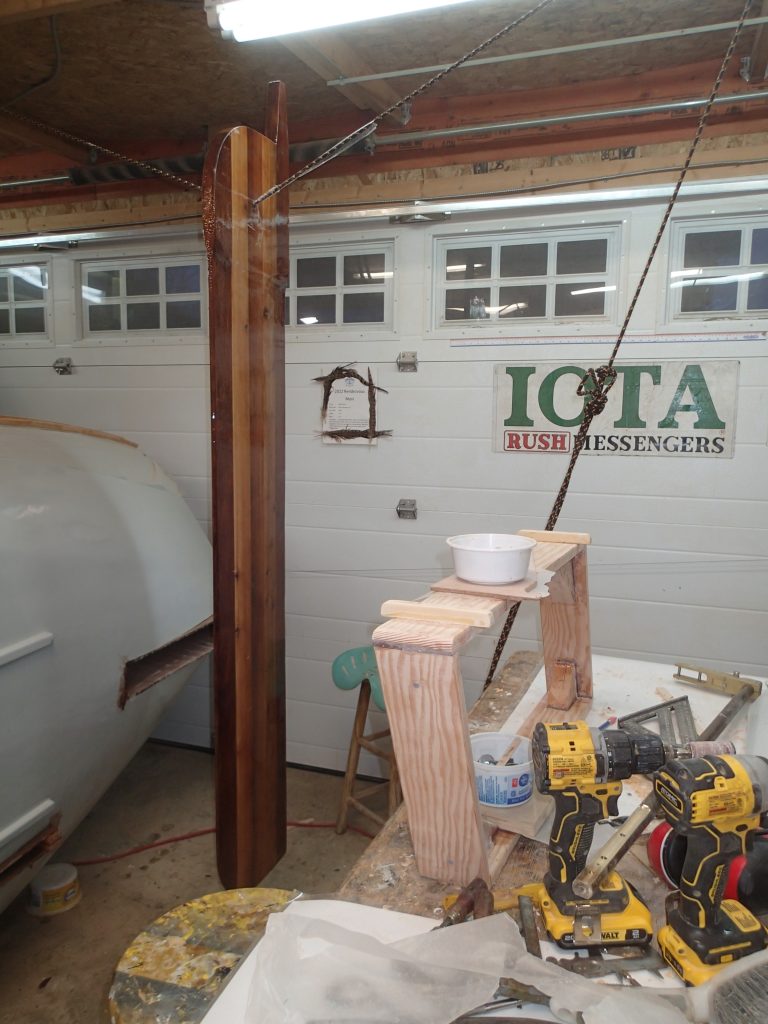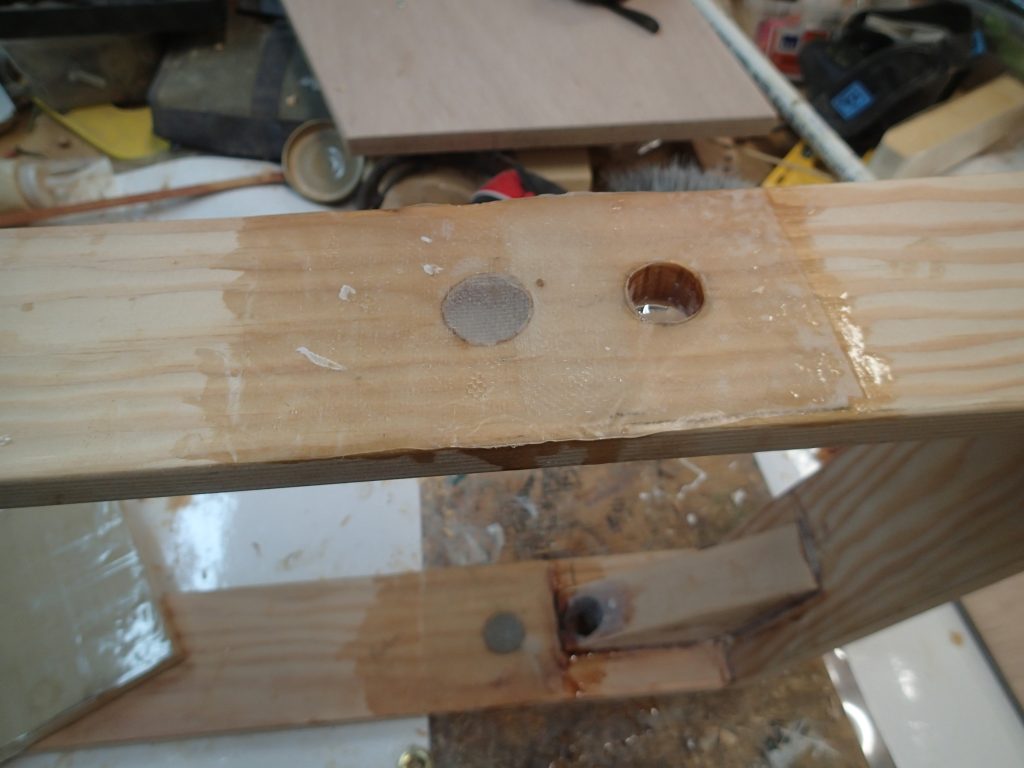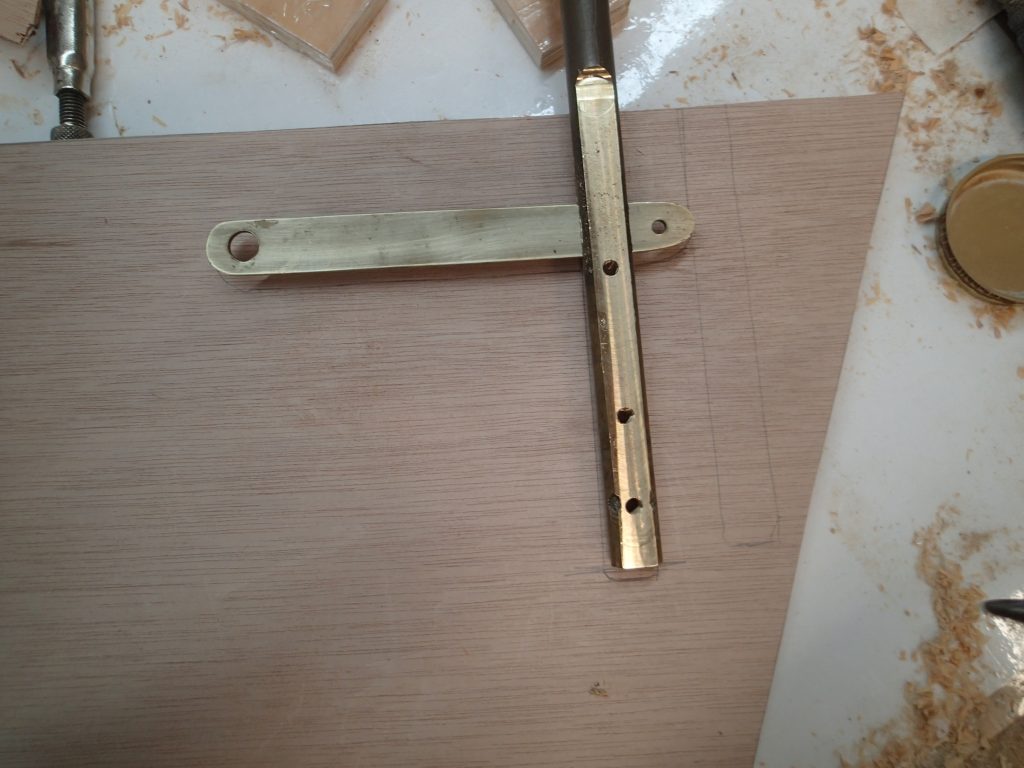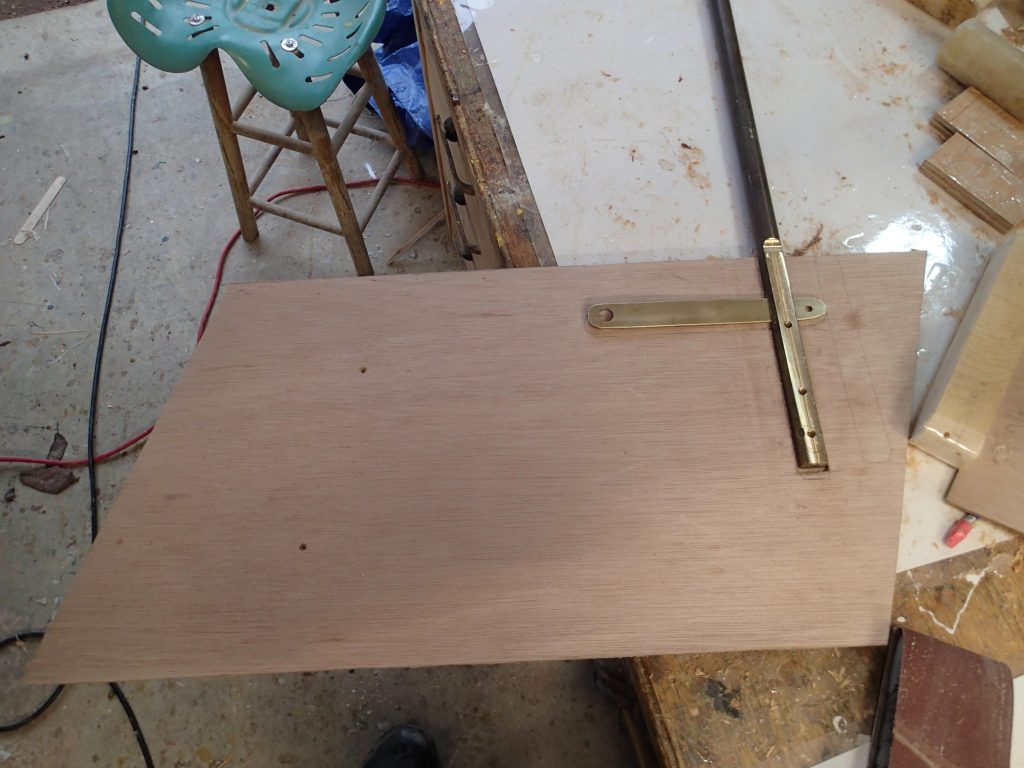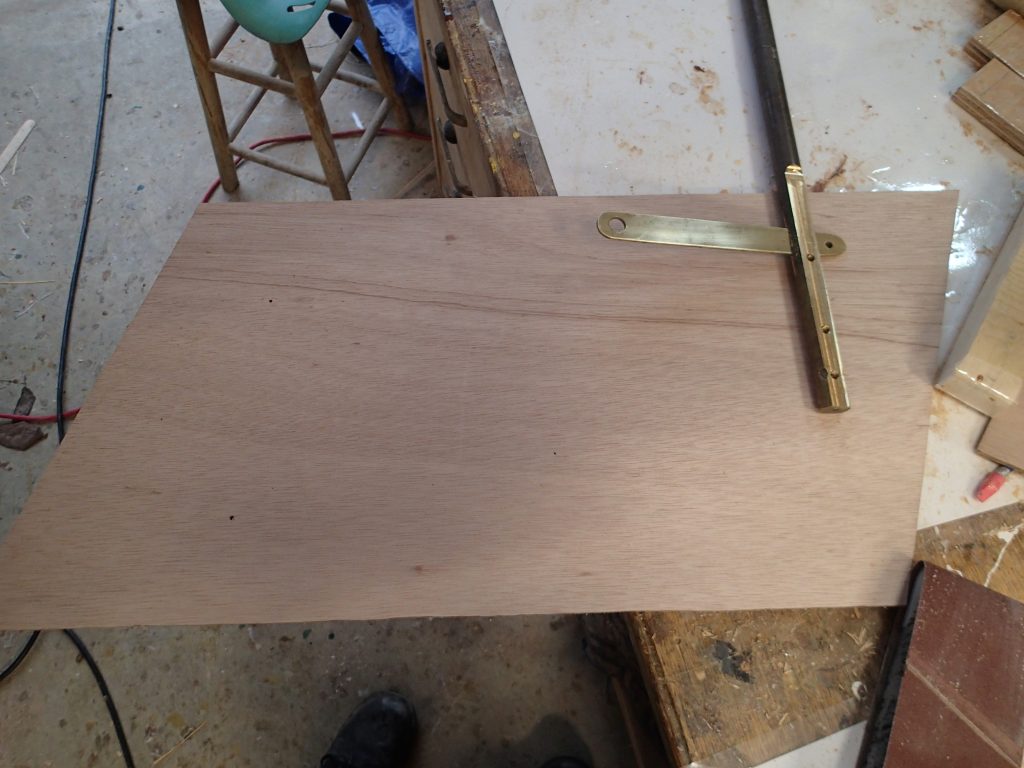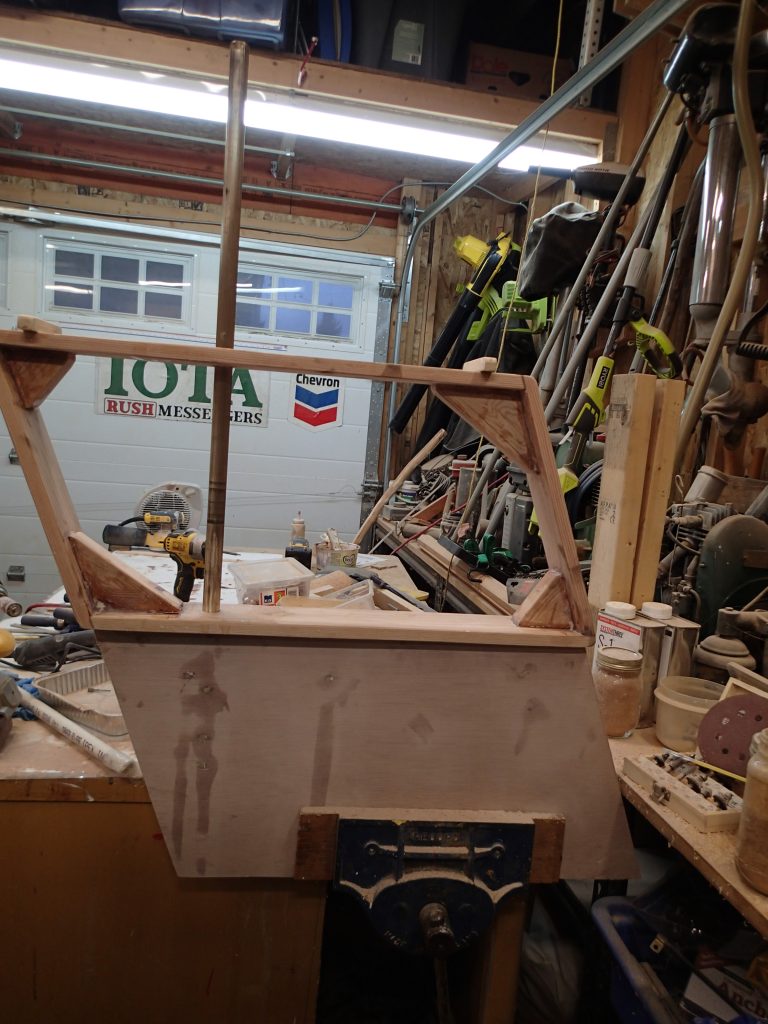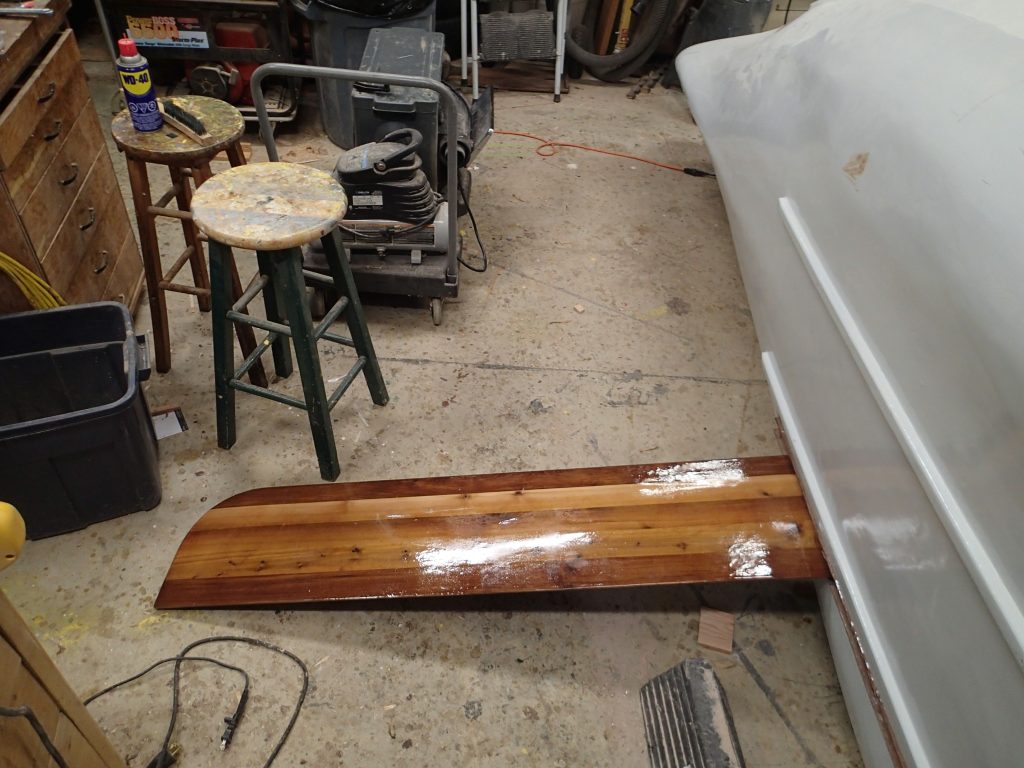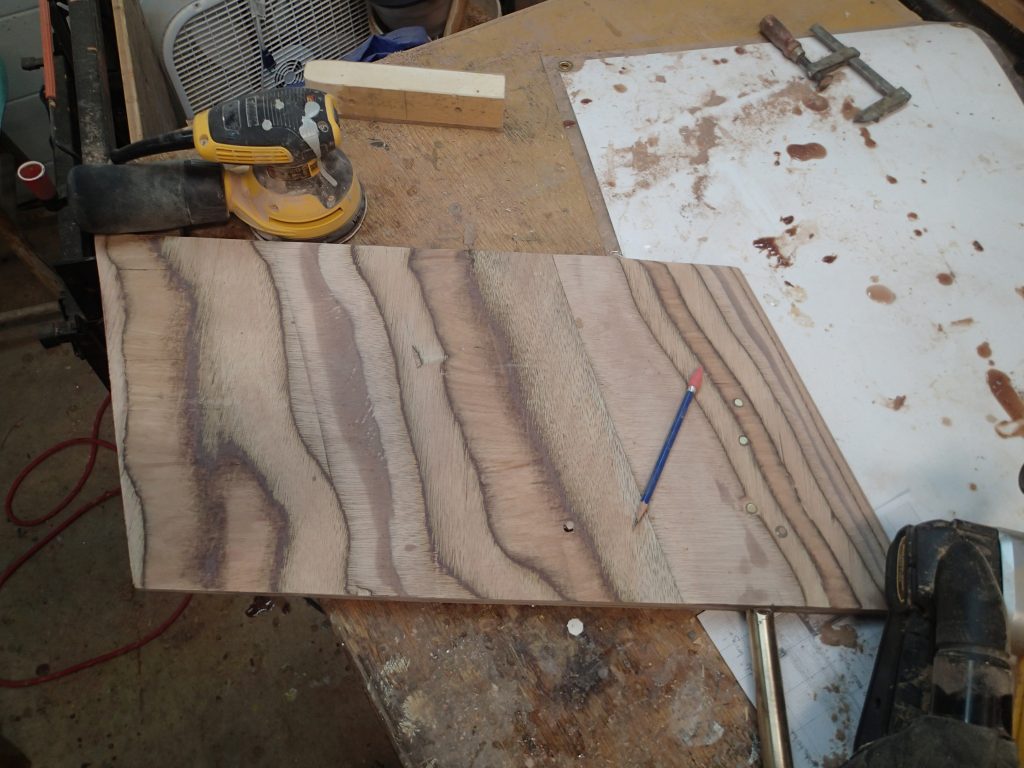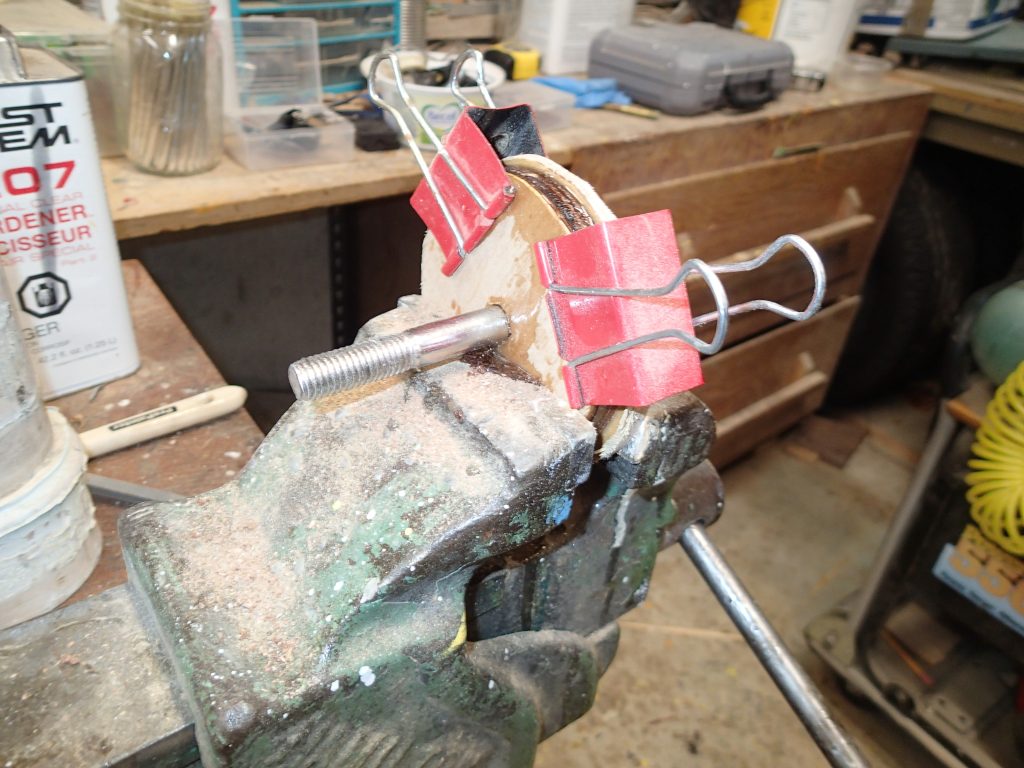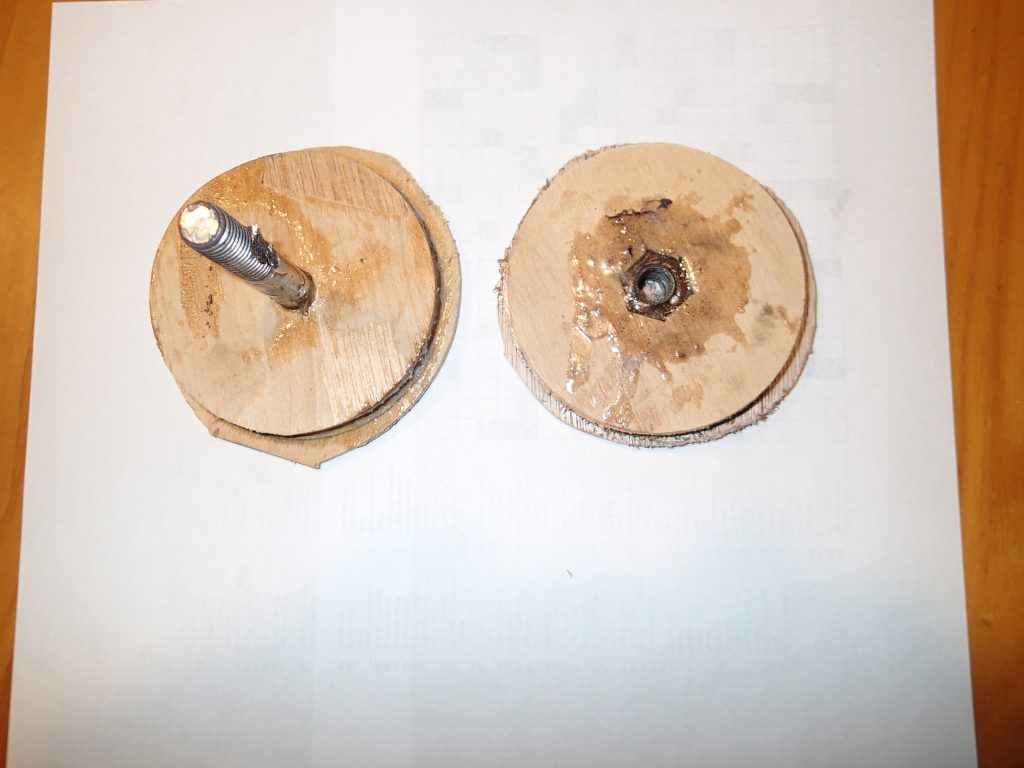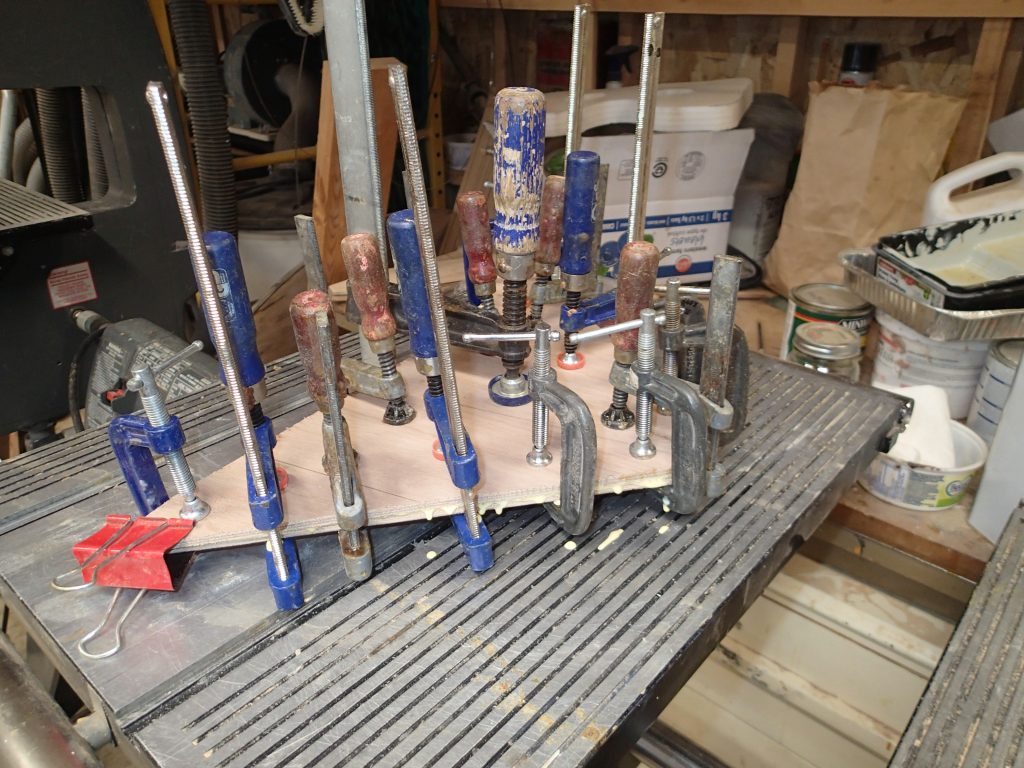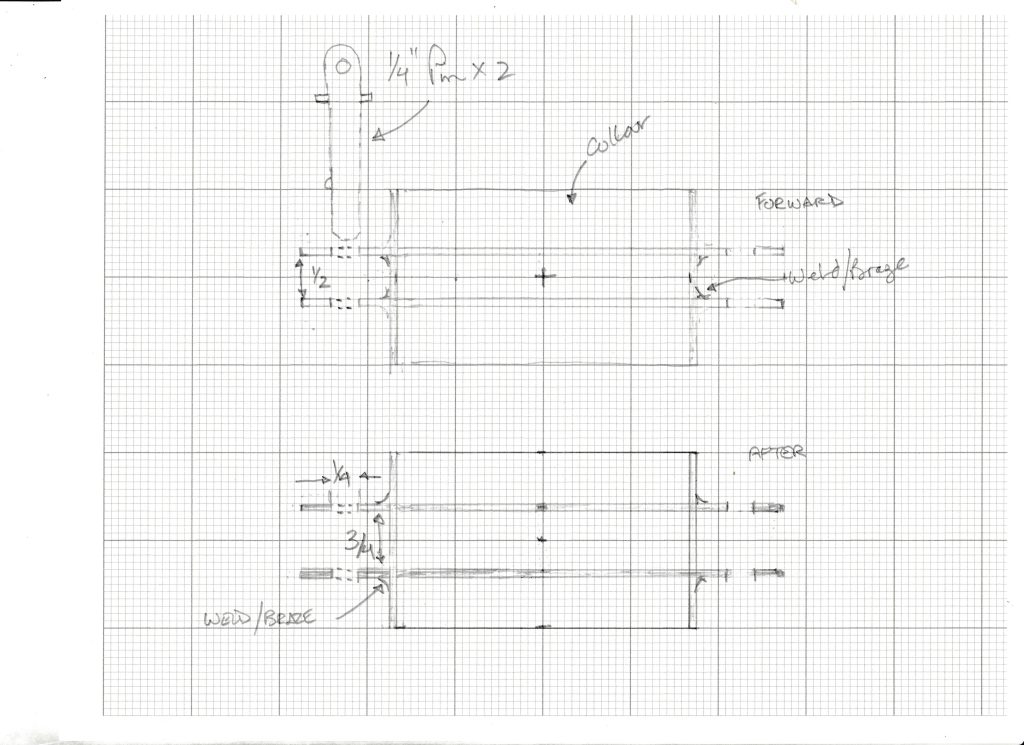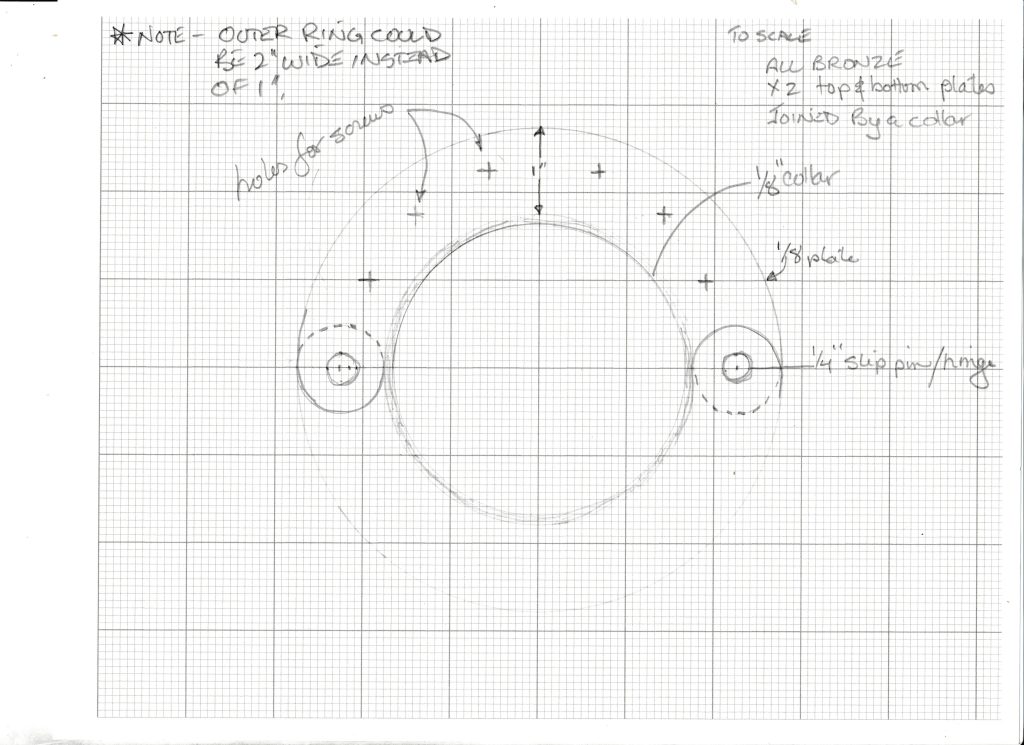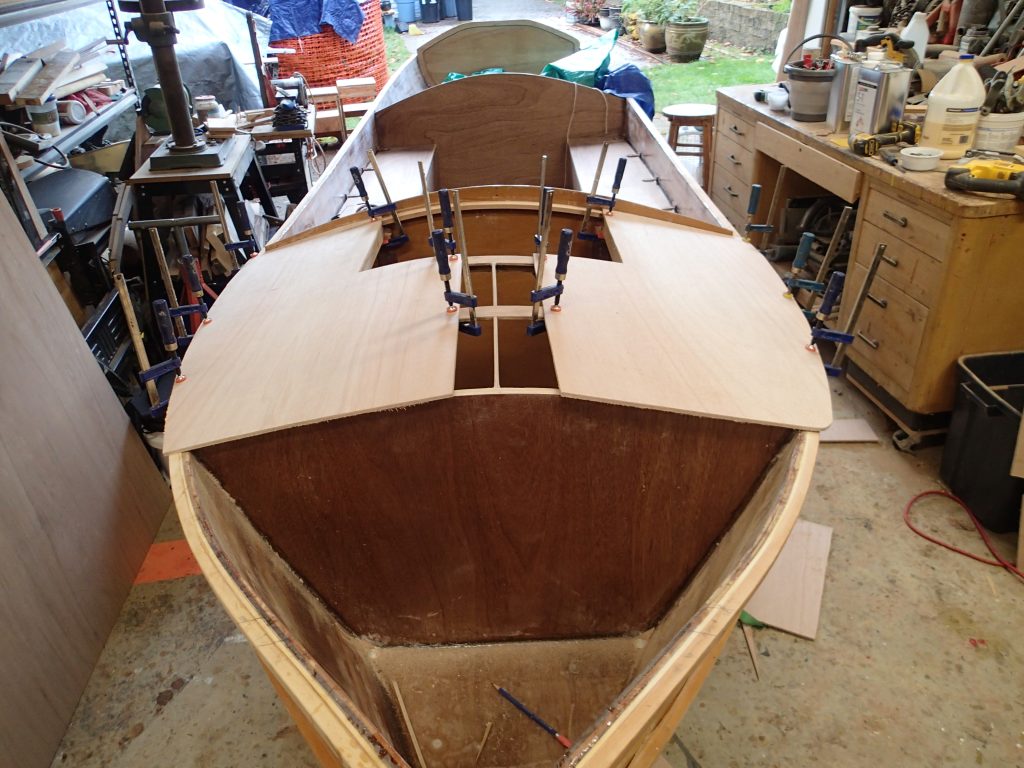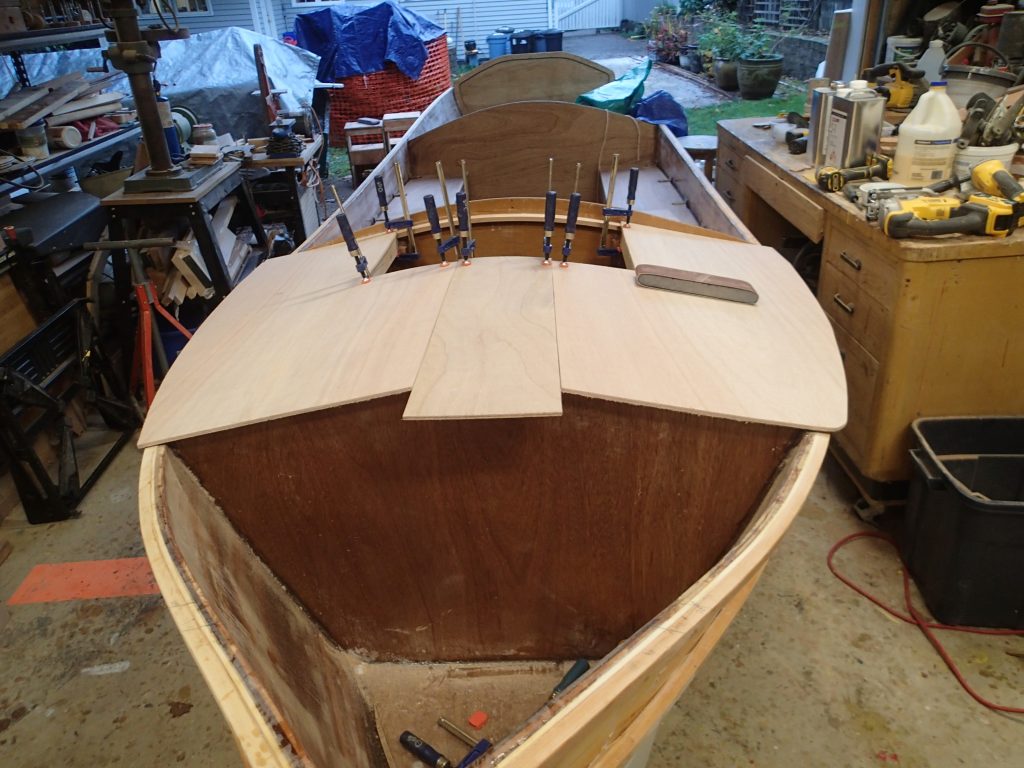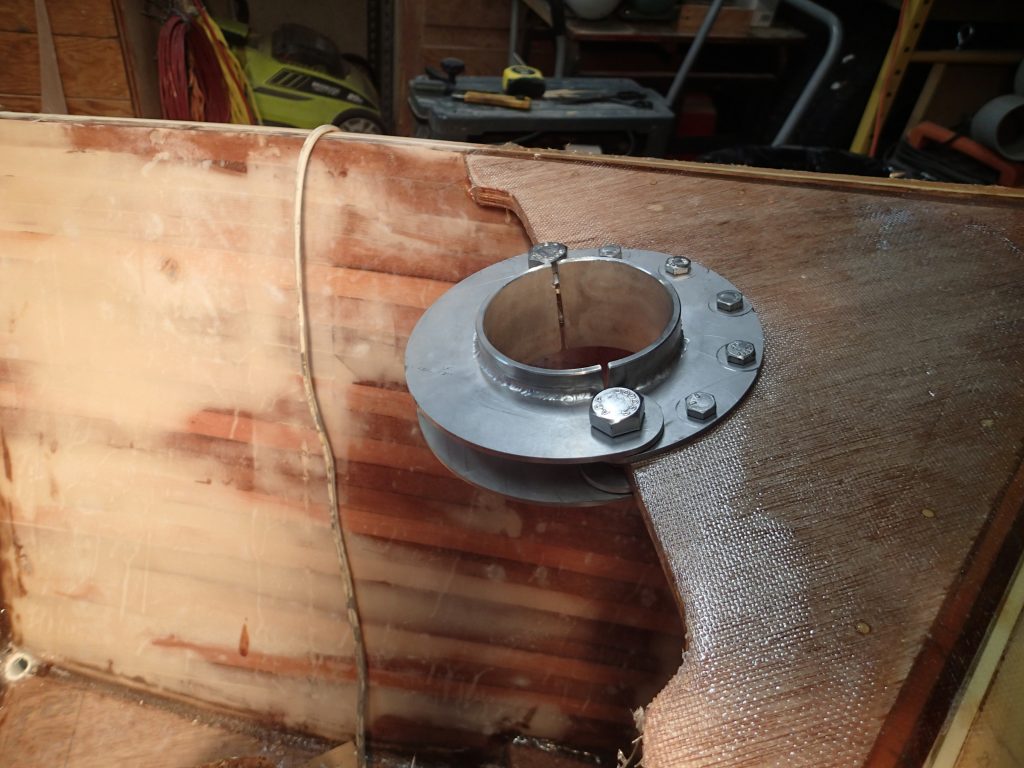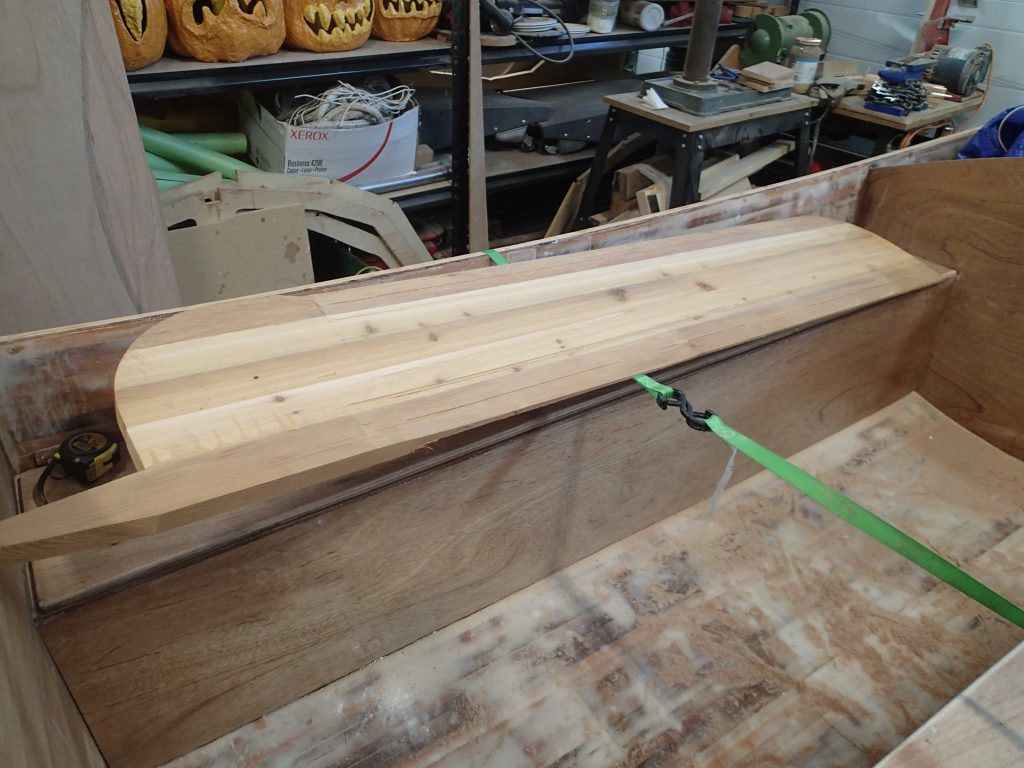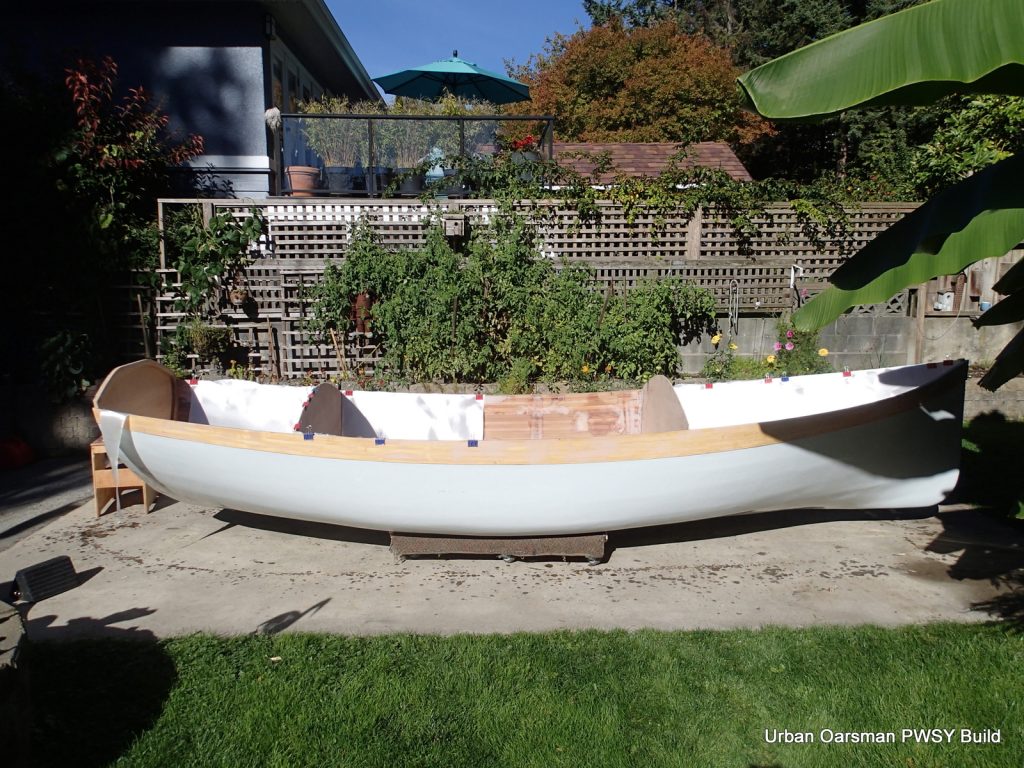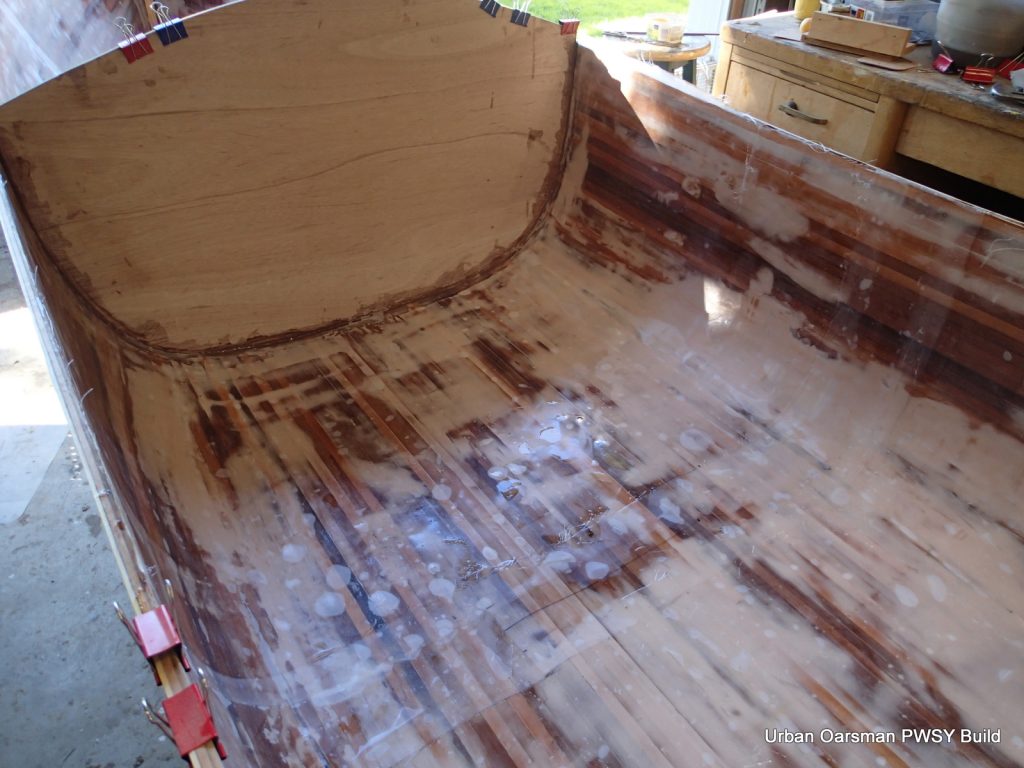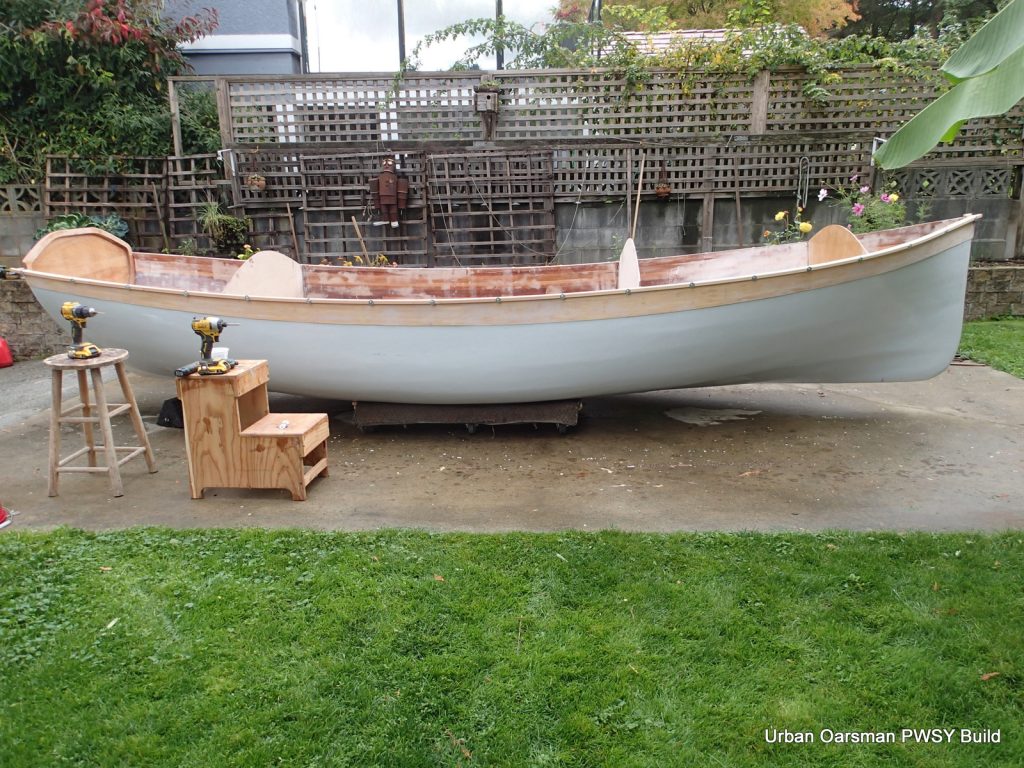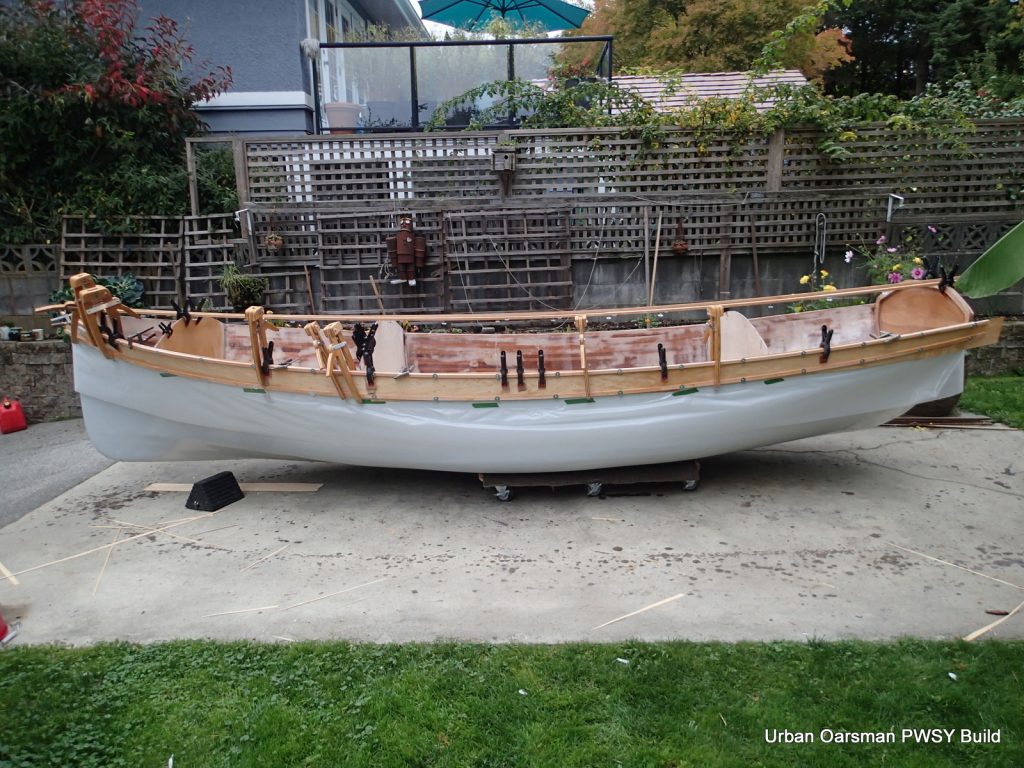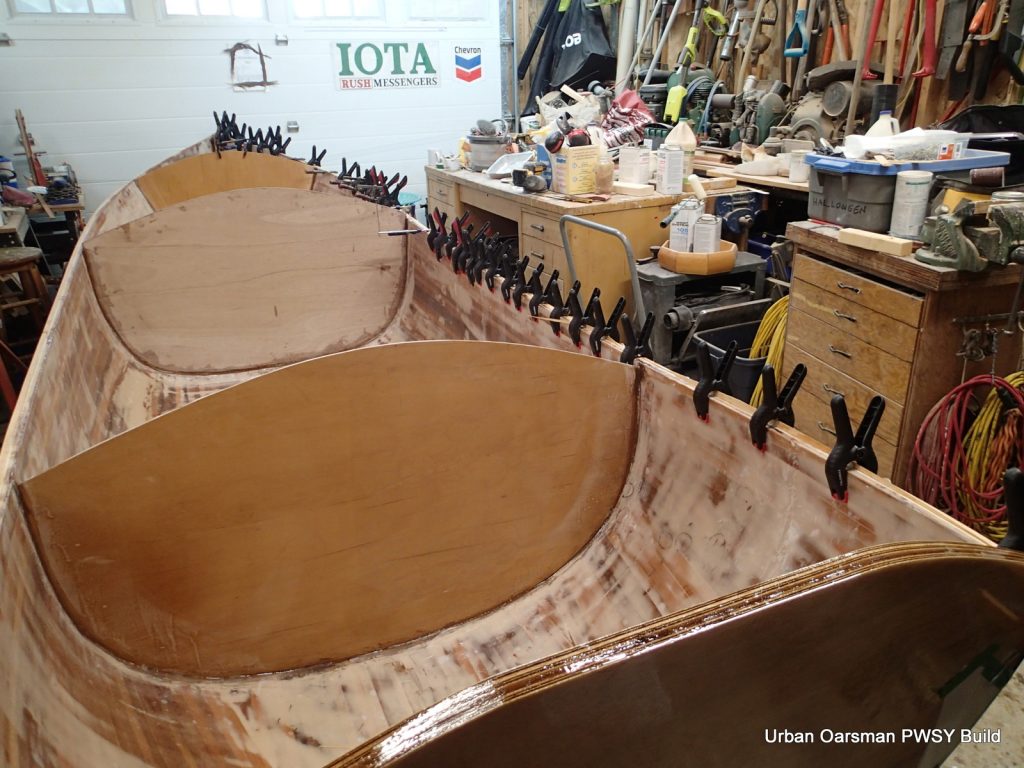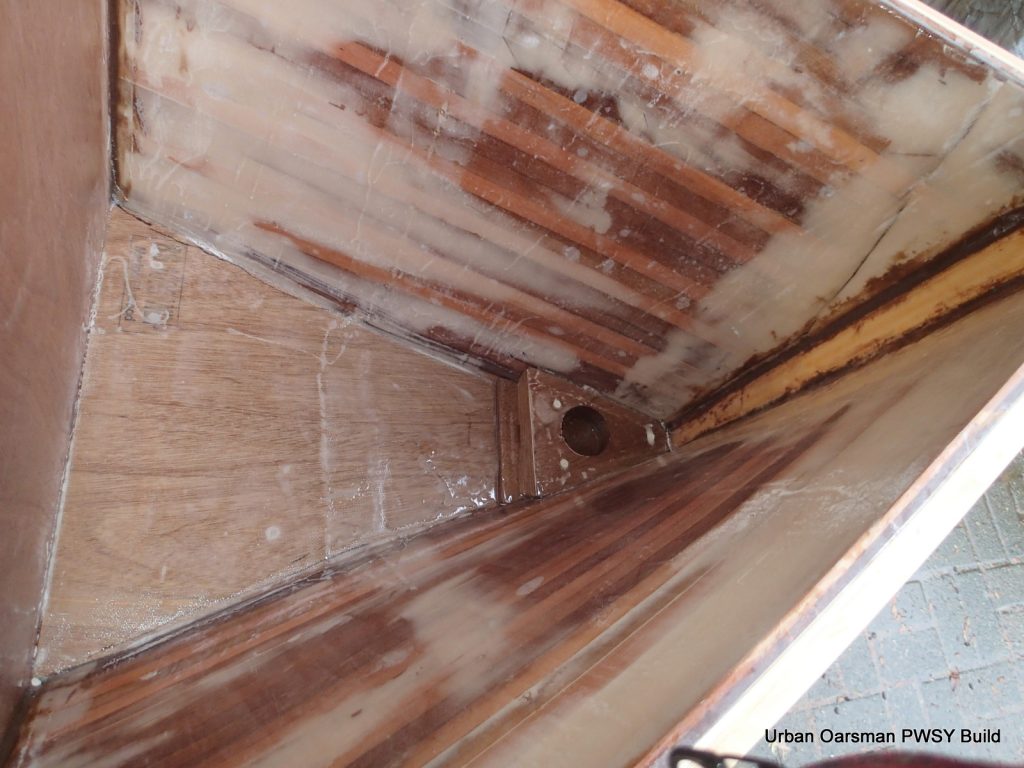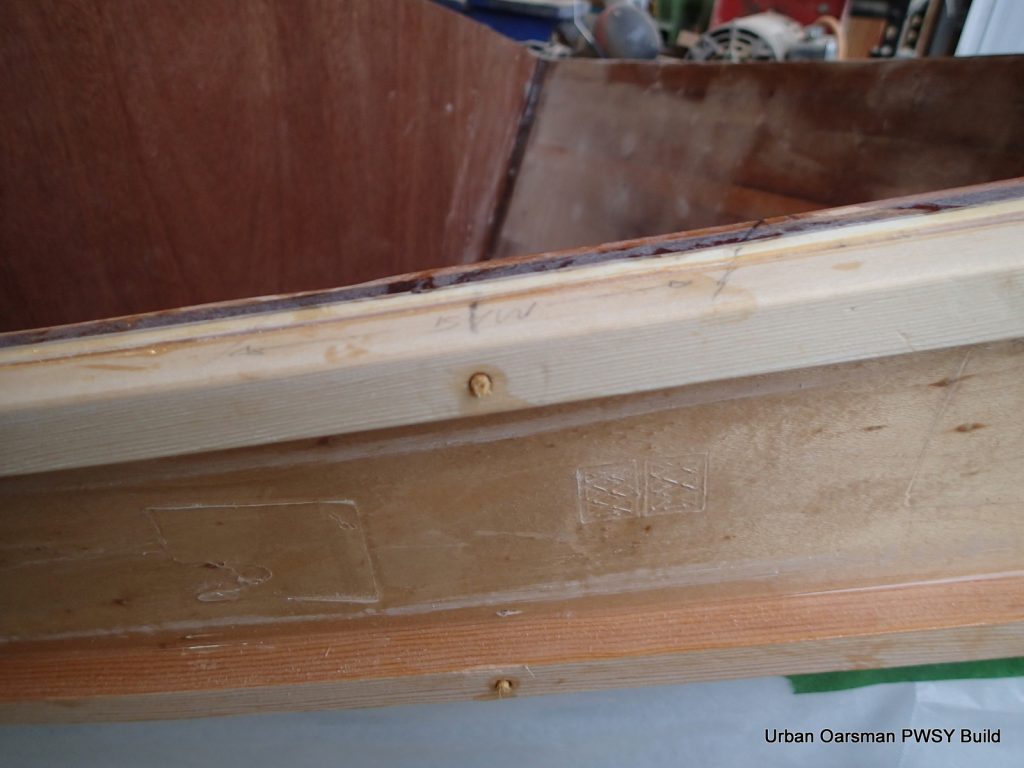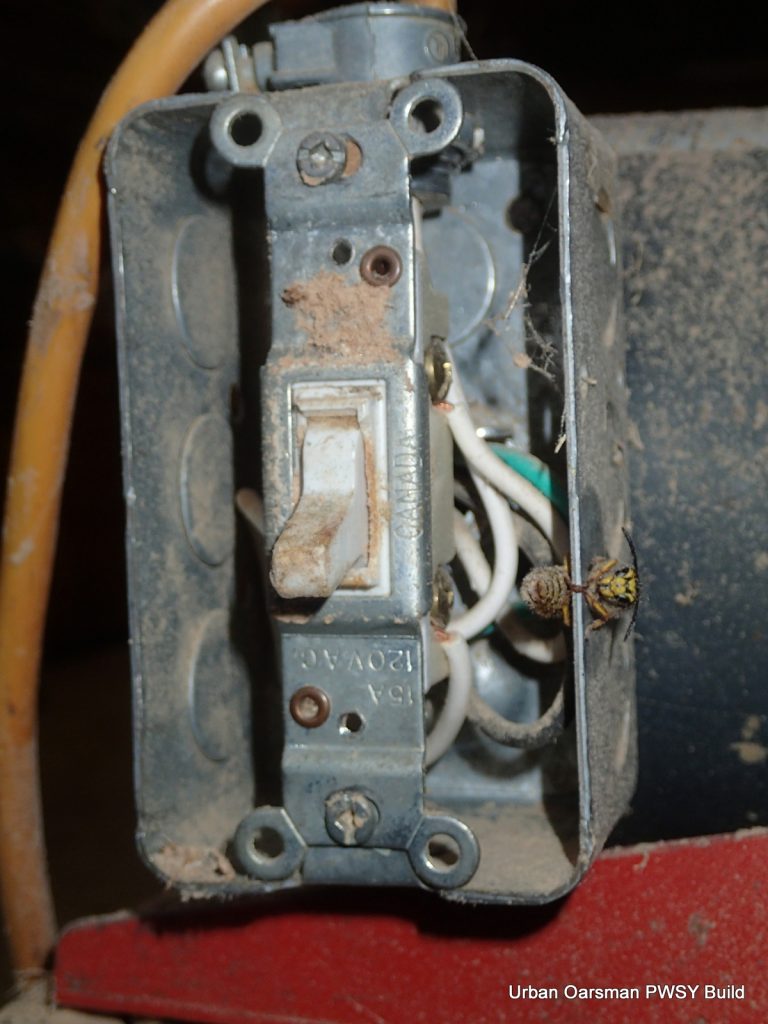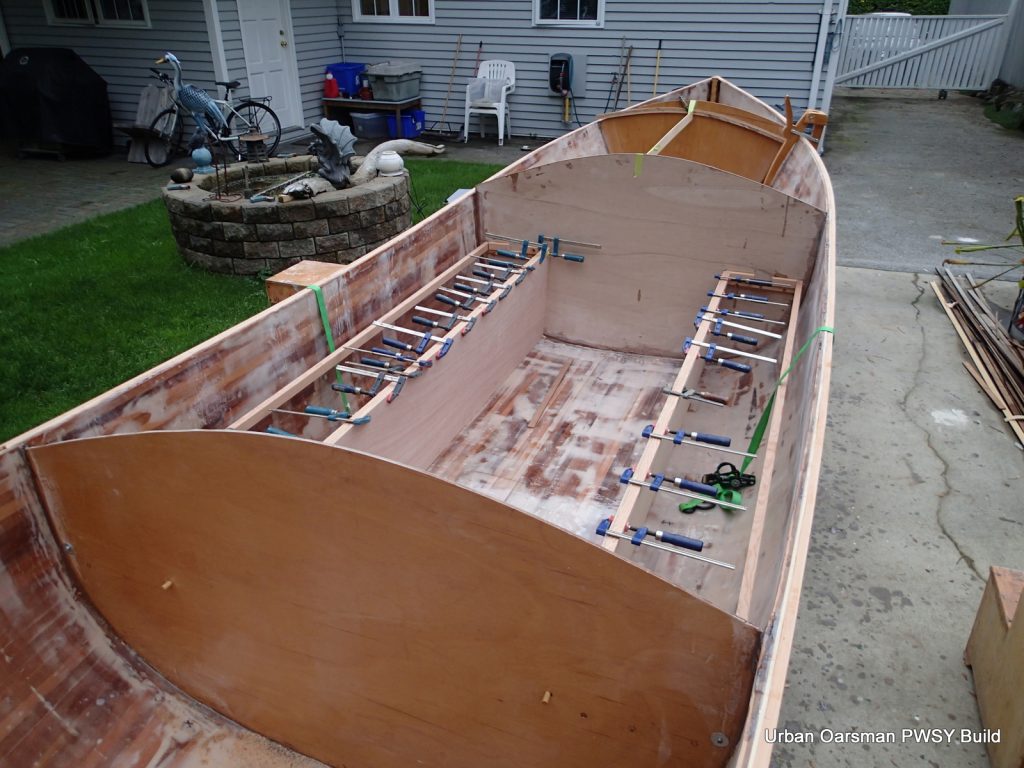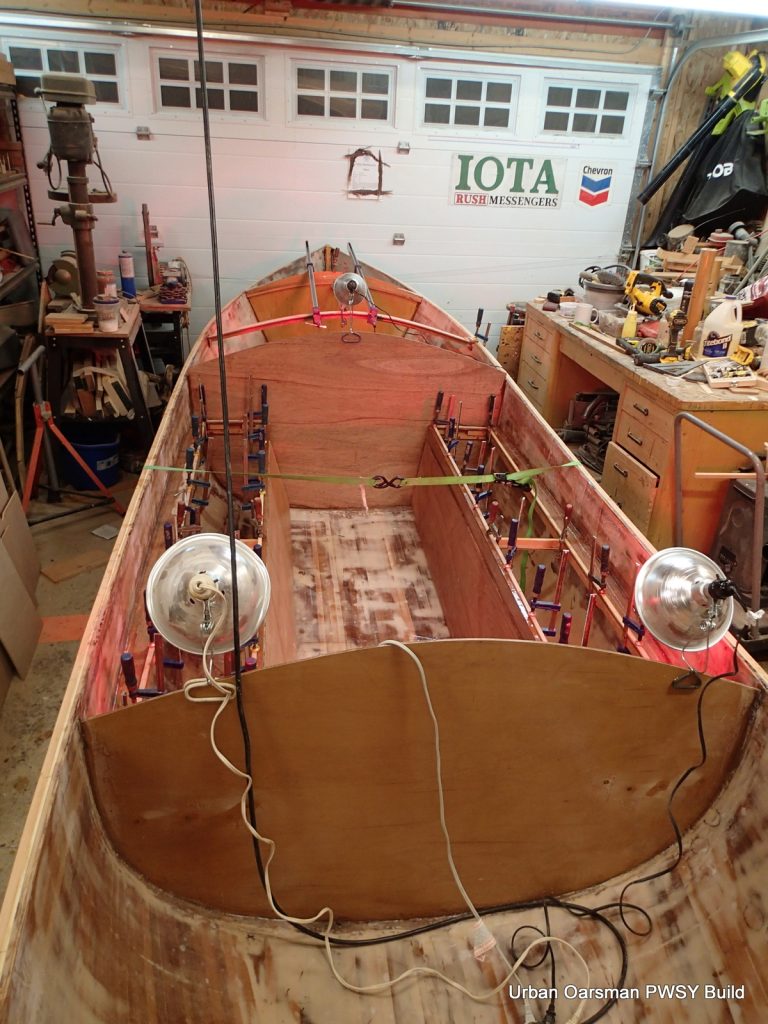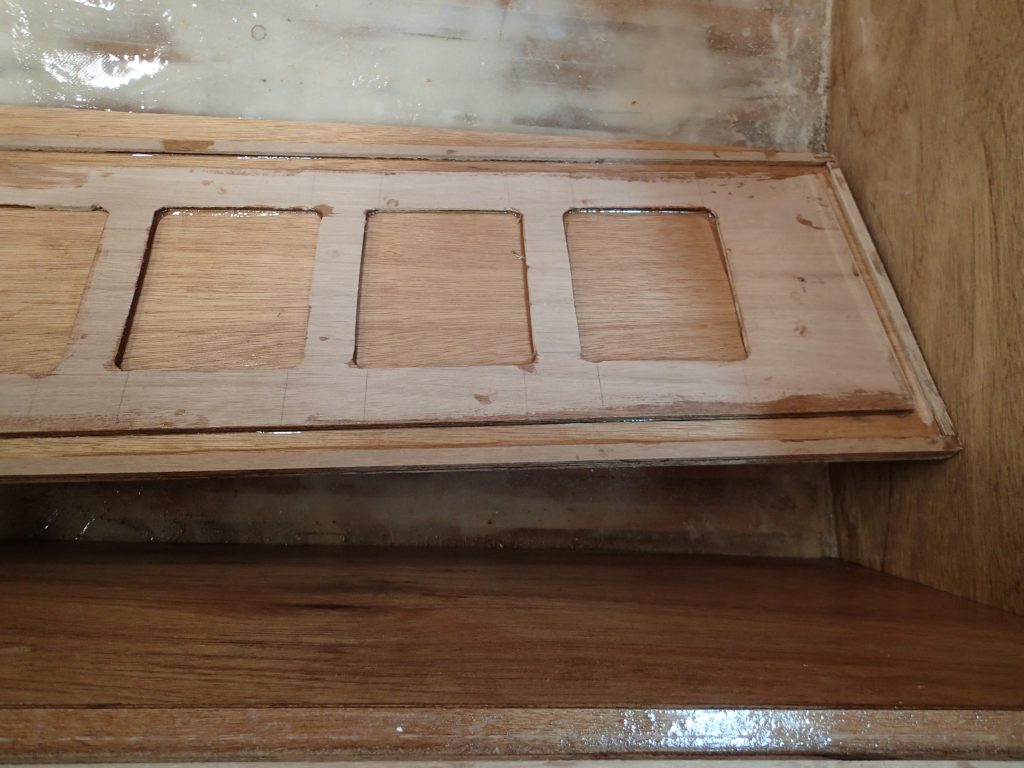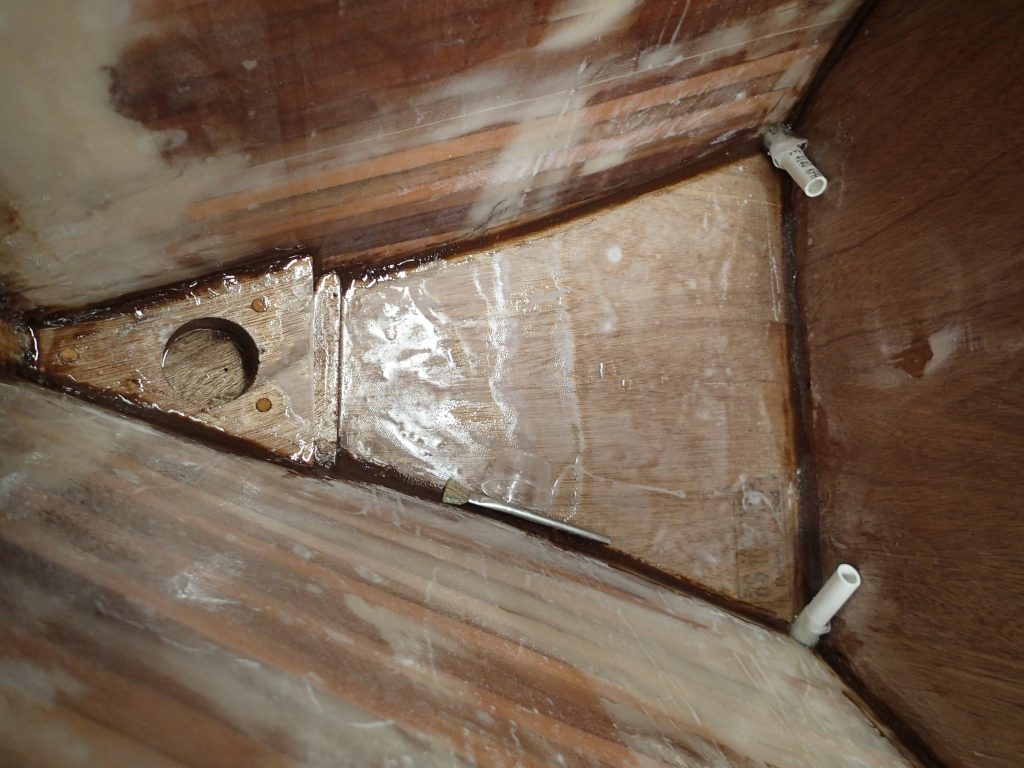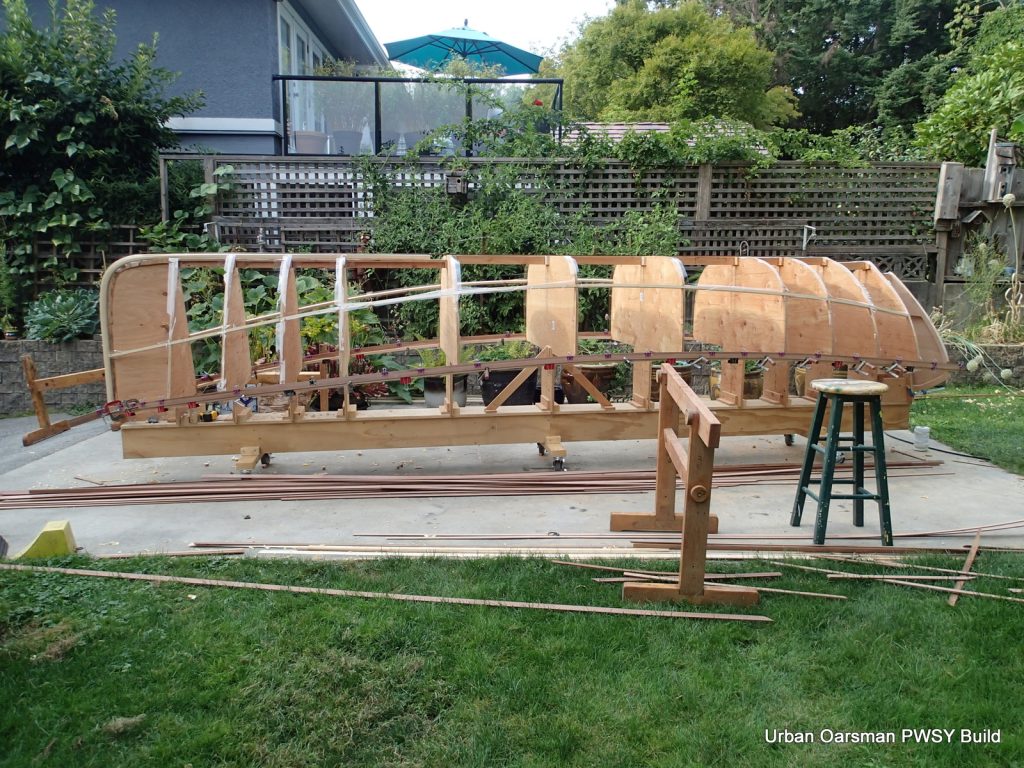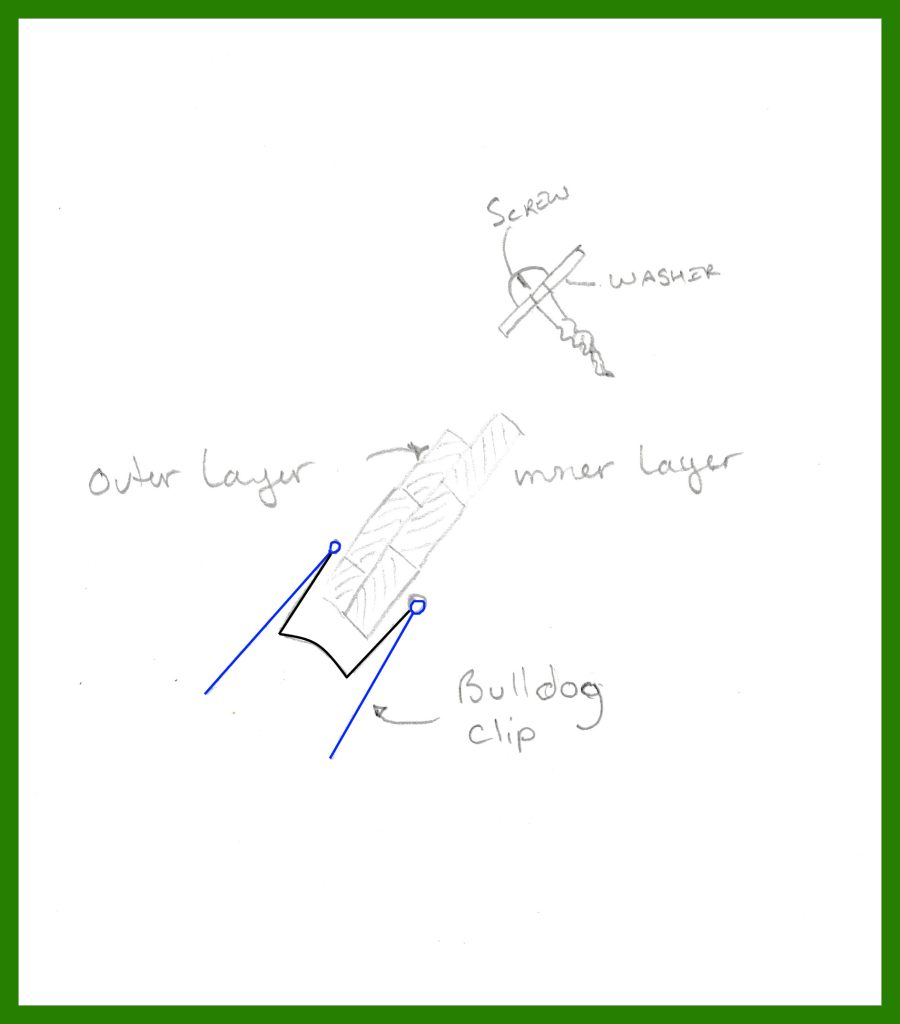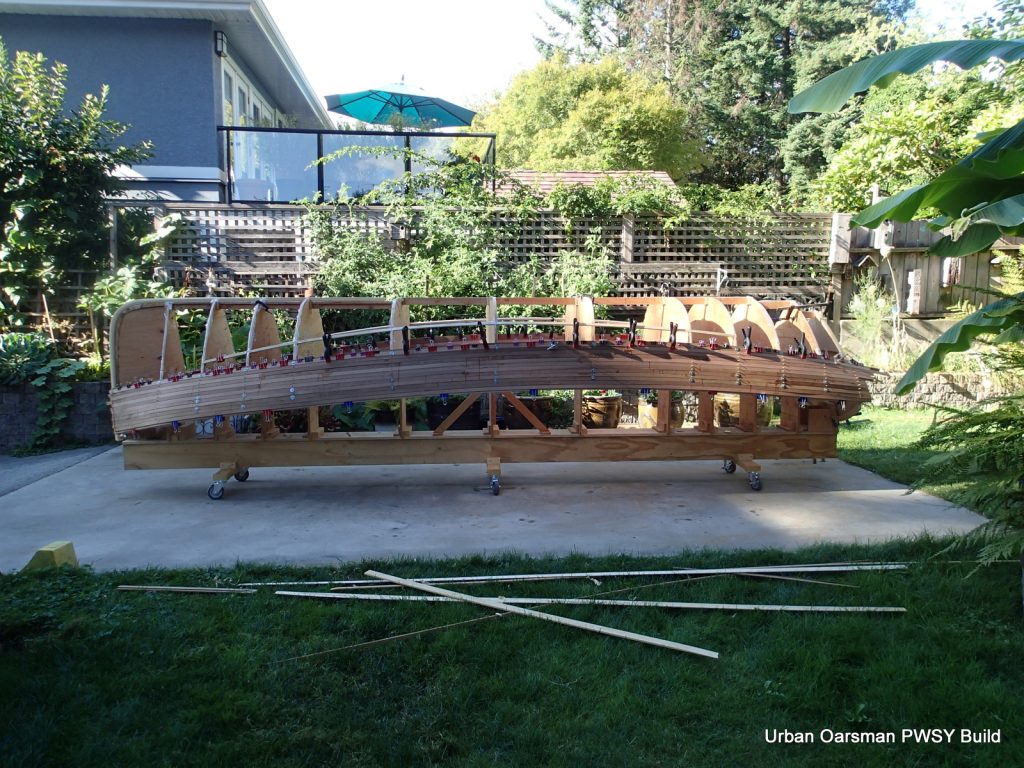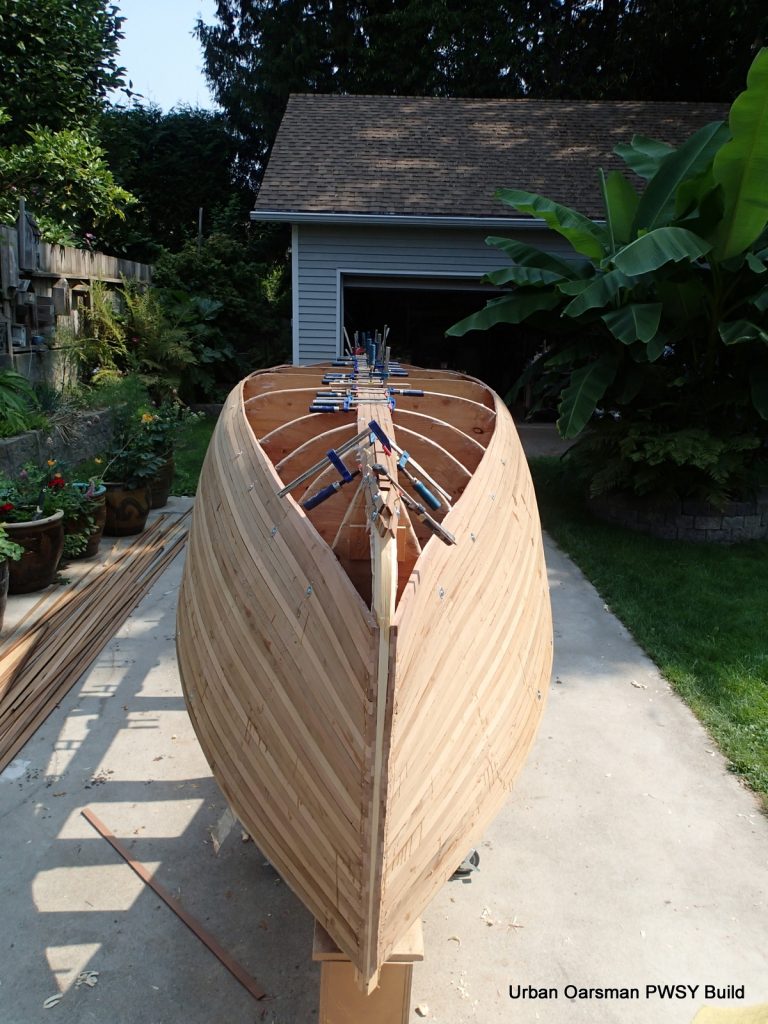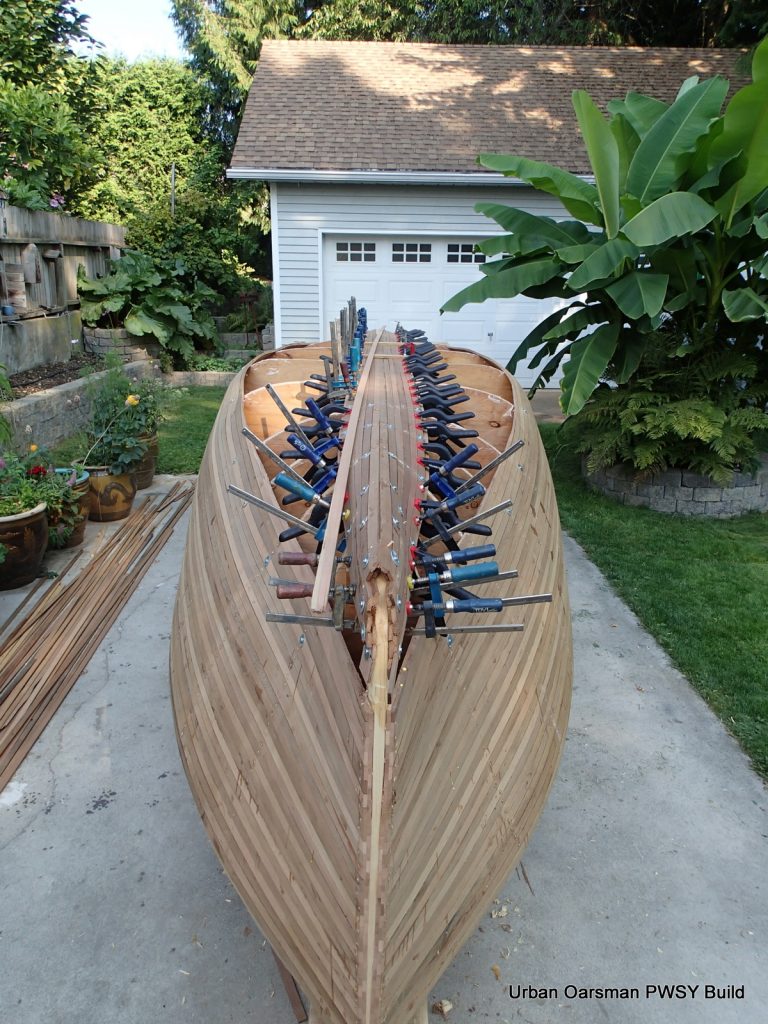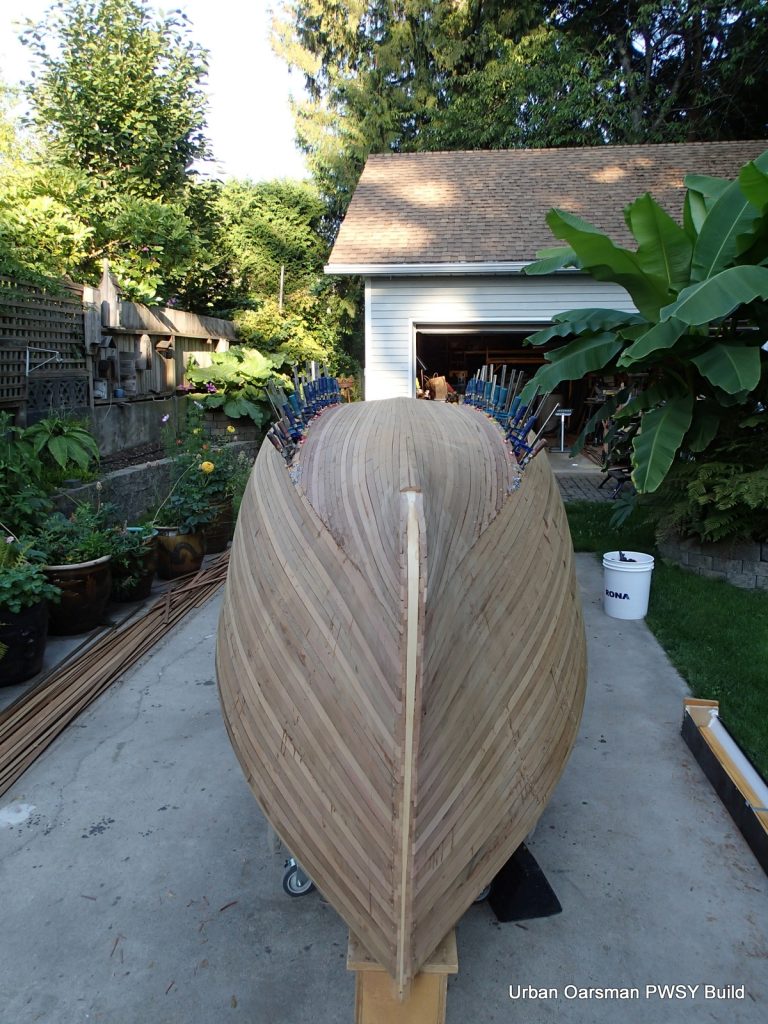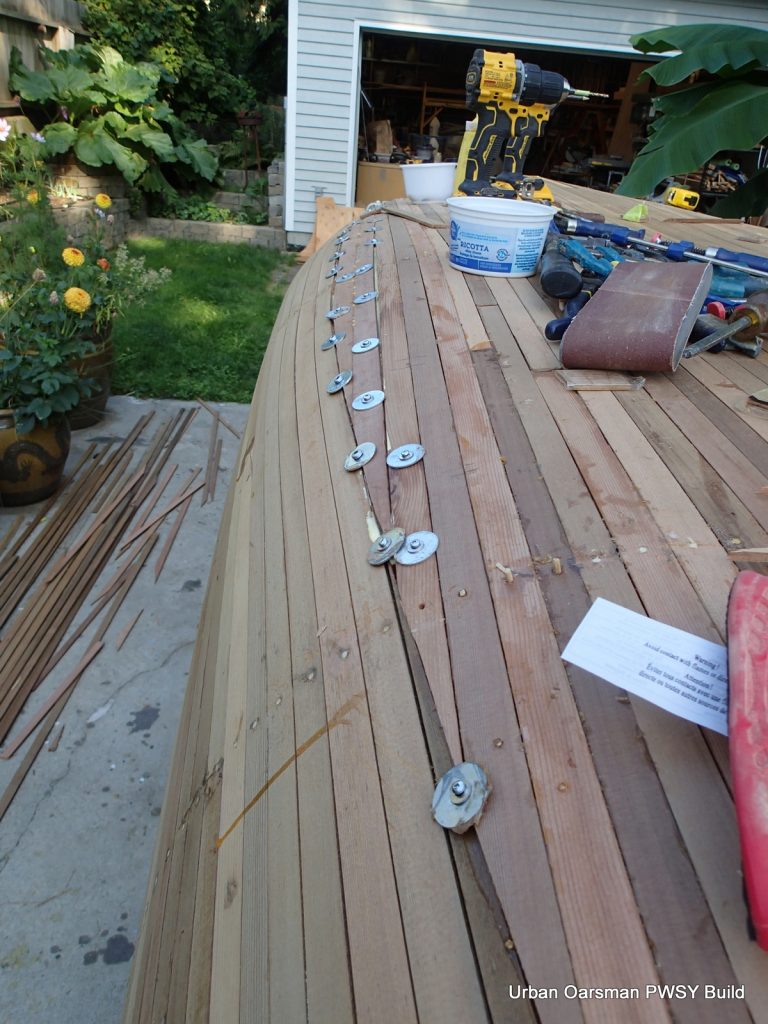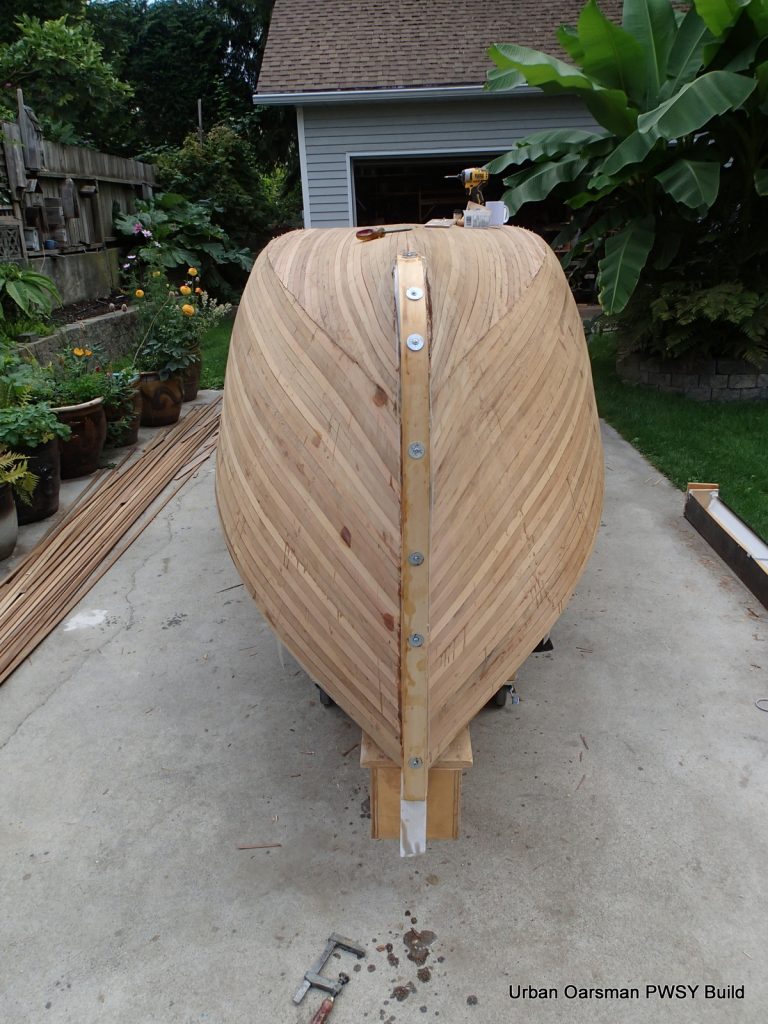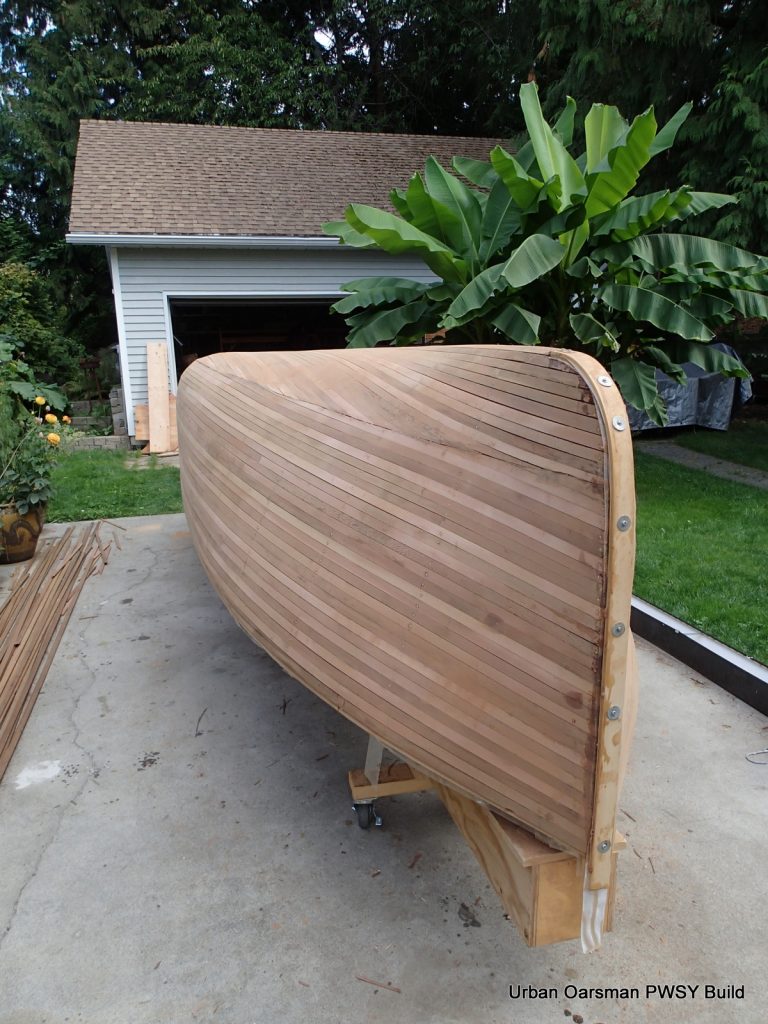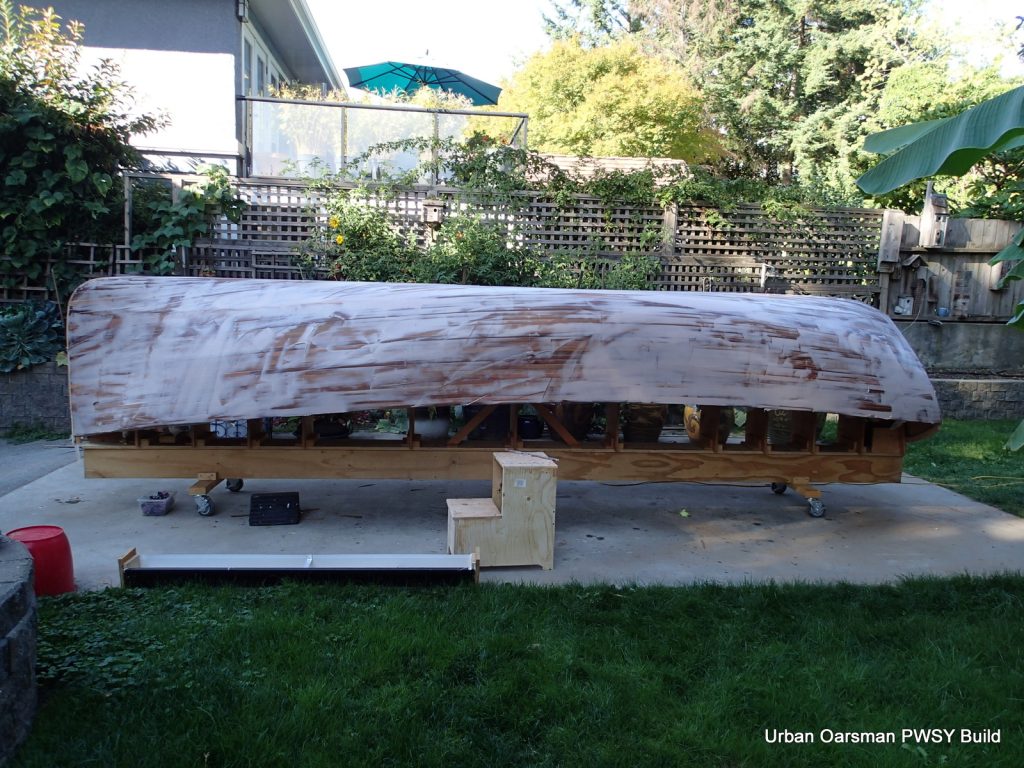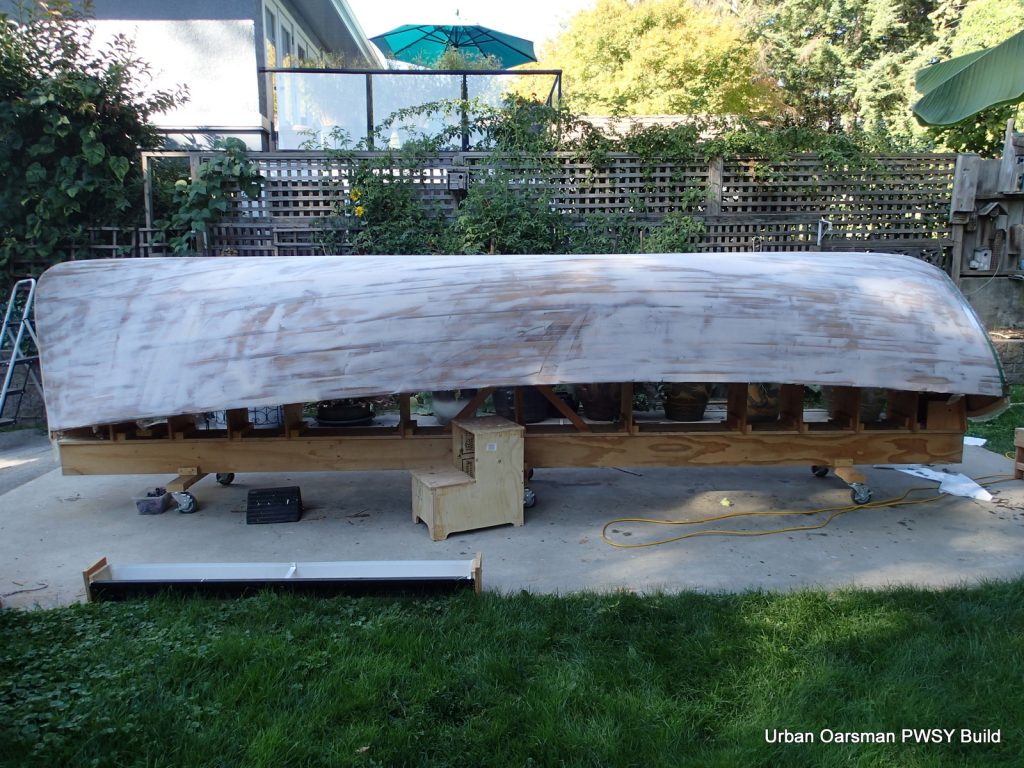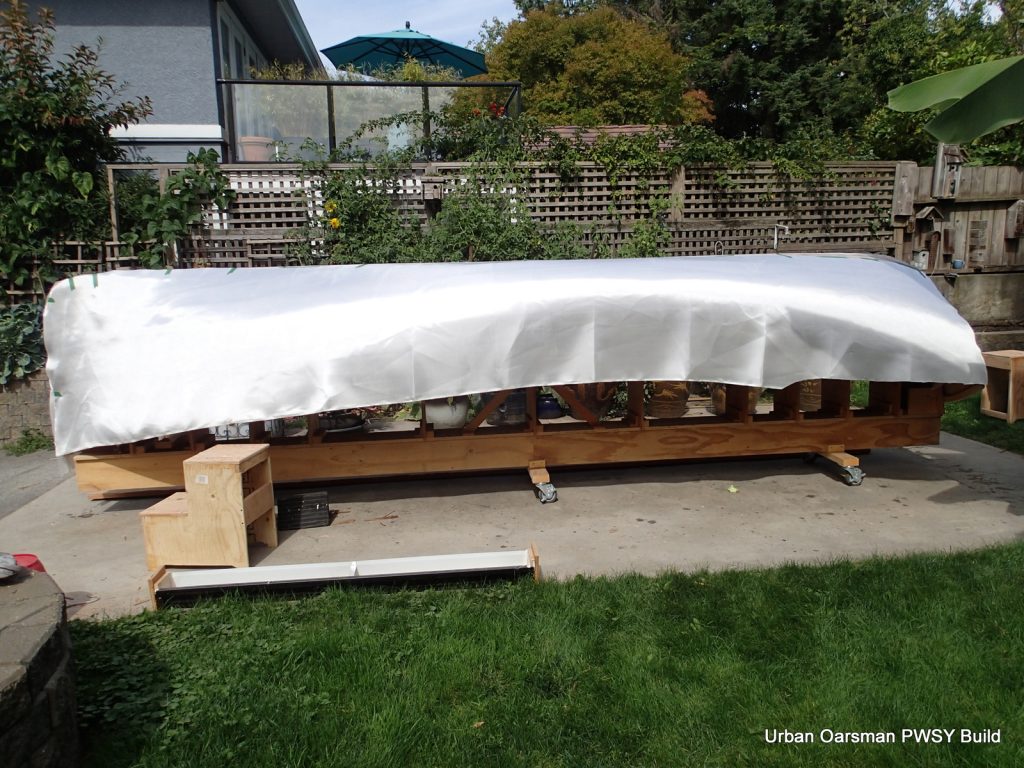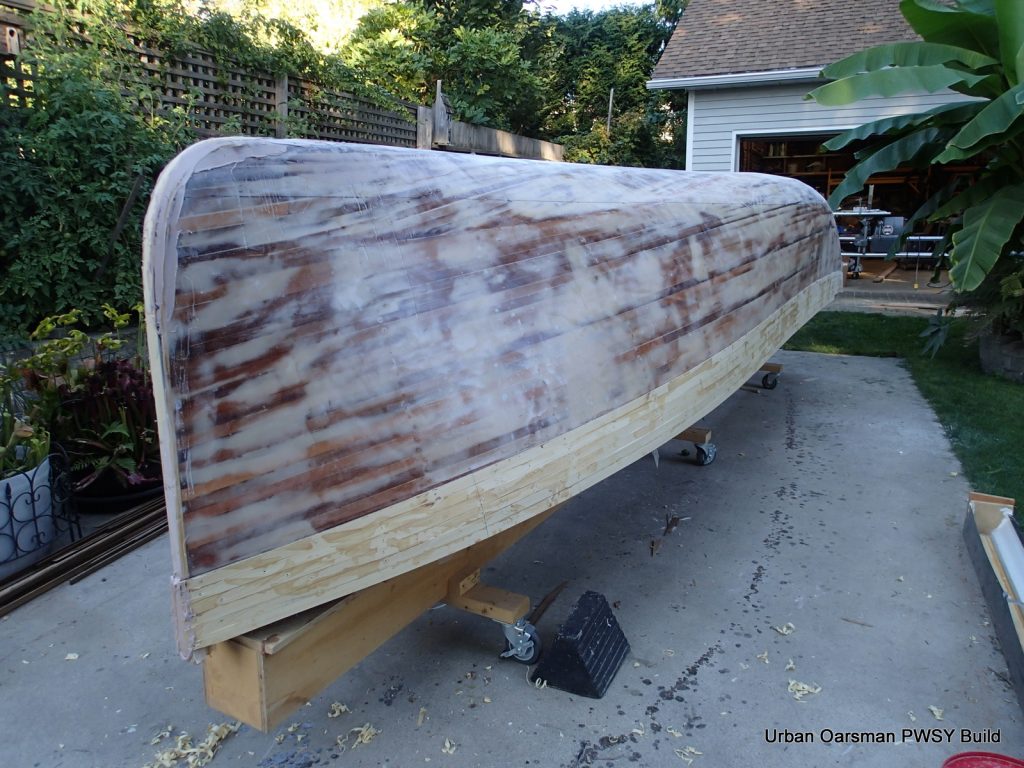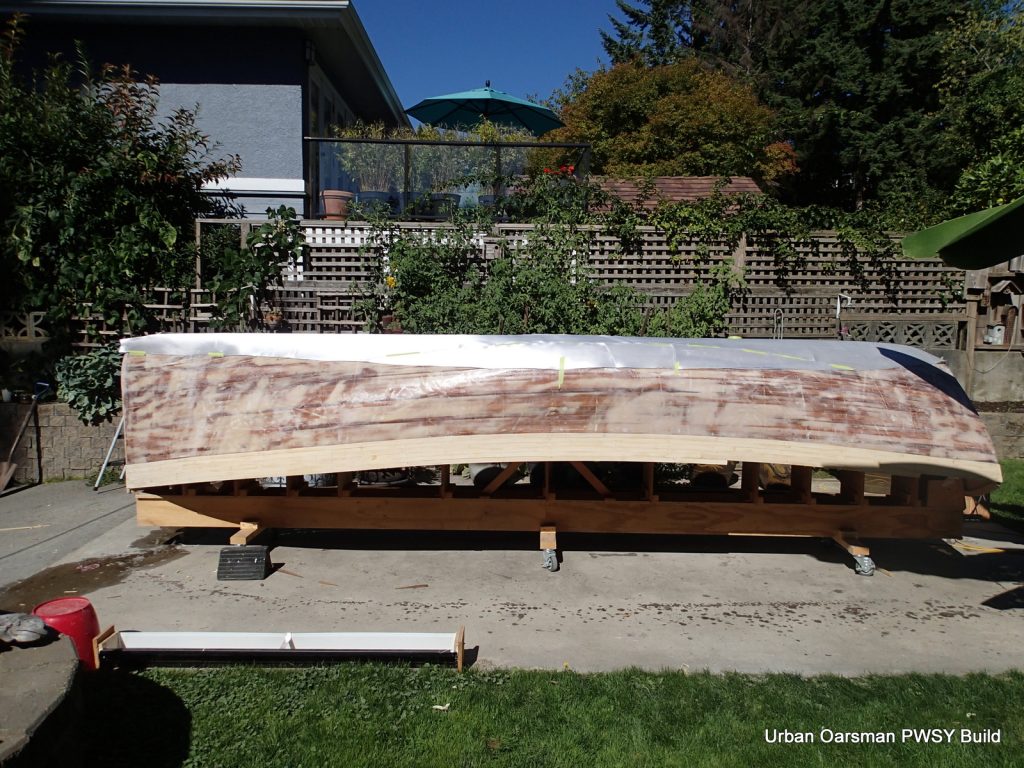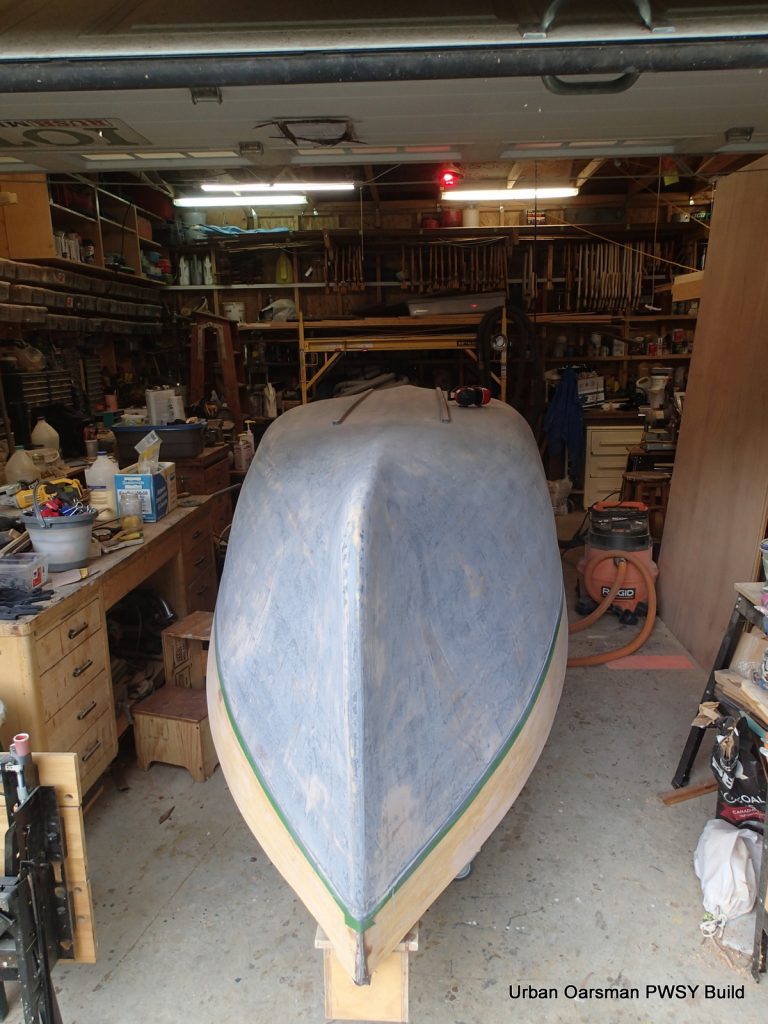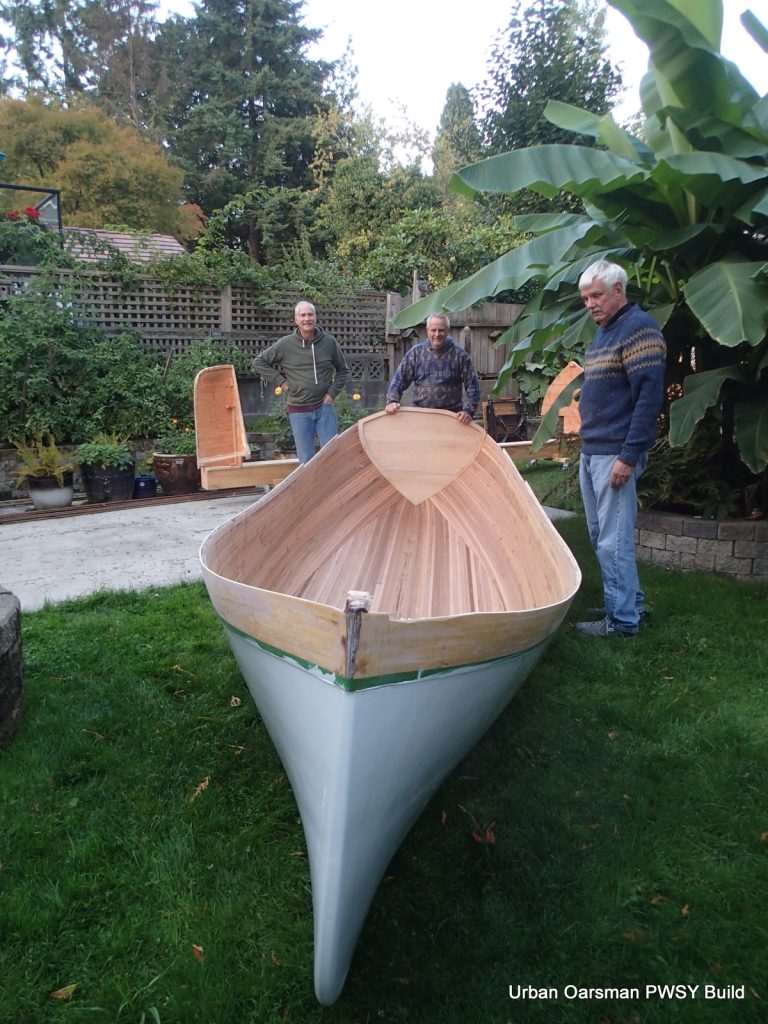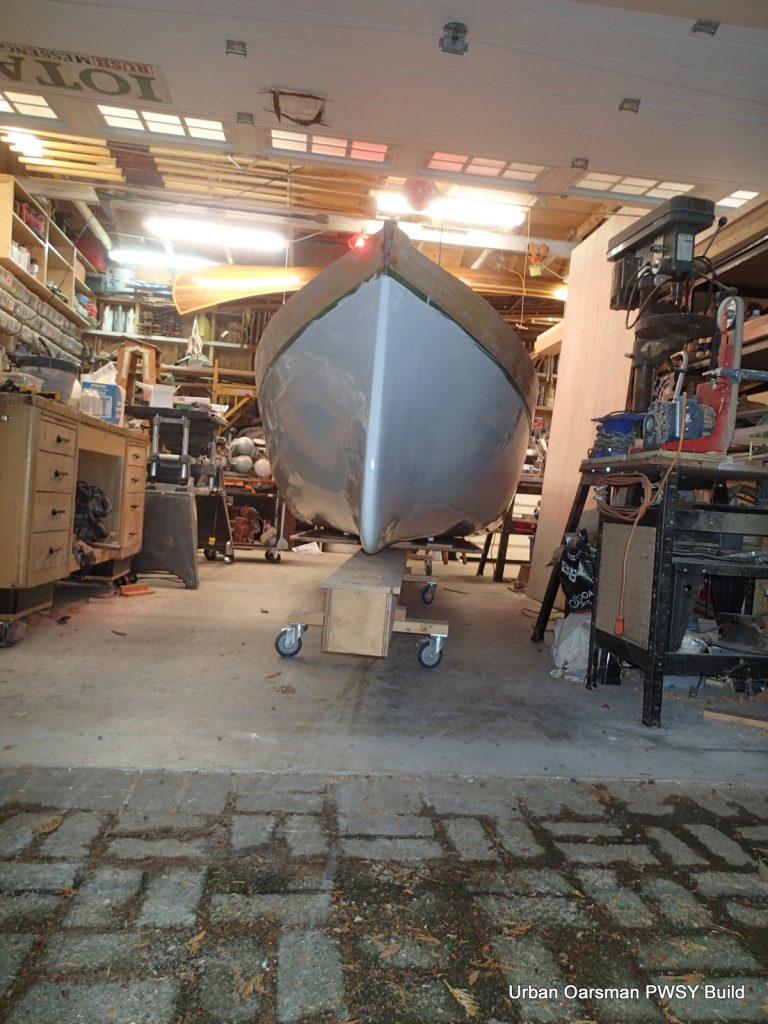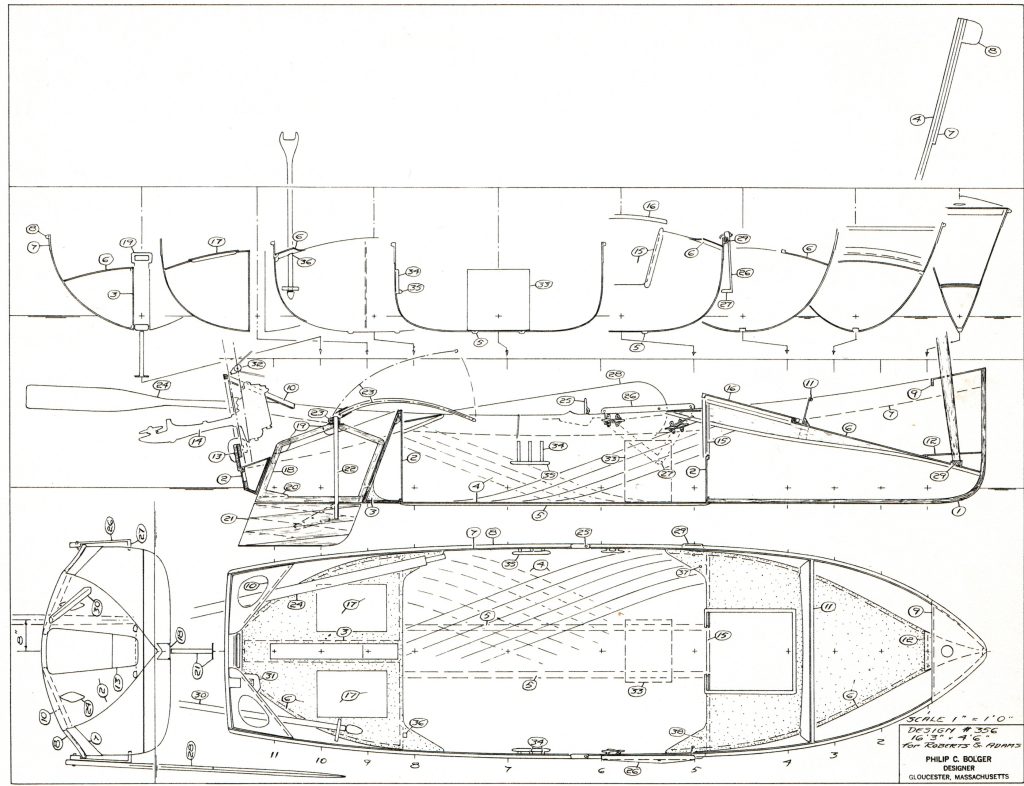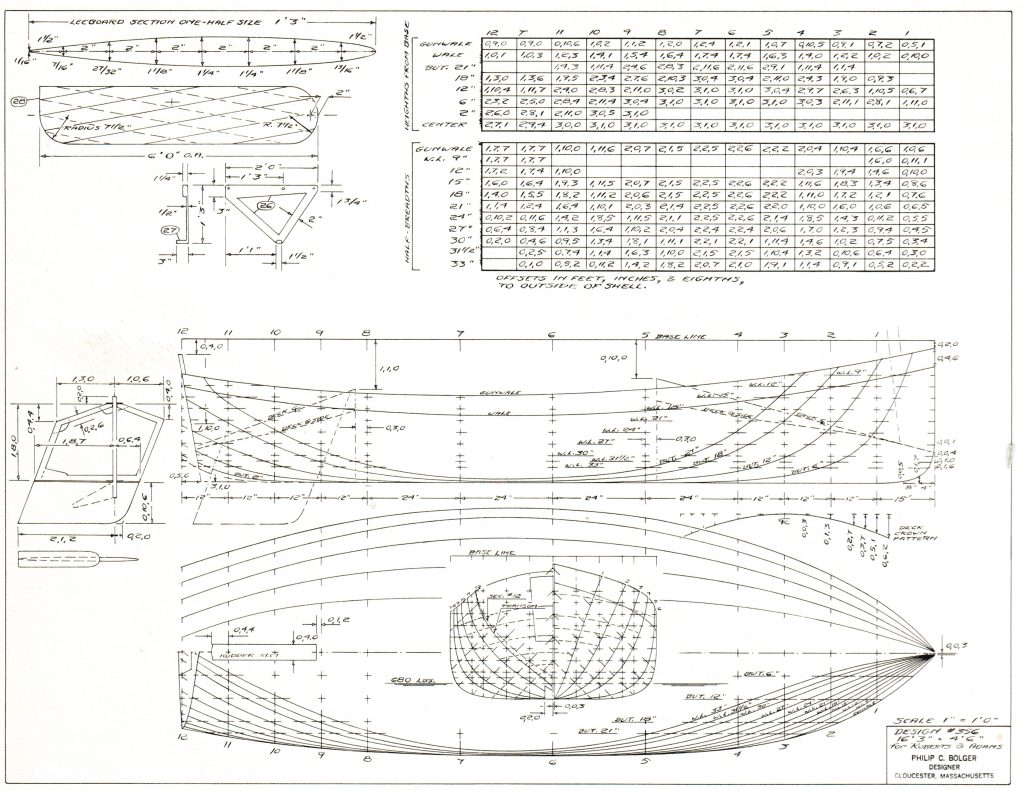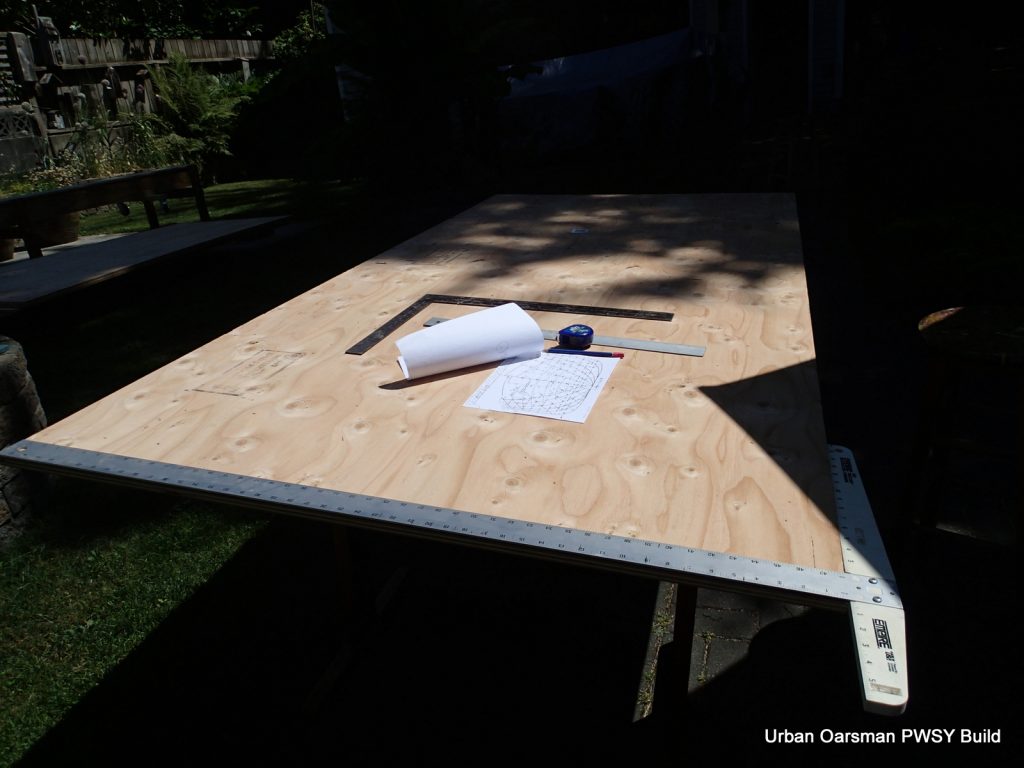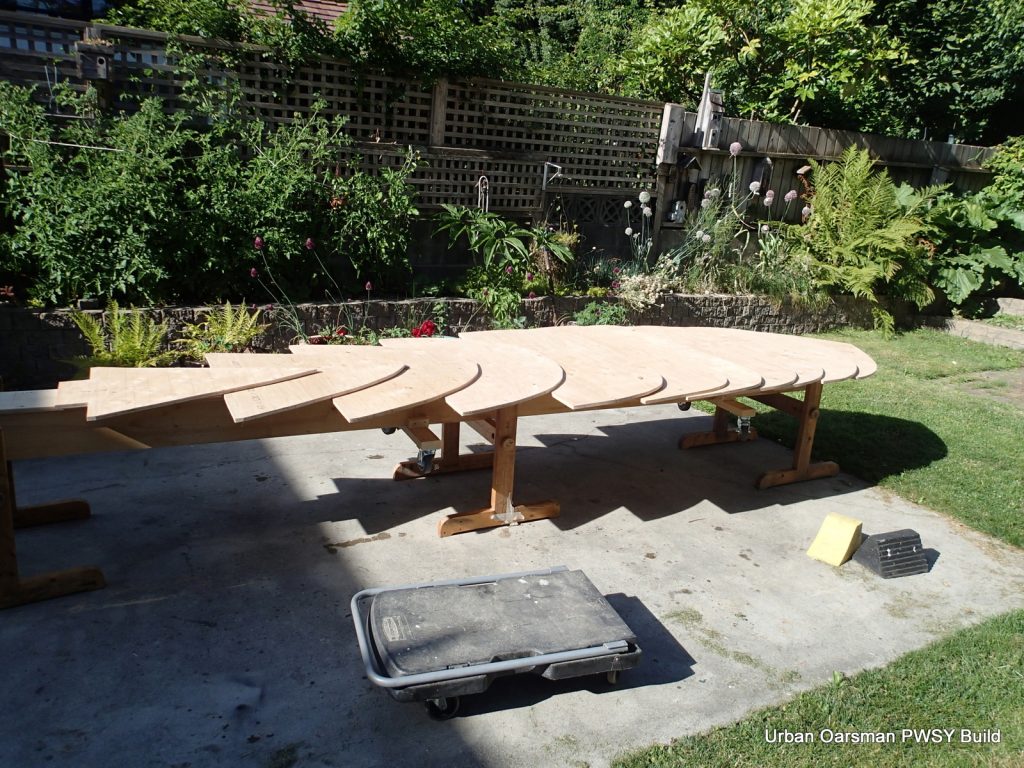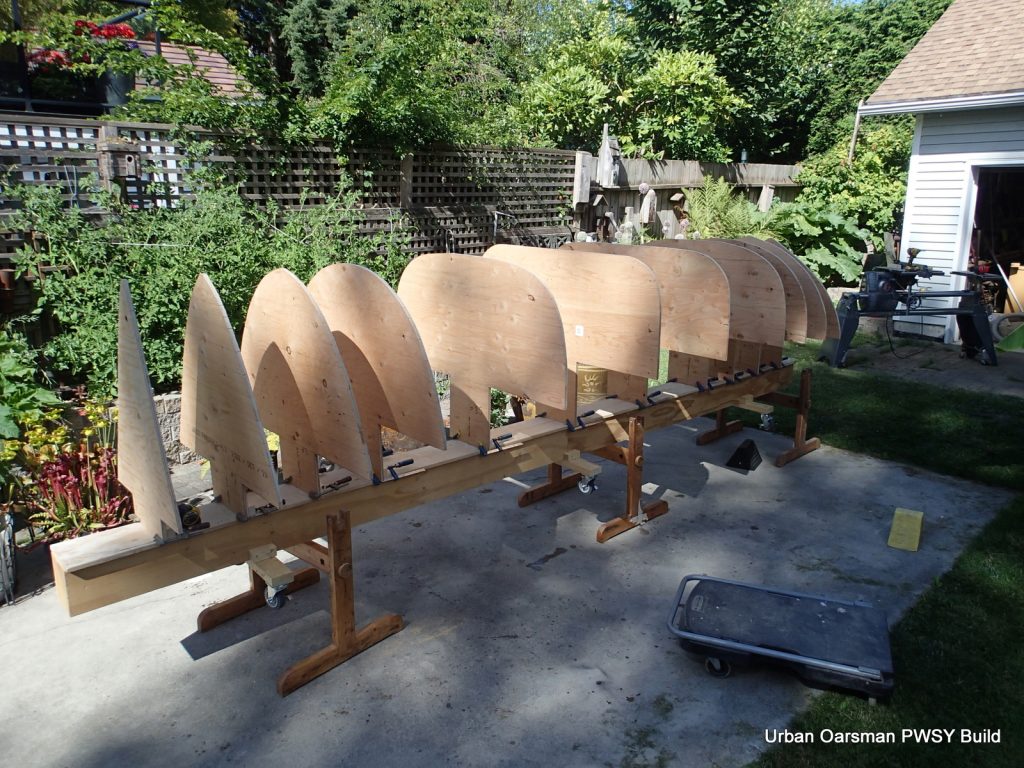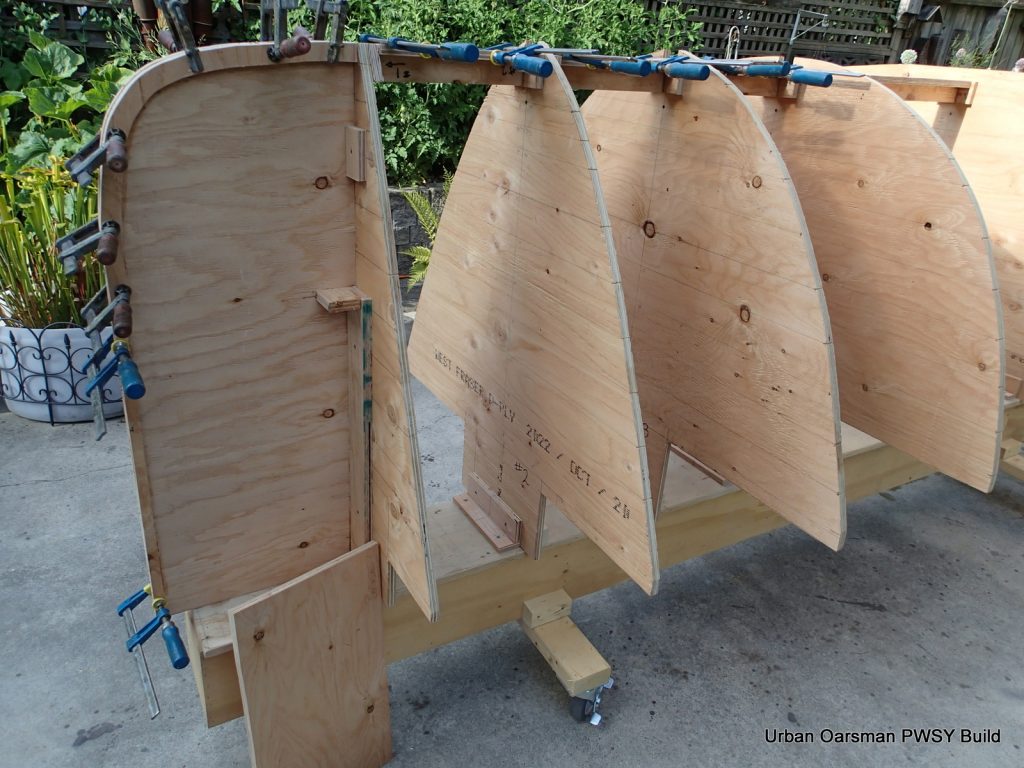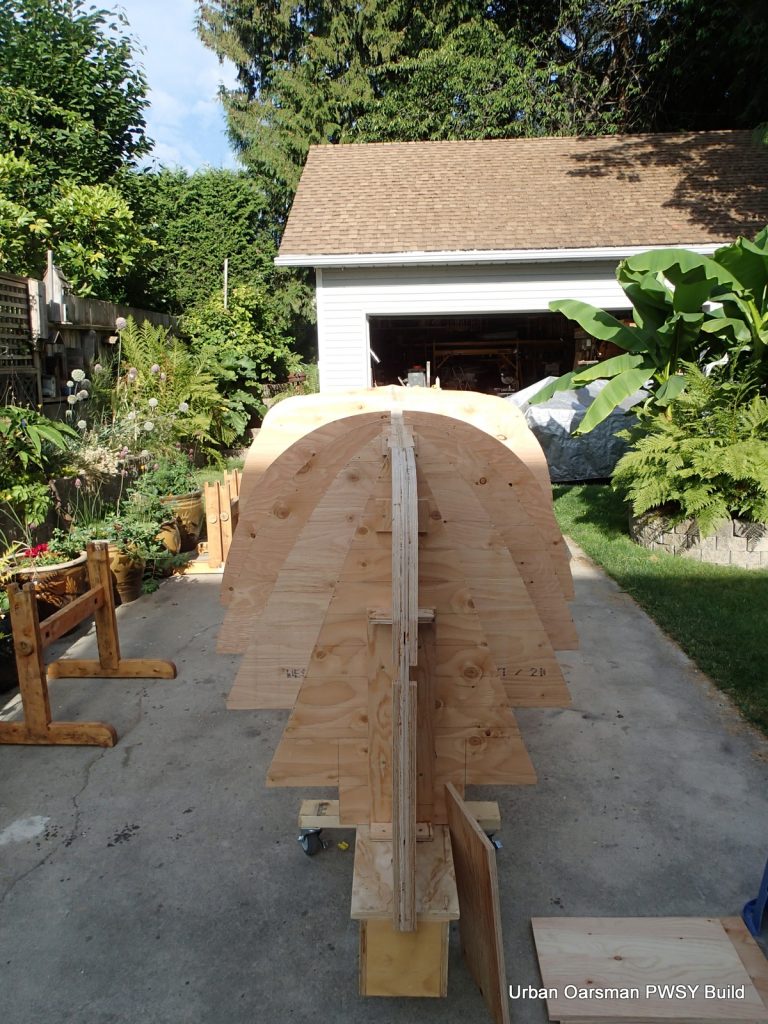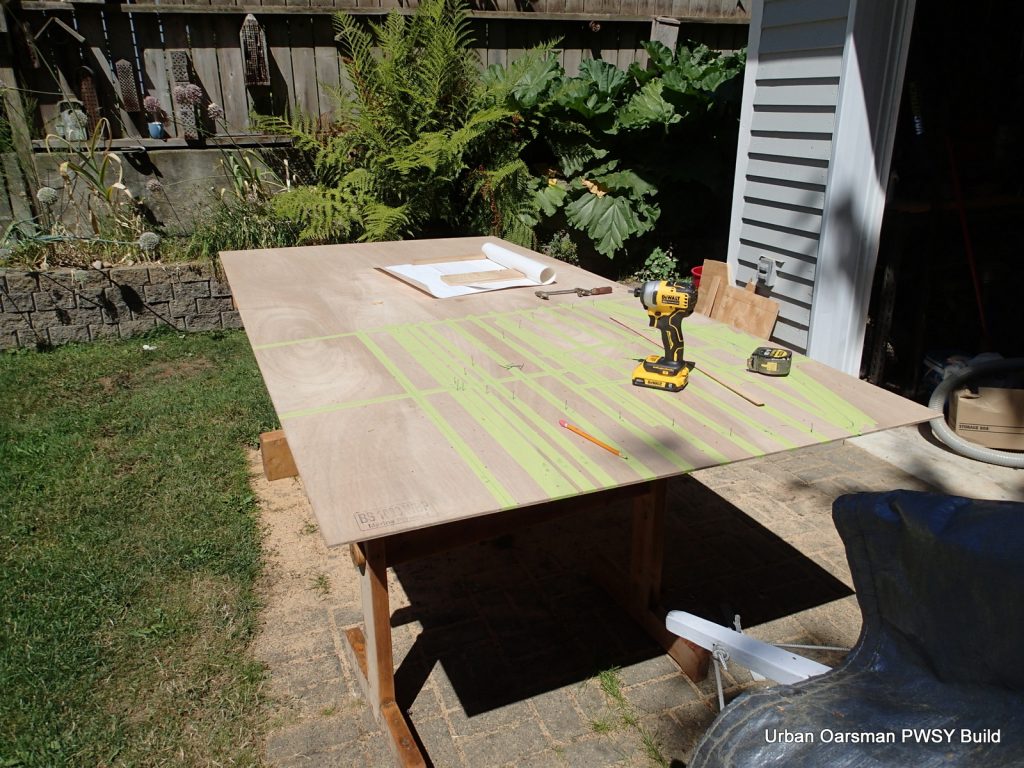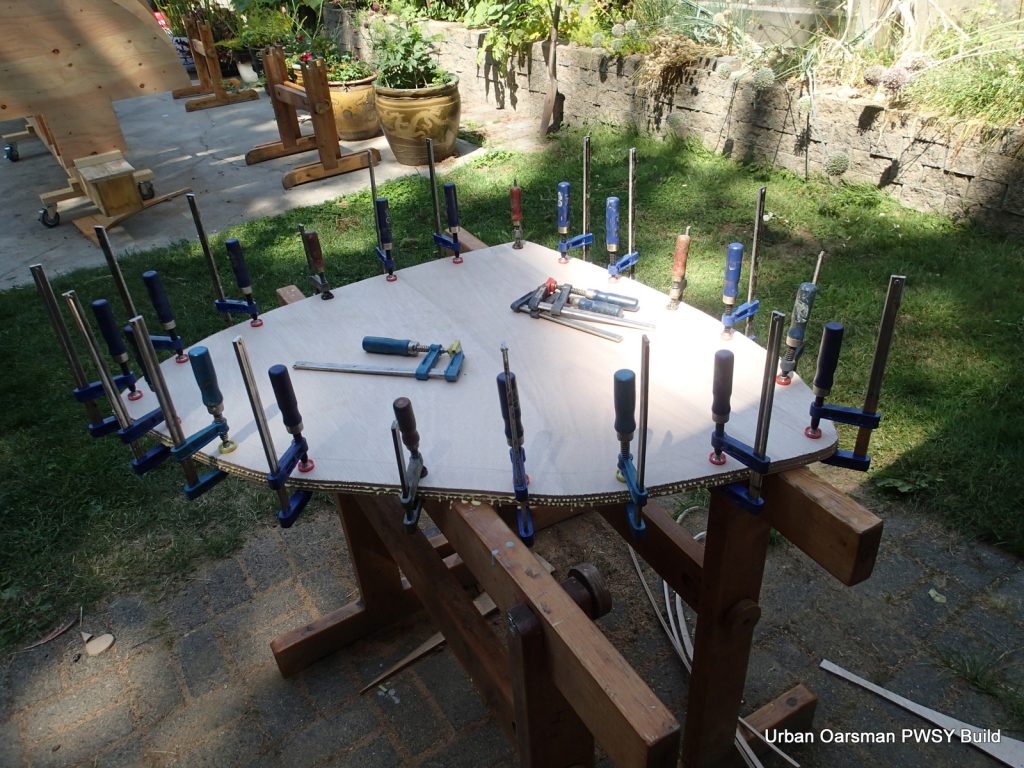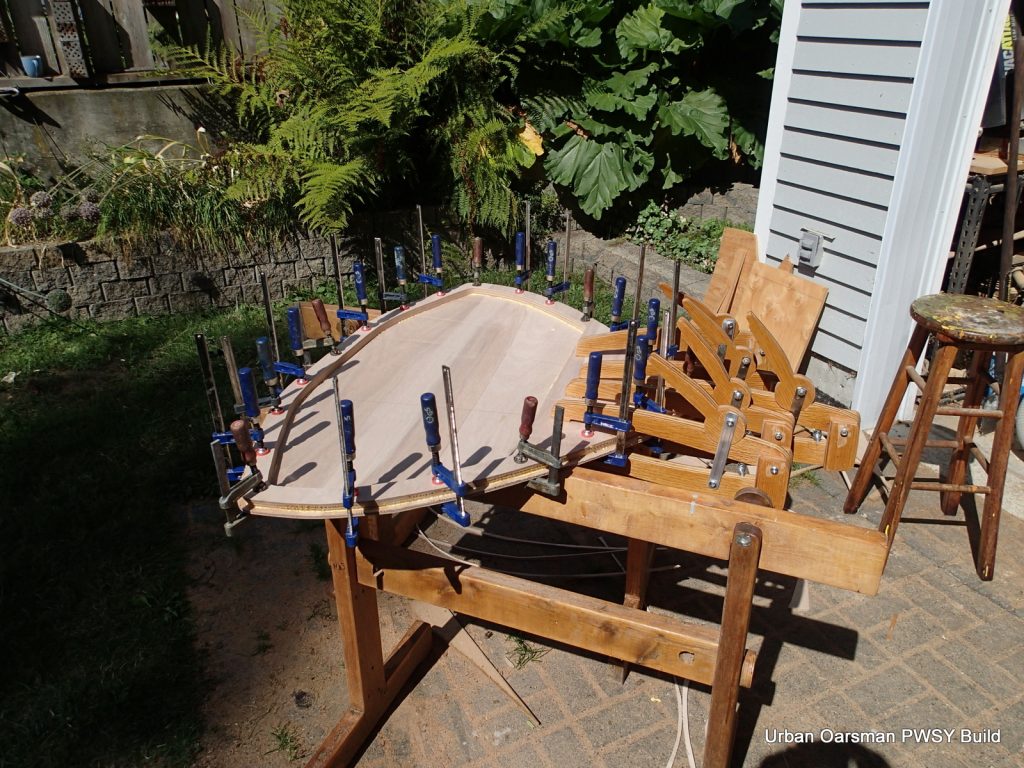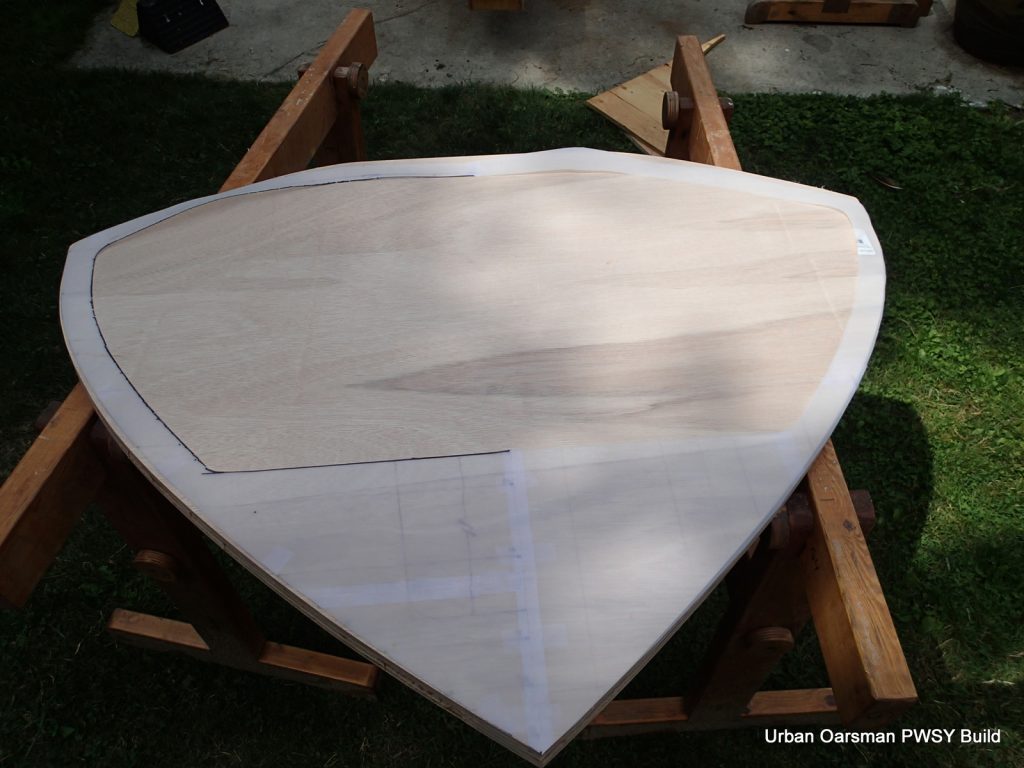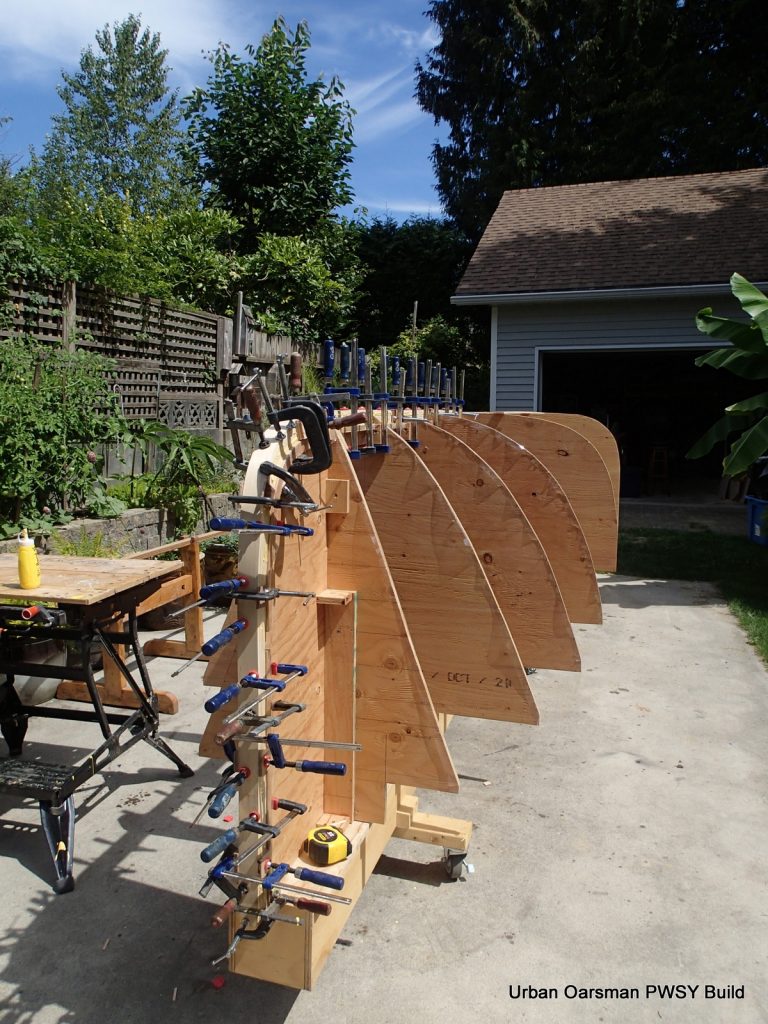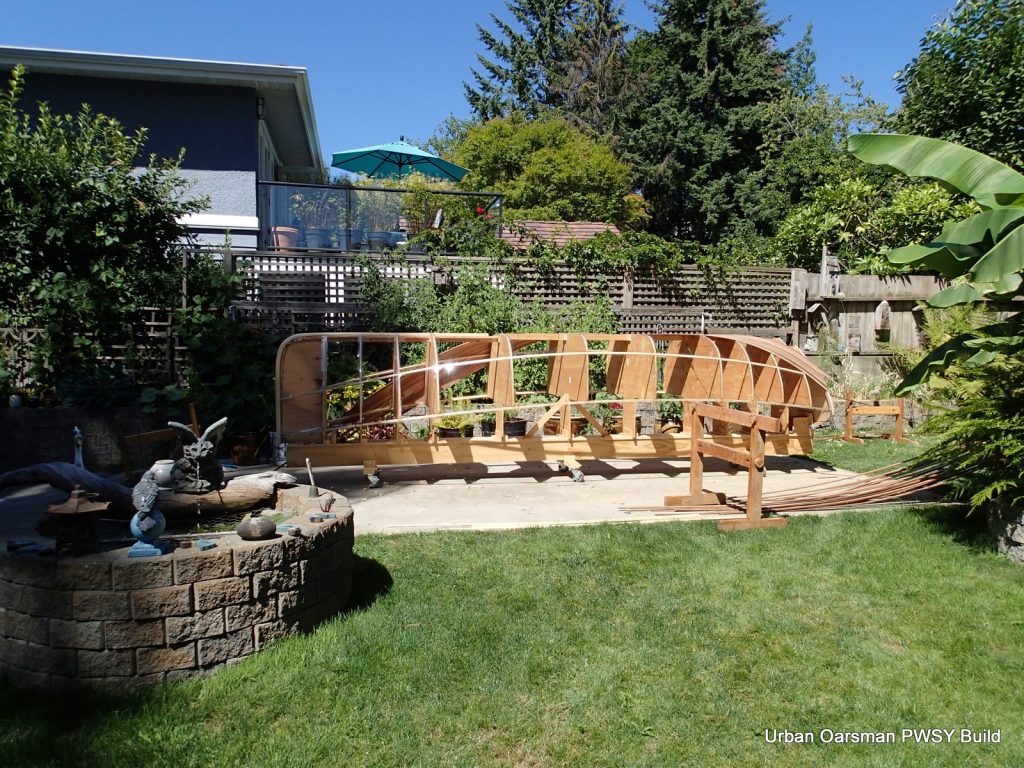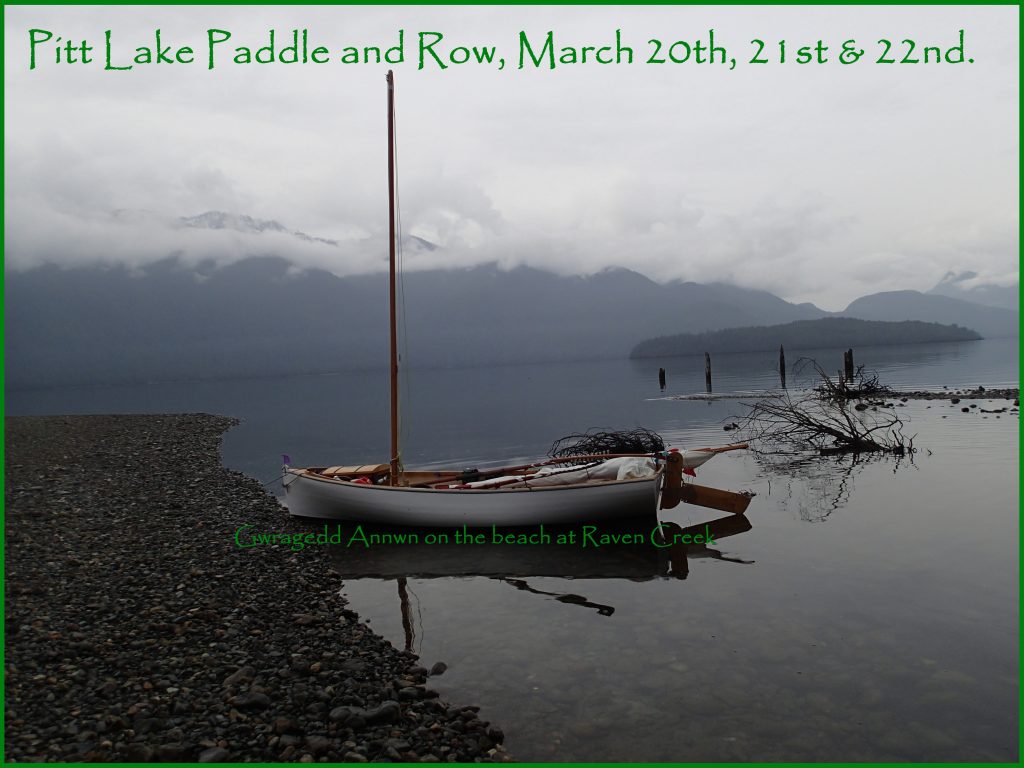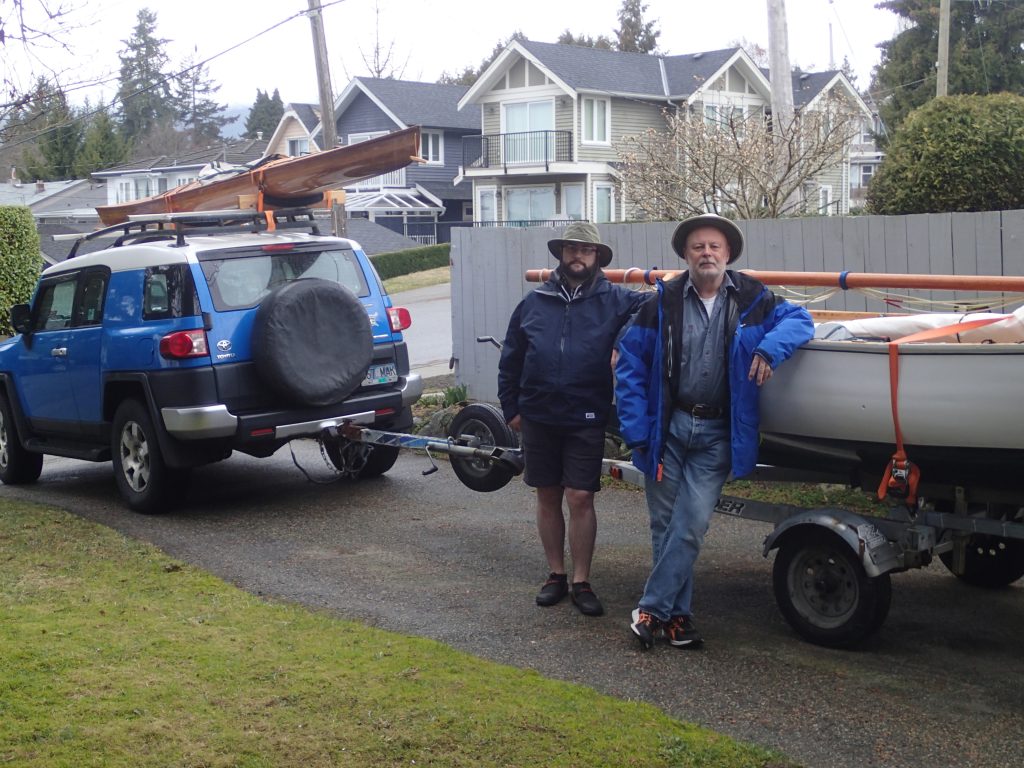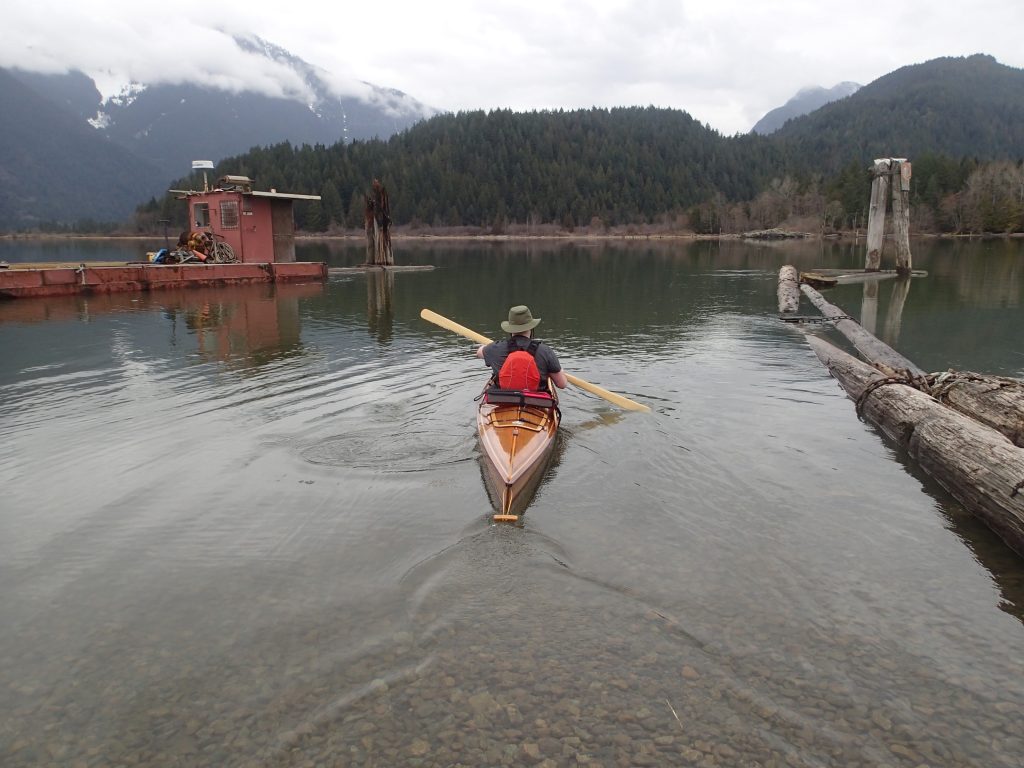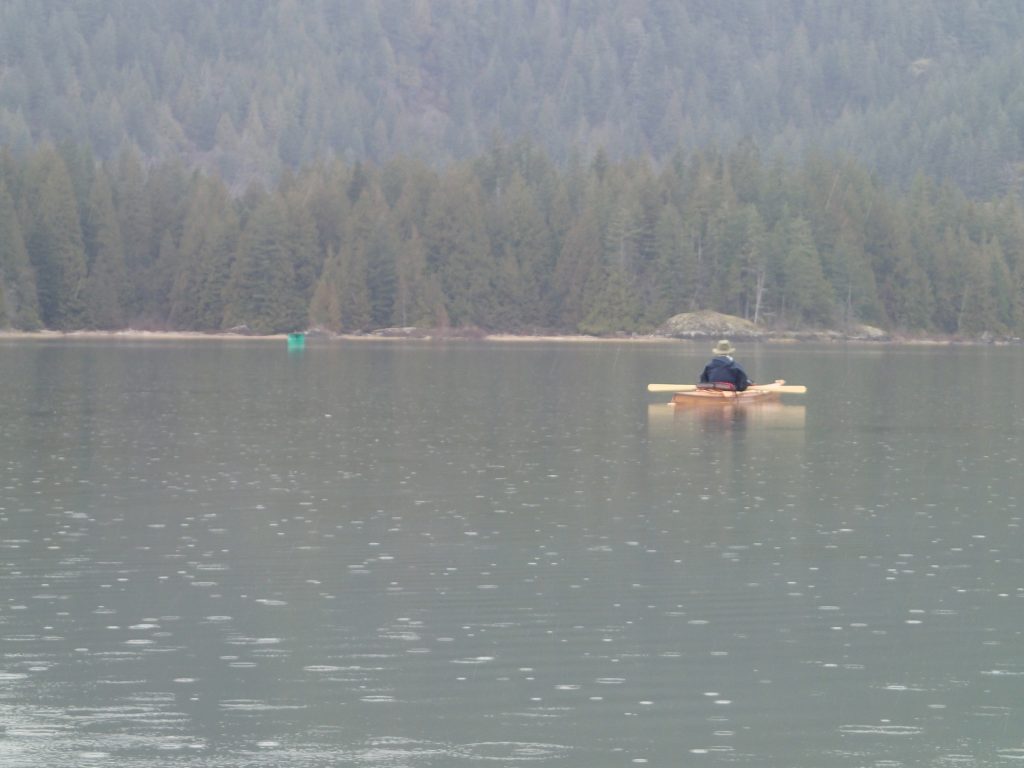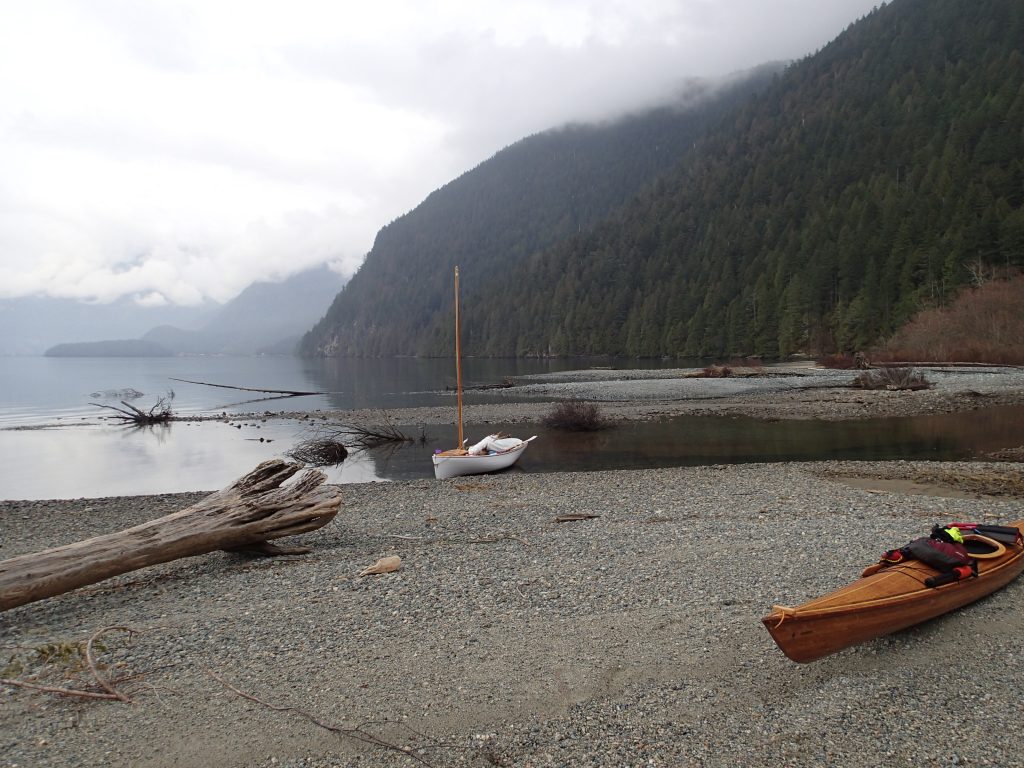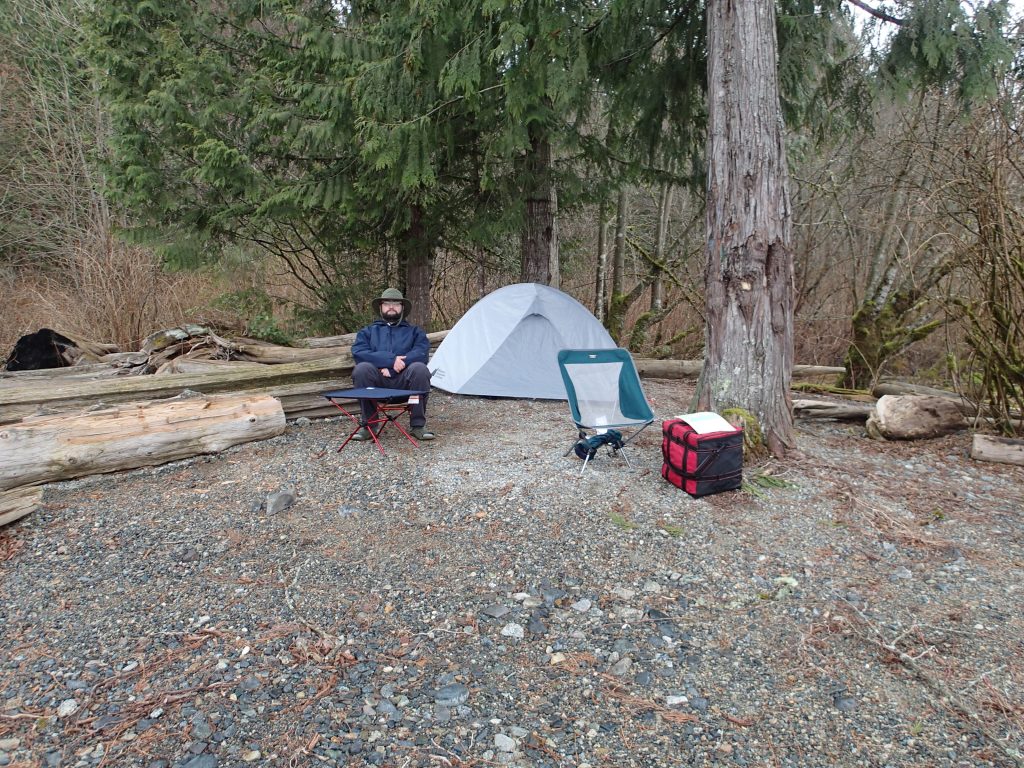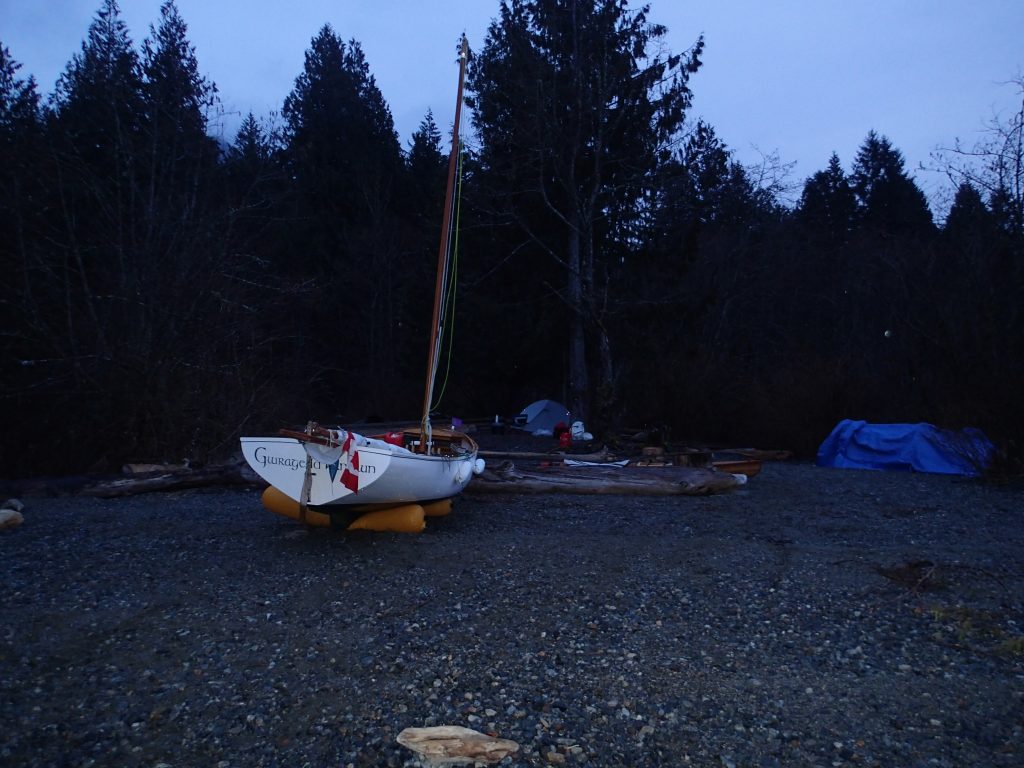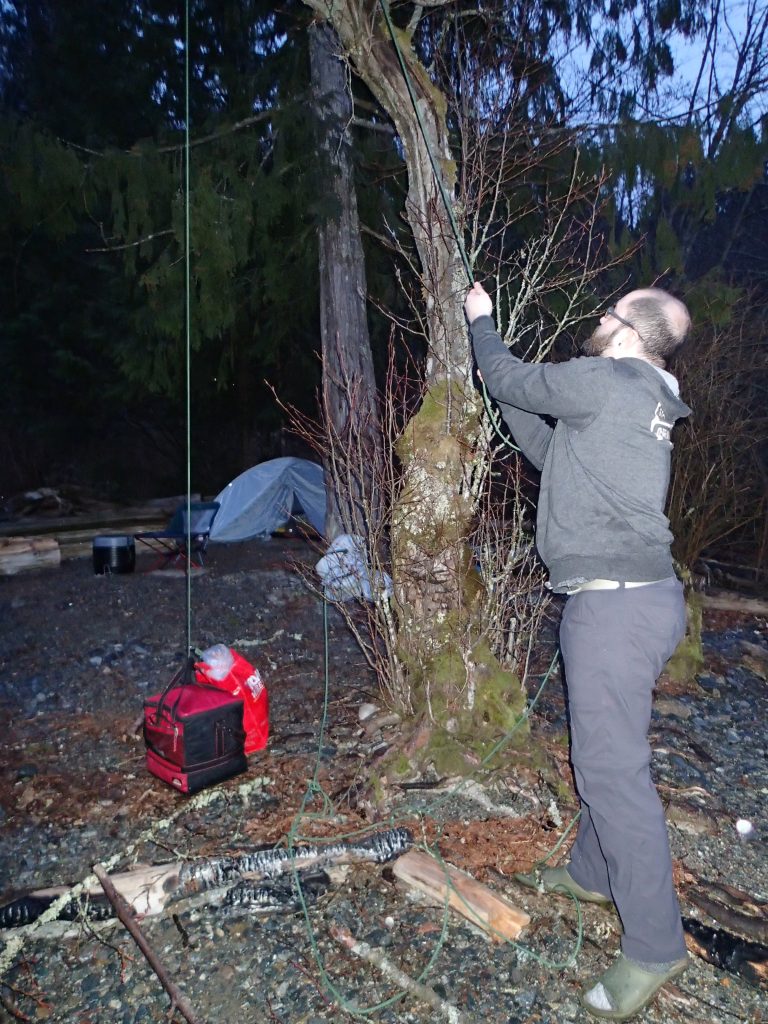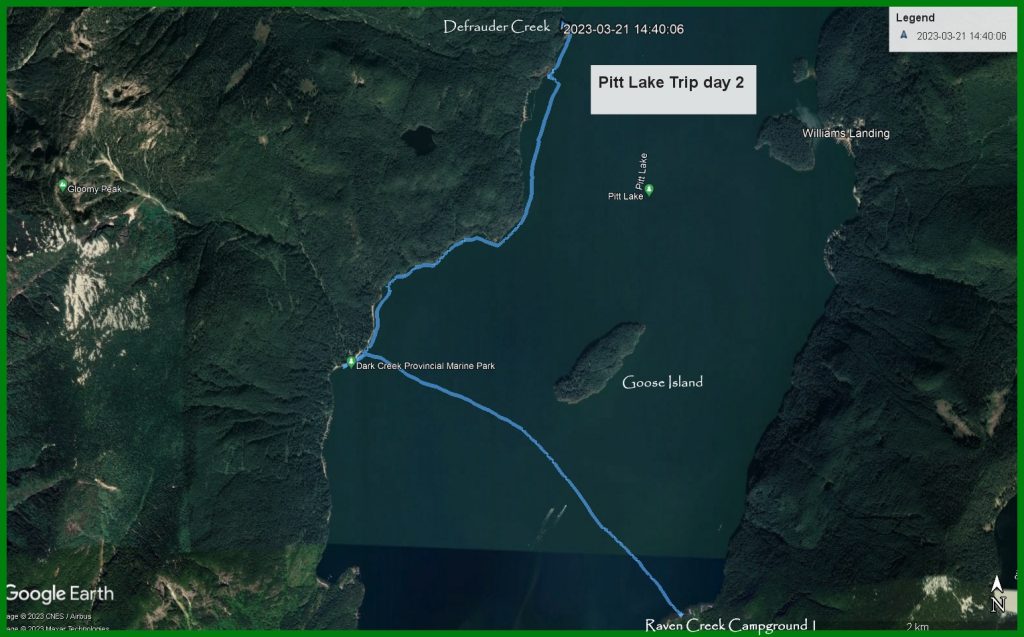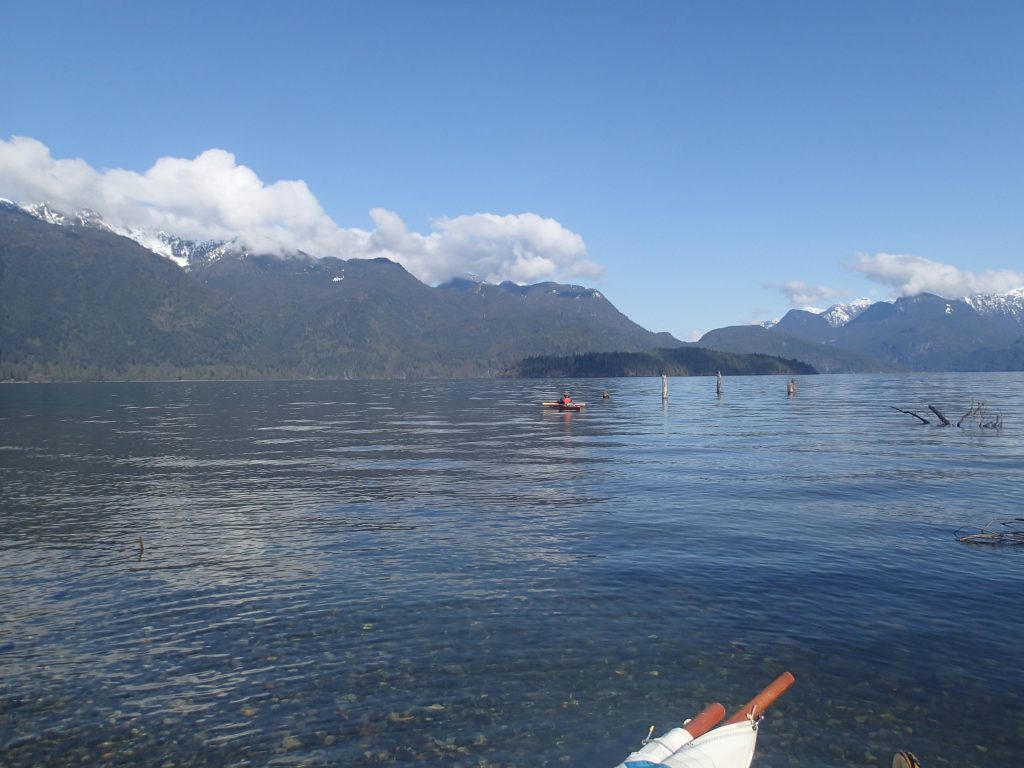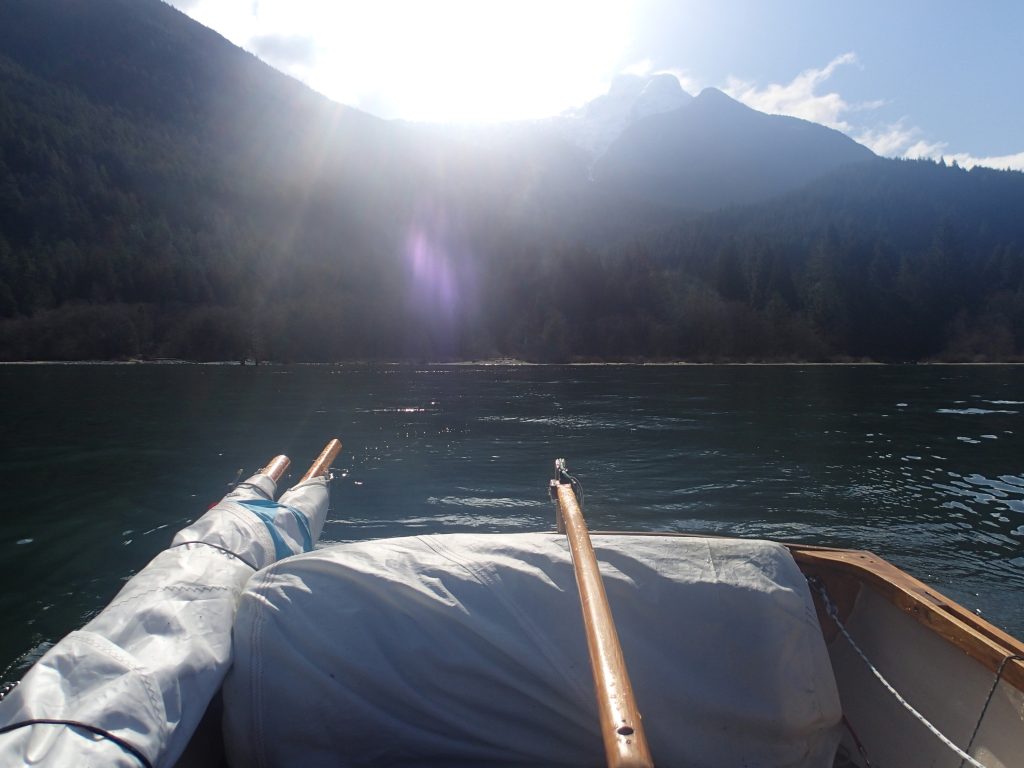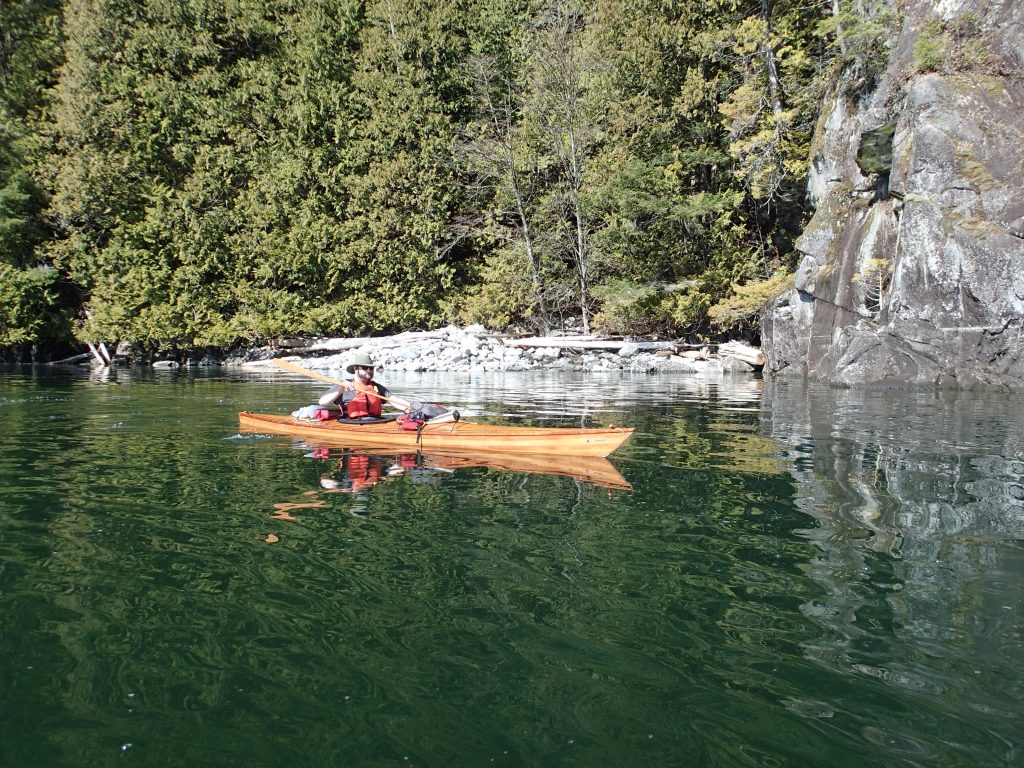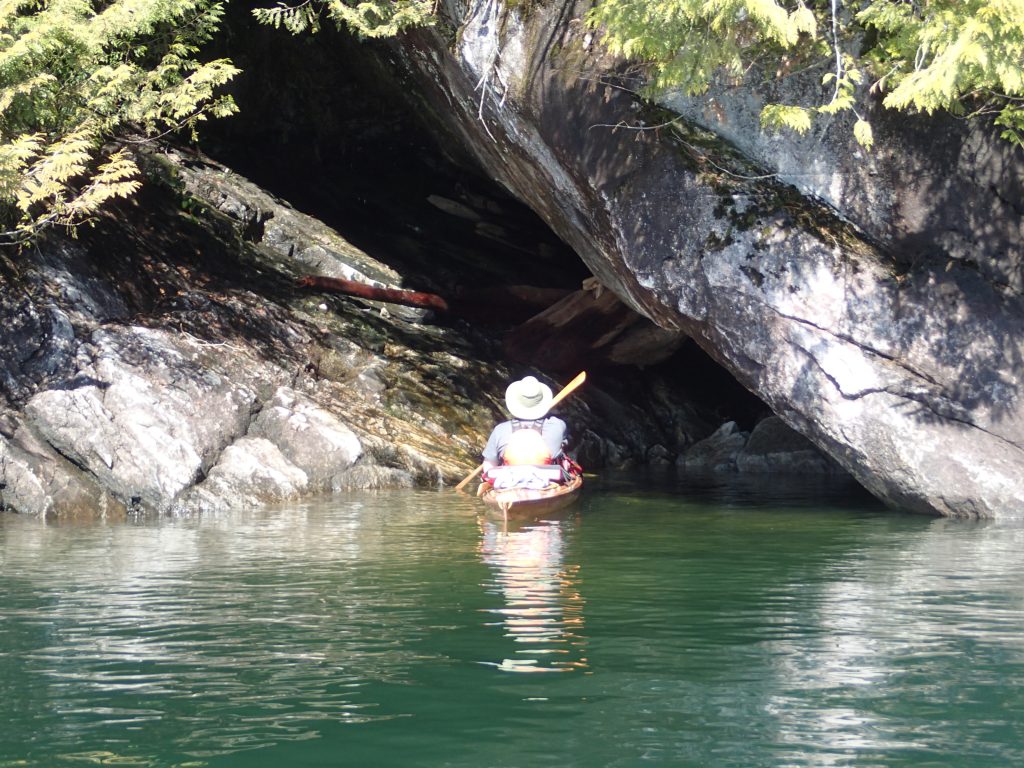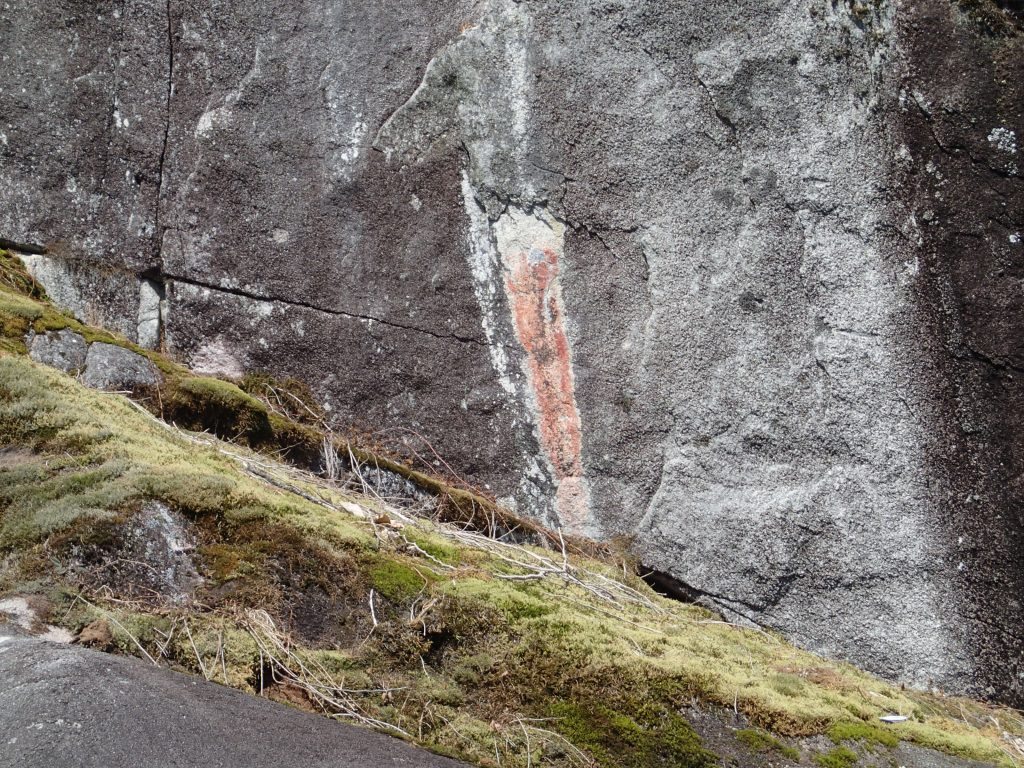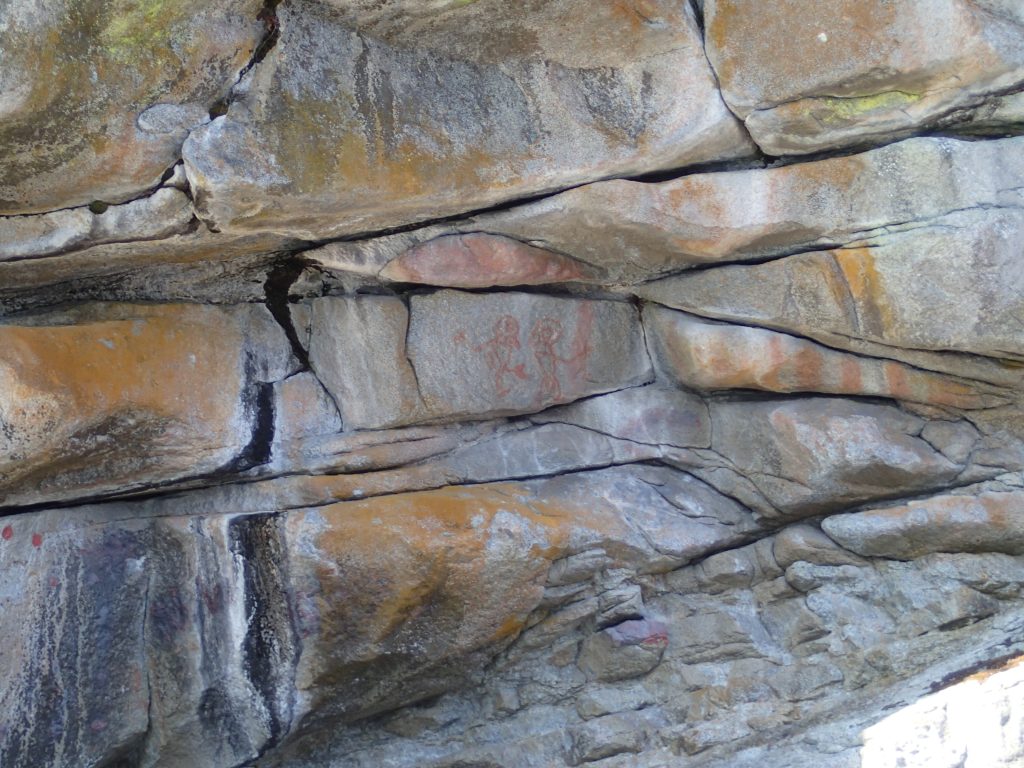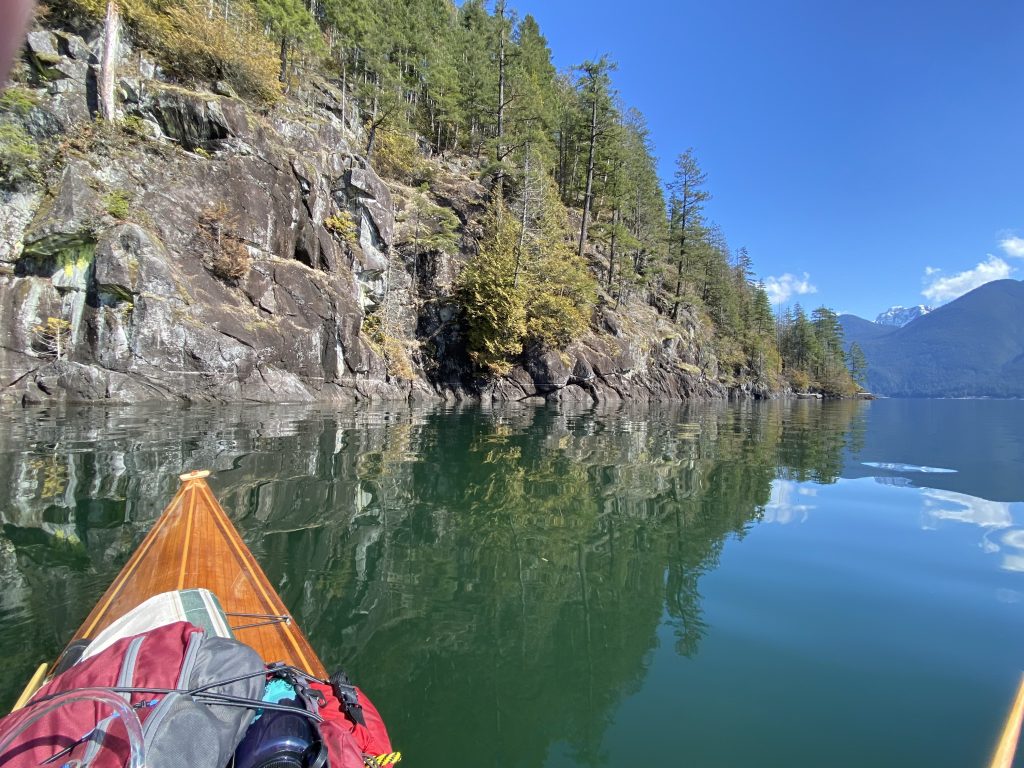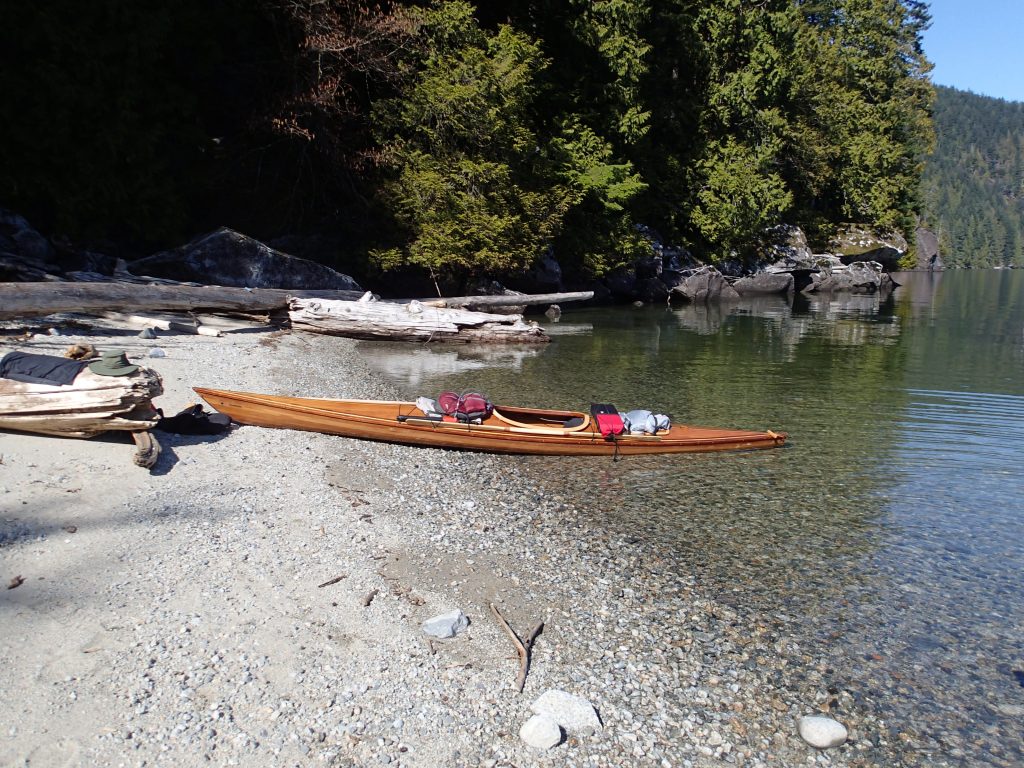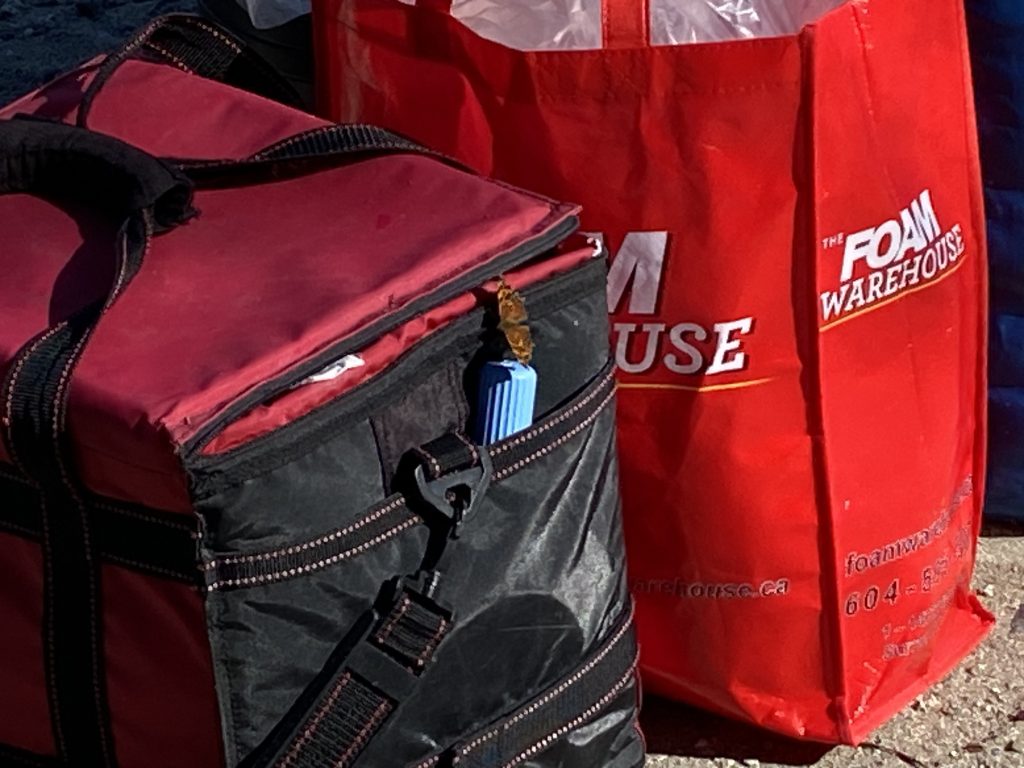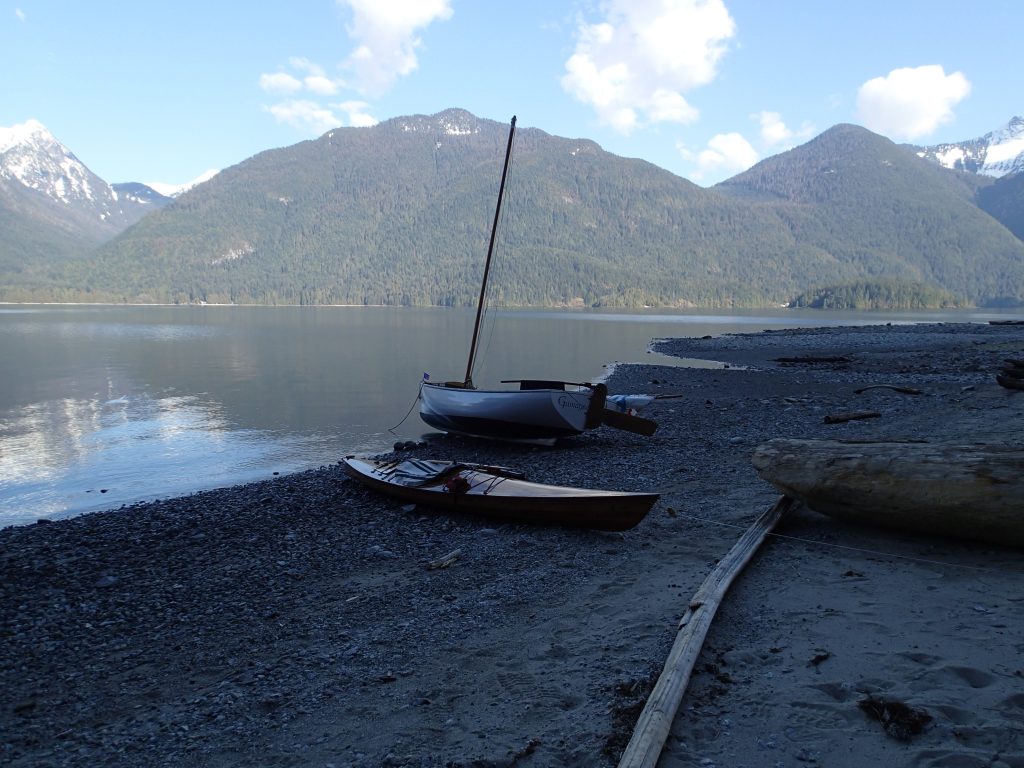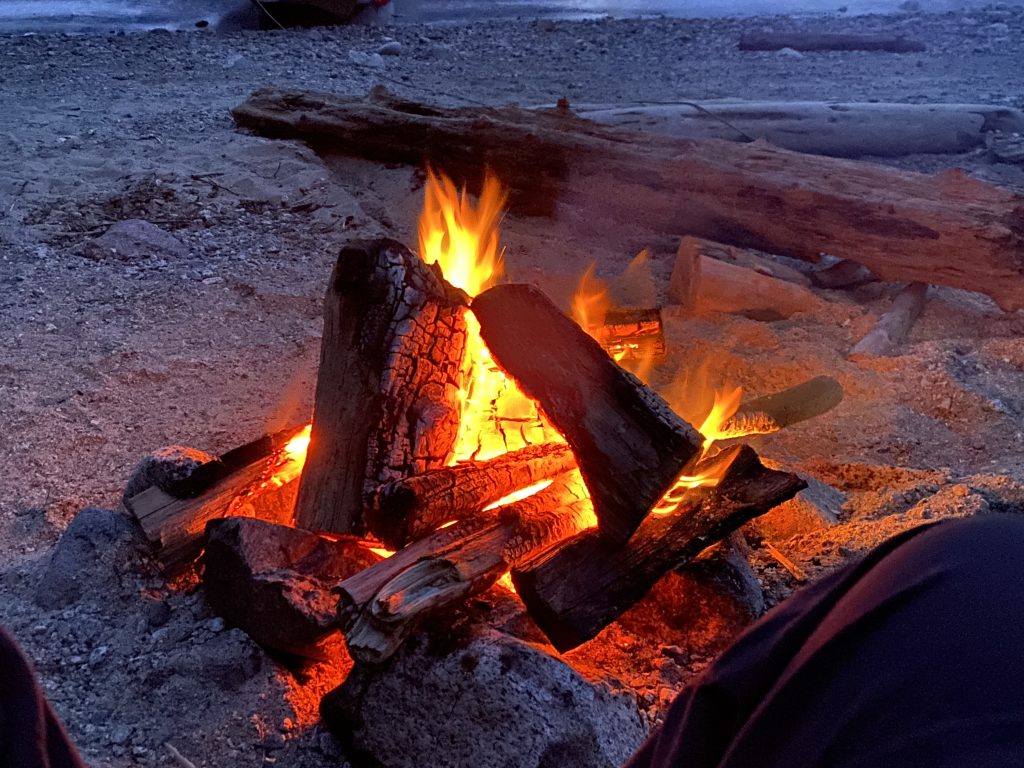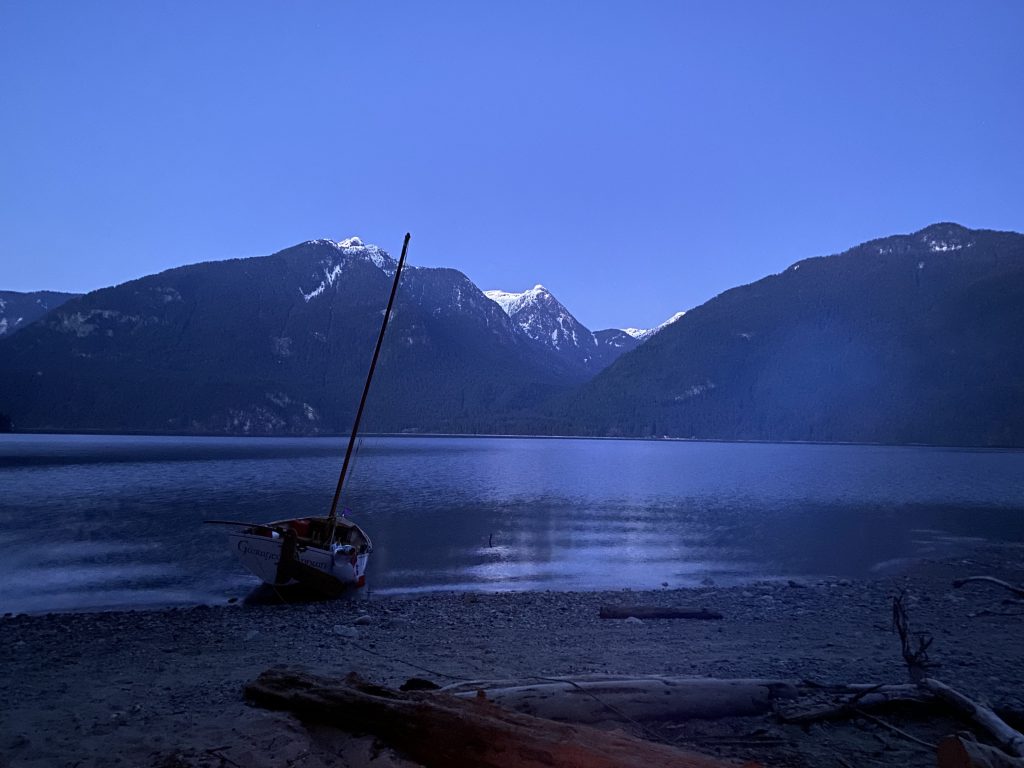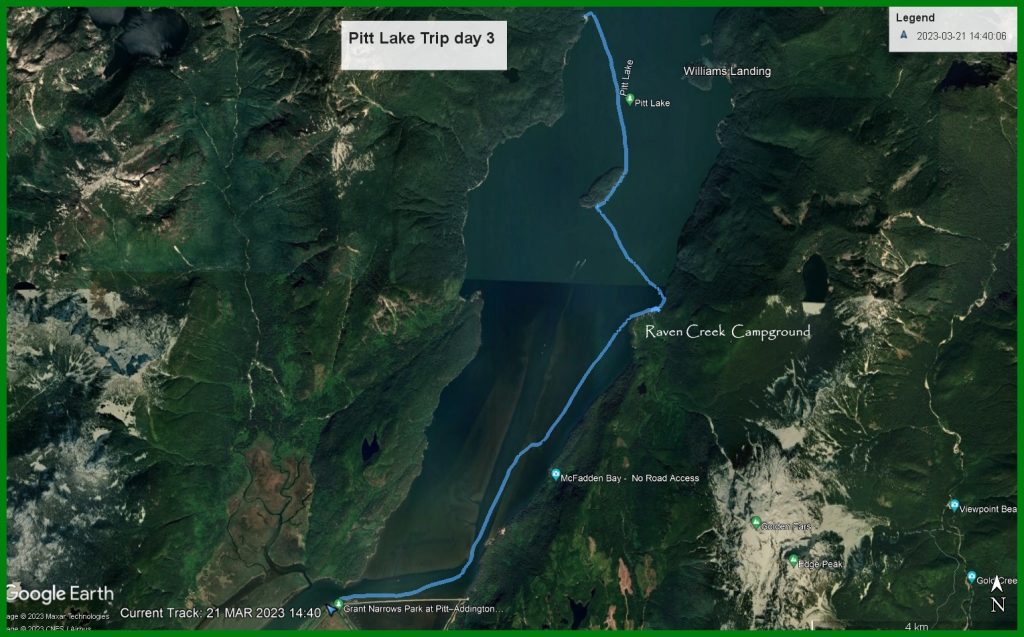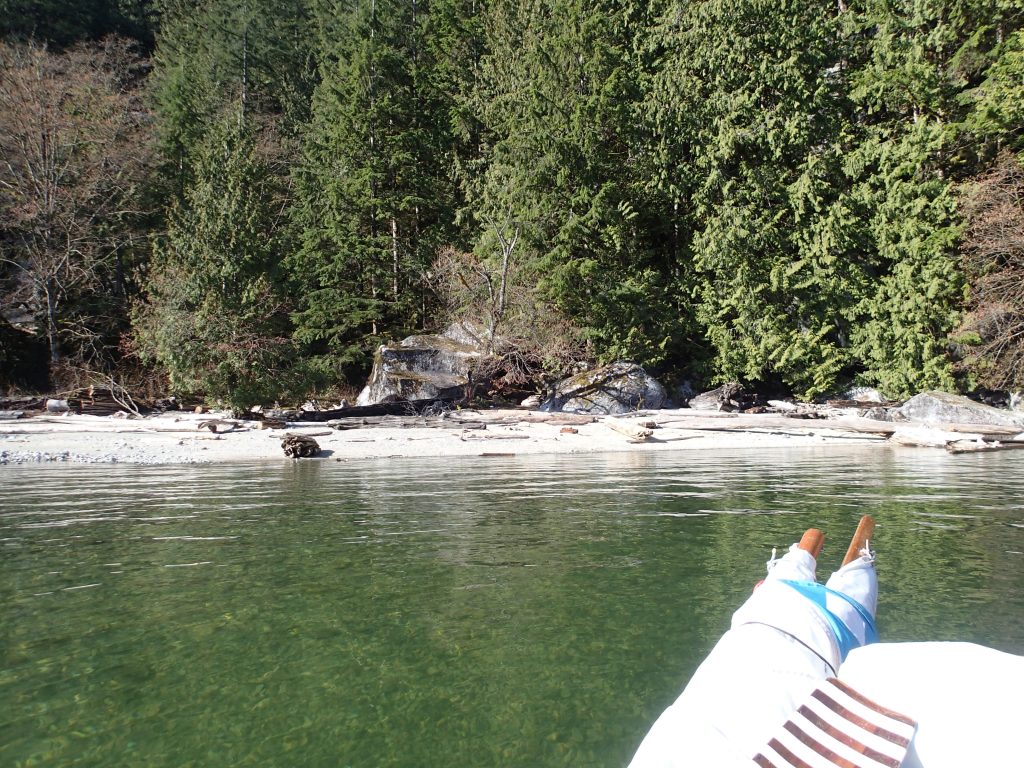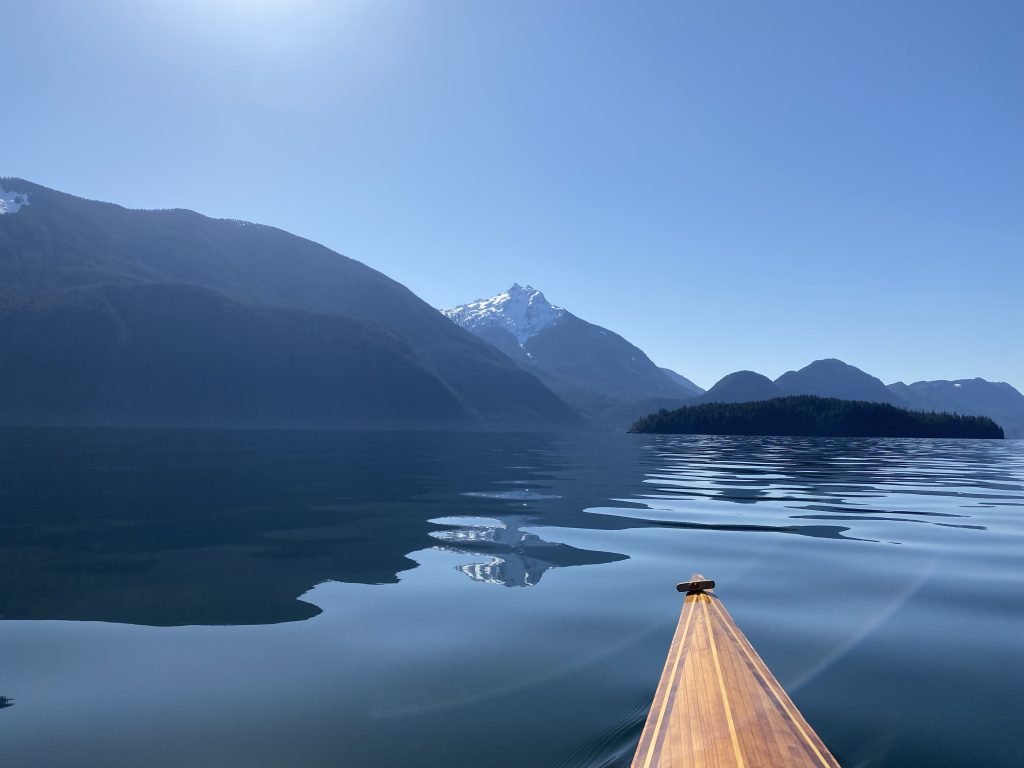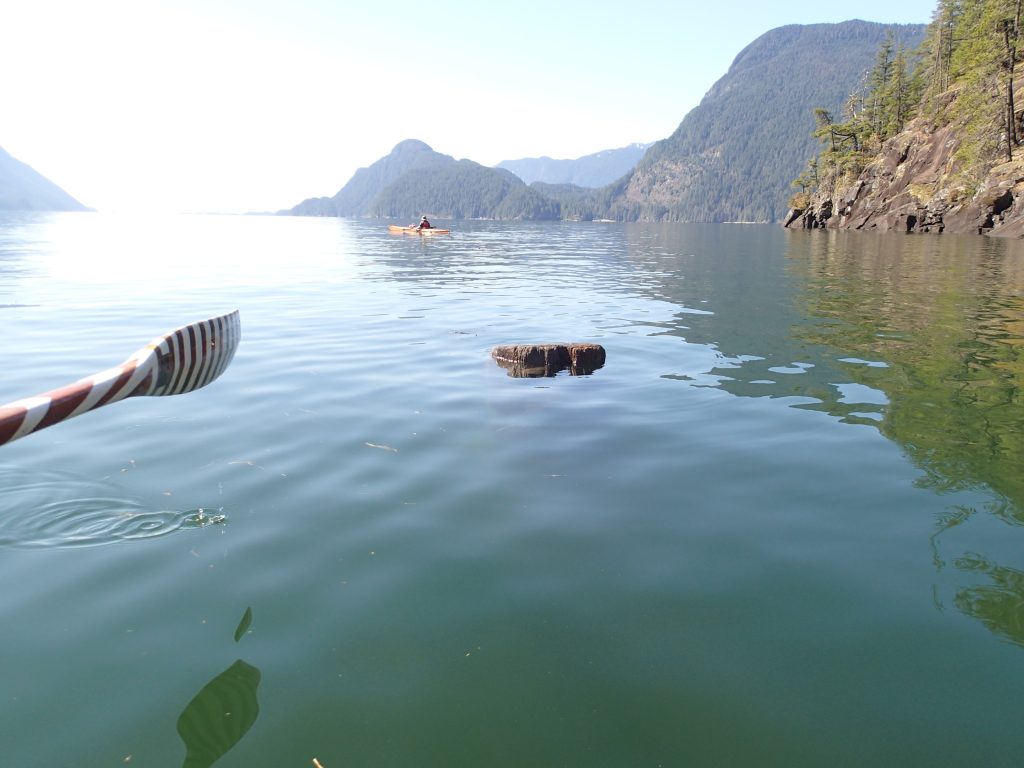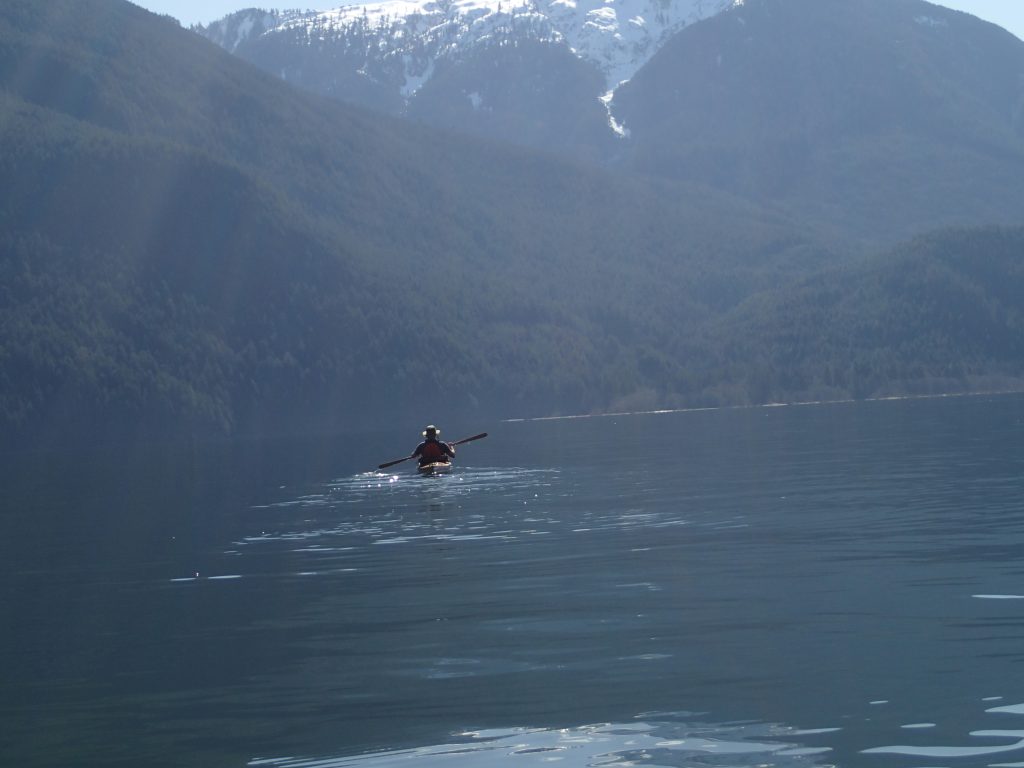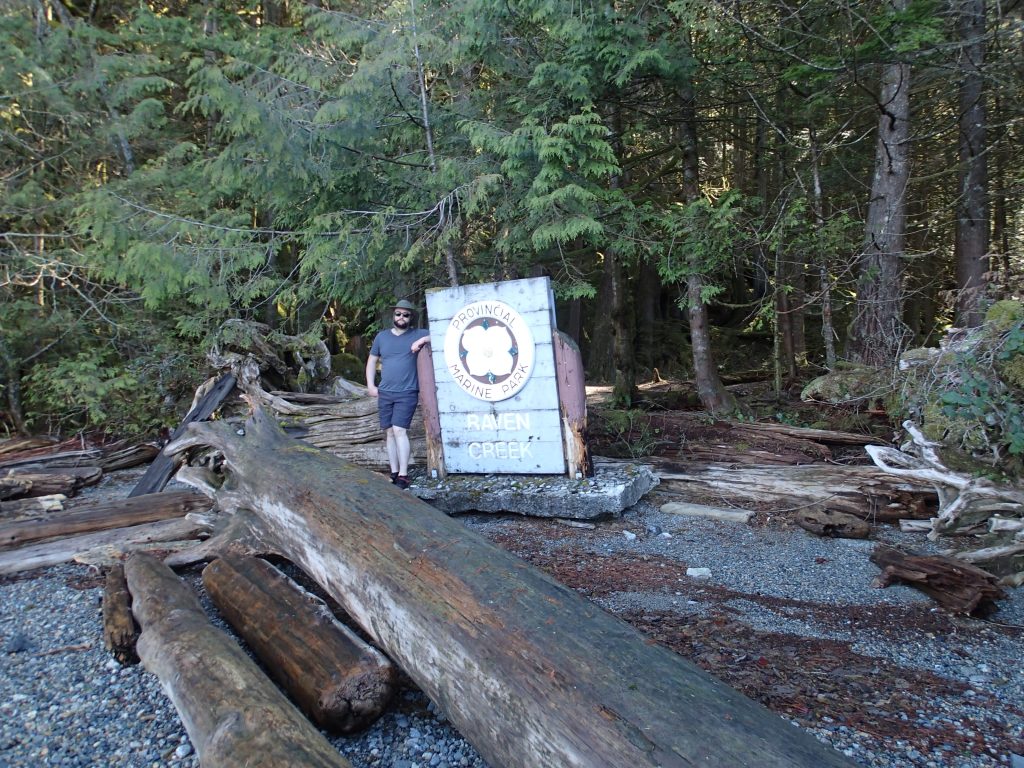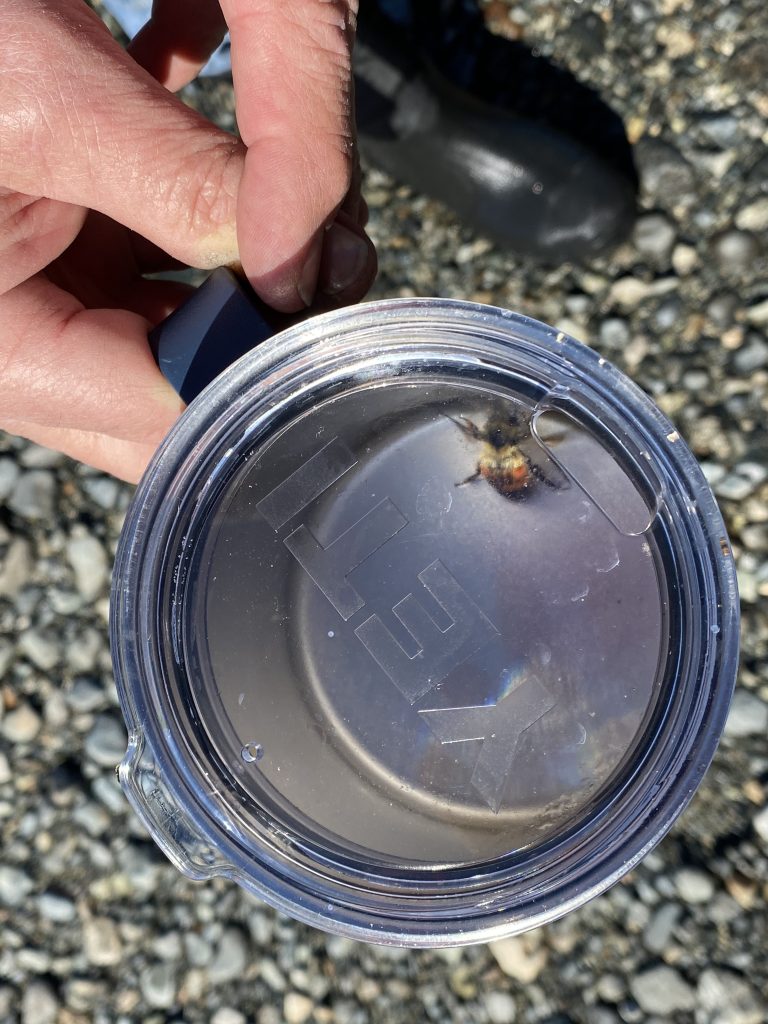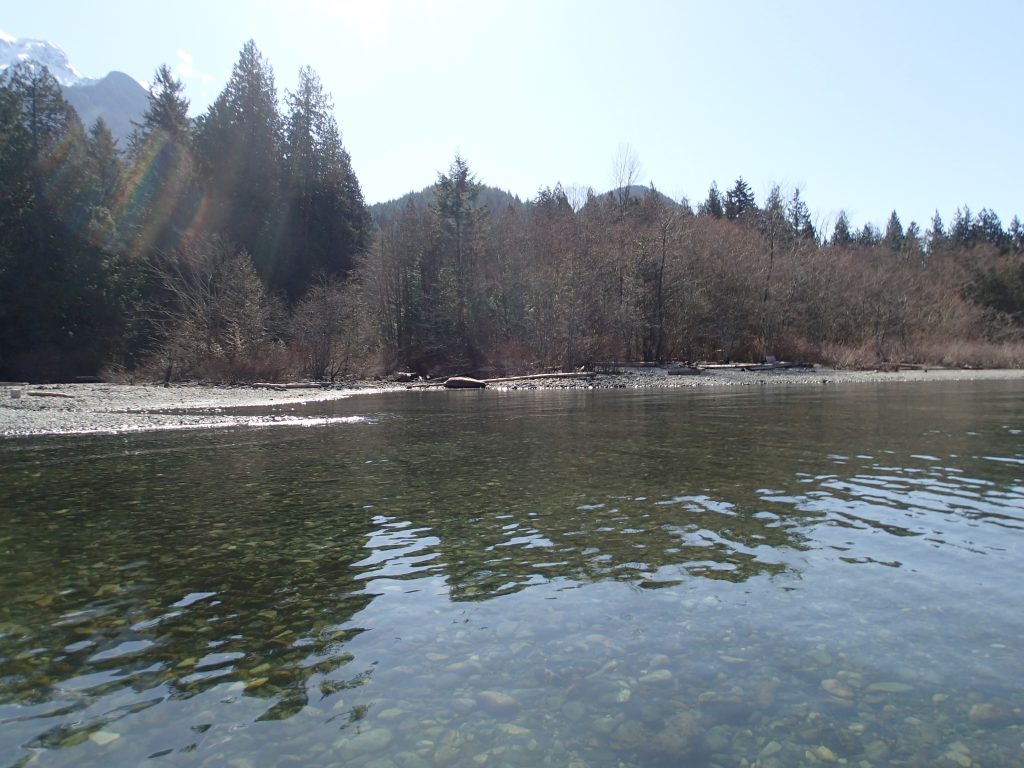Working out the rigging and a test sail.

Turadh rigged, with the sails furled. In future, I will furl the main sail with the sprit boom against the mast.

Close-up of the main halyard winch and the two clutches. One for the halyard and one for the sprit boom snotter line. I have given the cuddy hatch two hand rails similar to the cuddy top railings.

The transom showing the mizzen sheet fairlead hole being fitted. You can also see the main sheet ratchet block.
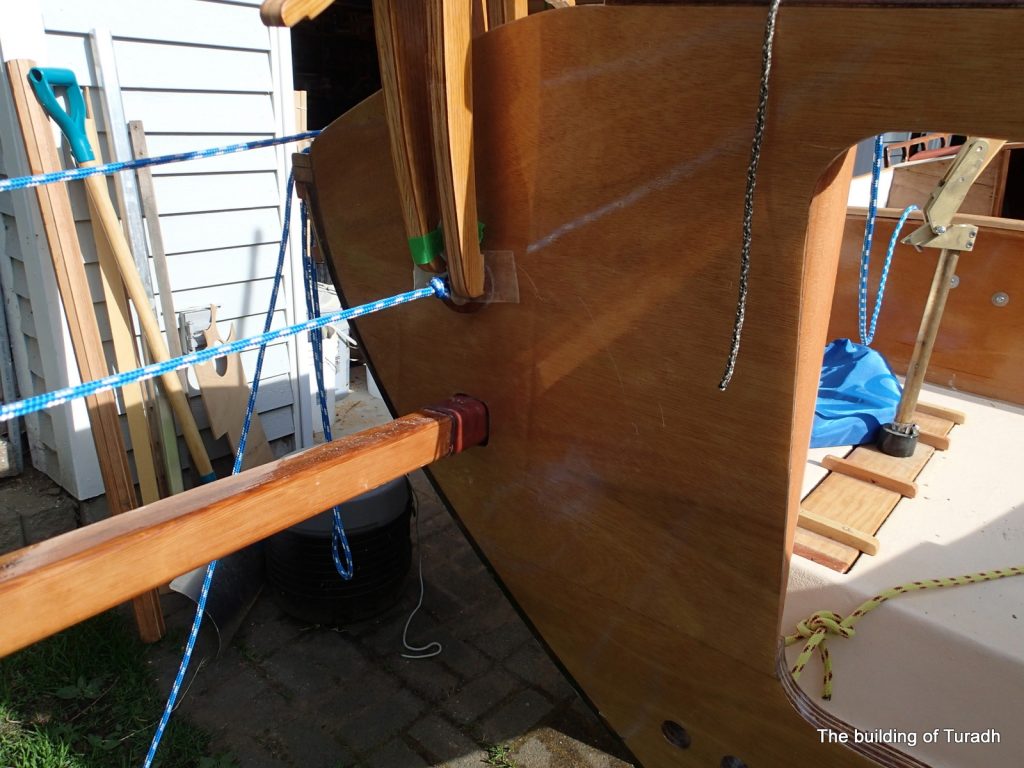
Exterior of the transom shot. If you look through the motor cut-out, you can see that the runner tiller can be moved upright to get it out of the way of the cockpit. The boomkin has leather chafing guard where it enters the transom.
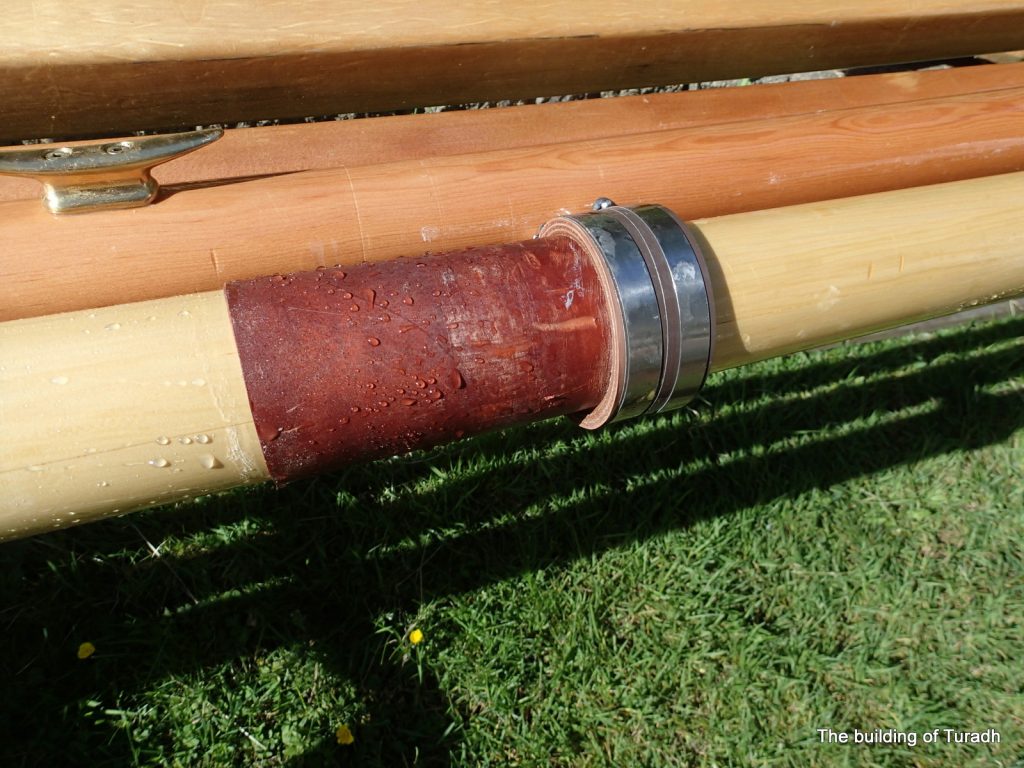
The leather collar on the main mast. When the mast is in place, and the stainless steel mast collar fastened, this collar will keep the mast from falling through the ss mast collar if Turadh should turtle.

Checking out the first reef (94sqft) in the mailsail. Bolger, sadly, does not go into a lot of detail about how to reef this rig. What I have found with my Mirror Dinghy’s Gunter rig is that it is very hard to reef. Where the halyard attaches to the main spar is fixed and if you reef by simply dropping the spar to the first reef point, the angle of the spar will no longer be parallel to the mast. To fix this, I have made three attachment spots for the main spar. One at the correct height for no reef, one for the first reef and another for the second reef. This does complicate reefing. You have to lower the sail and spar so you can disconnect the halyard from the unreefed attachment point and re-attach the halyard to the first reef point. This is what has been done here. Notice how parallel the main spar is with the main mast. I guess that I will reef in advance, before setting out.

Checking out the second reef (67sqft). I have lowered the main spar and reattached the main halyard to the second reef point attachment spot. You can see that the entire rig is lower now. The main spar is parallel to the mast.
From Phil’s book “Different Boats”:
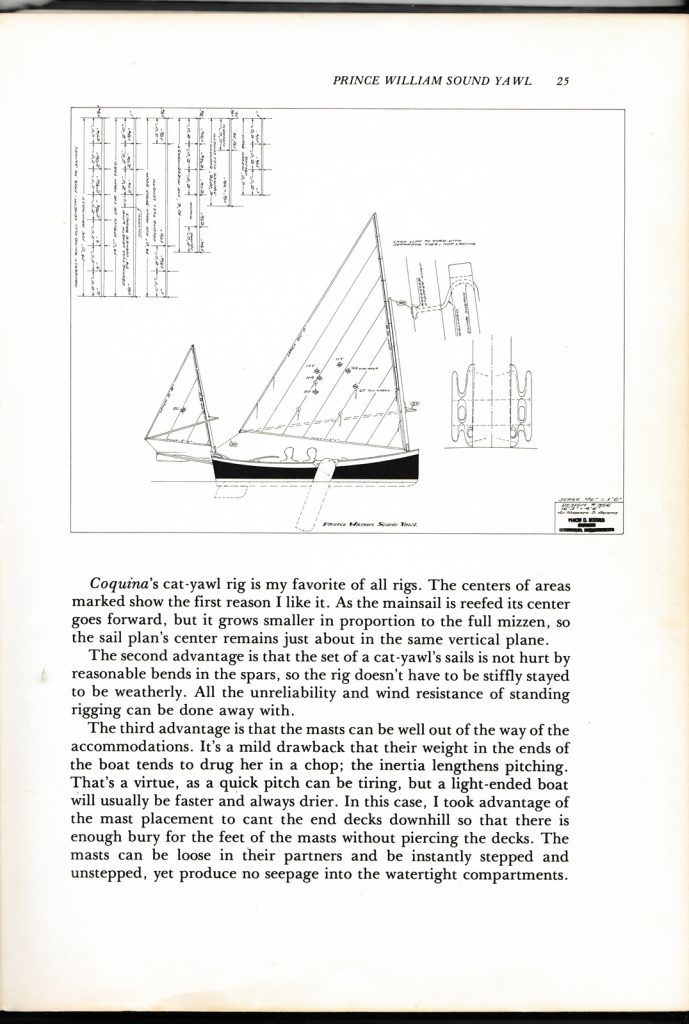
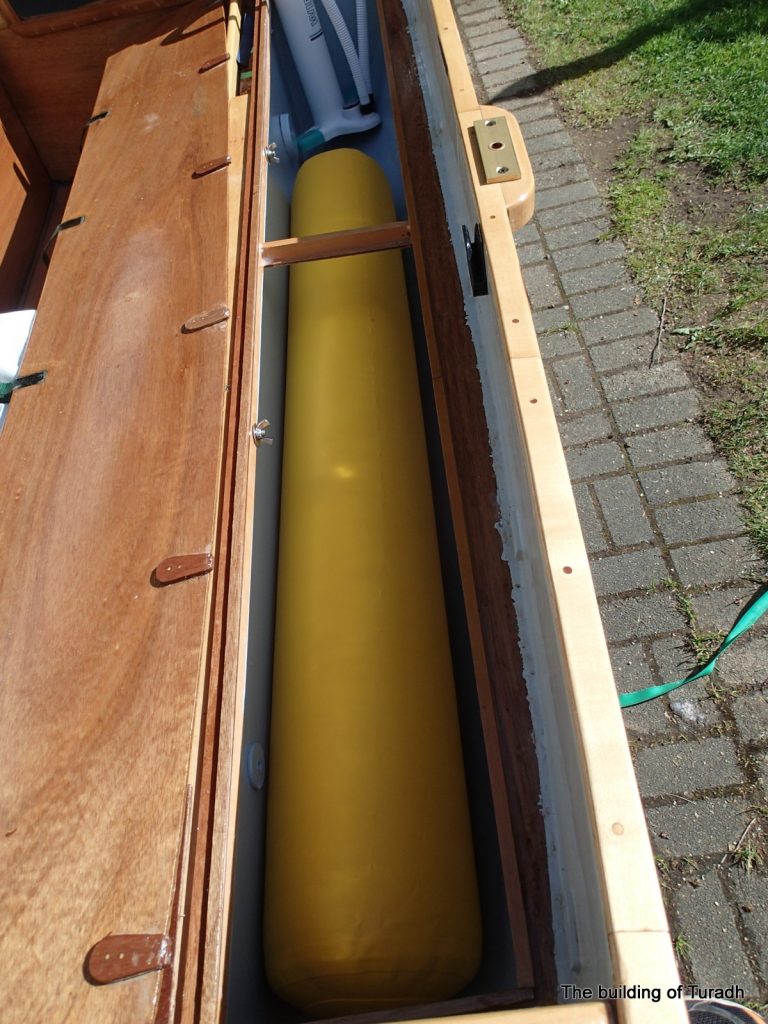
I bought two Aeré Beach rollers from Duckworks in Port Townsend. They serve as both buoyancy bags and beach rollers. Fit nicely into the seats. The pump fits in nicely too. The two wing nuts to the left of the seat storage hold the centreboard case top in place.

Shot showing the rowing compass on the stern moveable seat. The mizzen sheet enters through the transom via the round bushing, goes to the turn-around block on the bulkhead and to the jambcleat. Against the Starboard seat front is the cotter pin that holds the centreboard up.
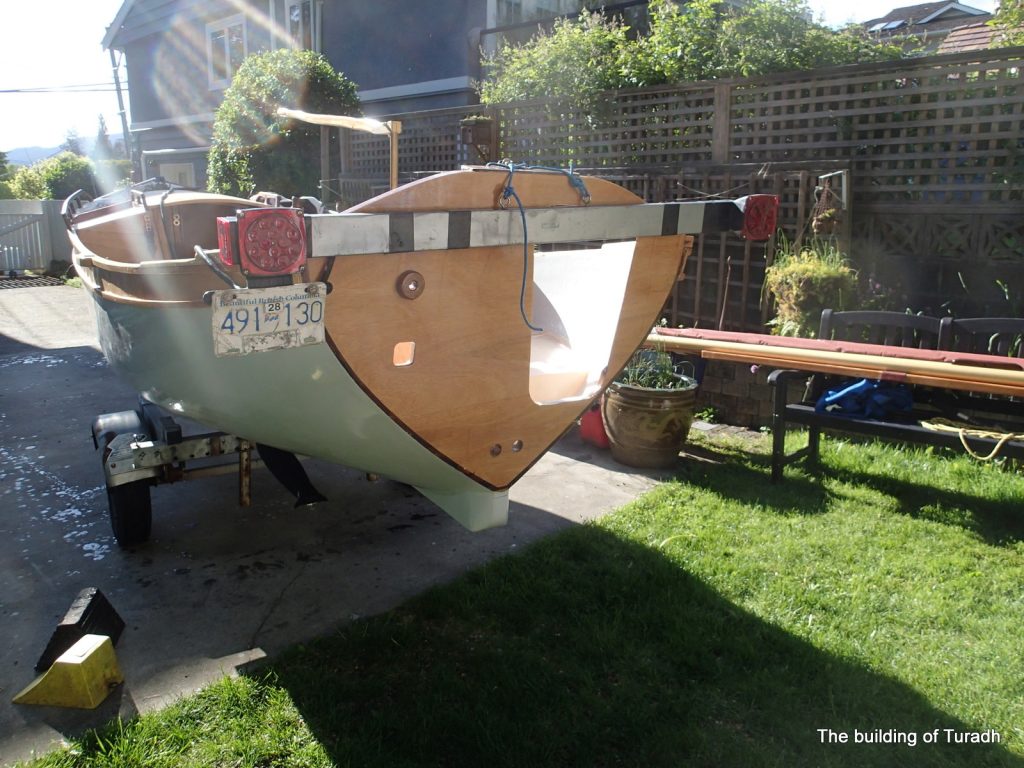
Shot showing the light bar attached.

Turadh on her trailer, ready to go. Spars, sails and oars secured for the trip to the launching ramp in Squamish. Note that the rudder down for the trip.

Away we go. My son, Matthew, will be kayaking with me. He wants to explore a kayaking camping site know as Tantalus Landing Marine Site (Sea To Sky Marine Trail In Howe Sound).

Rigging up at the Squamish boat launch. Took about one-half hour.

Turadh rigged and in the water. This is one of the last photos. Sure looks flat here. Generally, the winds in Squamish do not start up until about 11am. It is 9:45am. when we set out. As soon as I pushed off, the winds started up. Inflow, gusting to 15kph. Unless the centreboard is down, Turadh goes sideways very easily. There is actually a lot of windage on the hull. I found it very hard to row any course. With my hands full, I had to drop sail and motor. The rudder was not very effective without the centreboard. The centreboard did not want to stay down. My temporary rig to keep the centreboard down did not work very well. I found that by using the Torqeedo much like a conventional outboard (i.e. steering with it) I could steer the boat. Turadh did very well with the Torqeedo, moving into the wind and gusts, easily at 5kph, the speed Matthew was paddling at. The Torqeedo said that I had almost 40 kilometres of range at this speed. Pretty good heading into the wind and surf. The swell is just starting to break.
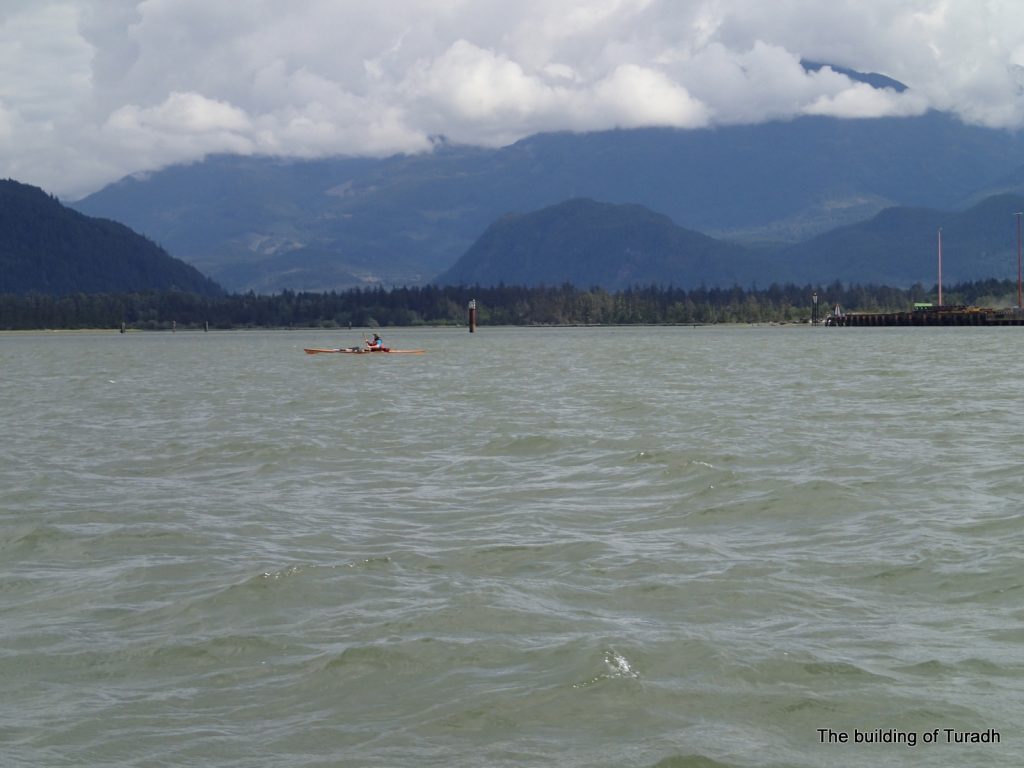
With the wind gusts topping 25kph, the going was very slow to Tantalus Landing. The mizzen was indeed a steering sail. With my hands full, I did not get a lot of photo ops.
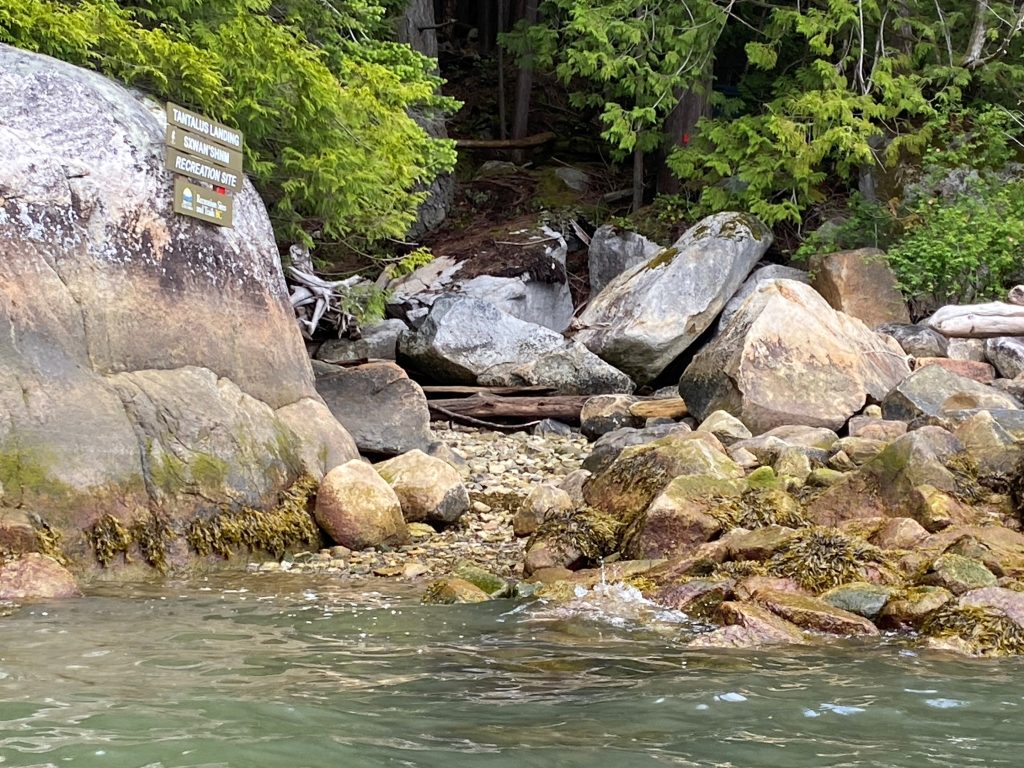
After three hours, we reached Tantalus Landing. We found an unbeachable landing site under the conditions. At mid-tide, there is a rock shelf, strewn with large cobble that could be used, but there were large angular boulders at the high and low tide lines, making landing at this tide impossible. Too deep to anchor just offshore.
The winds were a little calmer against the cliff face, so I raised sail and motored out into the wind. When I got into the wind, Turadh just took off. Under full sail, I was doing over 10 knots!!! Wing on wing, she was very steady. I was leaving Matthew far behind. To slow down, I let go both sheets. With the sails streaming downwind, I slowed to 2 knots. I was having a problem keeping the centreboard down, hanging onto the sheets and the rudder at the same time, so, no photos. At the same time, Matthew was having a hard time paddling so no photos from him either.
I was being blown towards Squamish and a rocky shore. I decided to drop the mainsail, furl the mizzen and motor the rest of the way in.
LESSONS LEARNED:
- Need to be able to keep the centreboard down.
- Need a tiller tamer.
- Learn how to sail a yawl.
- Reef earlier.
- Have crew.

Well, back to the shop for some “Tweeking“ and re-thinking.
Mike



